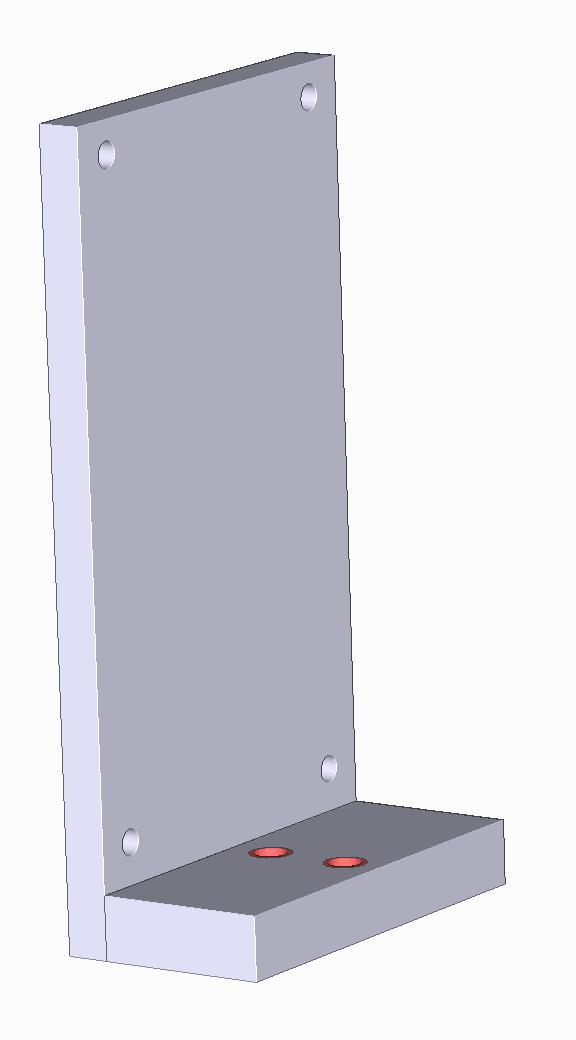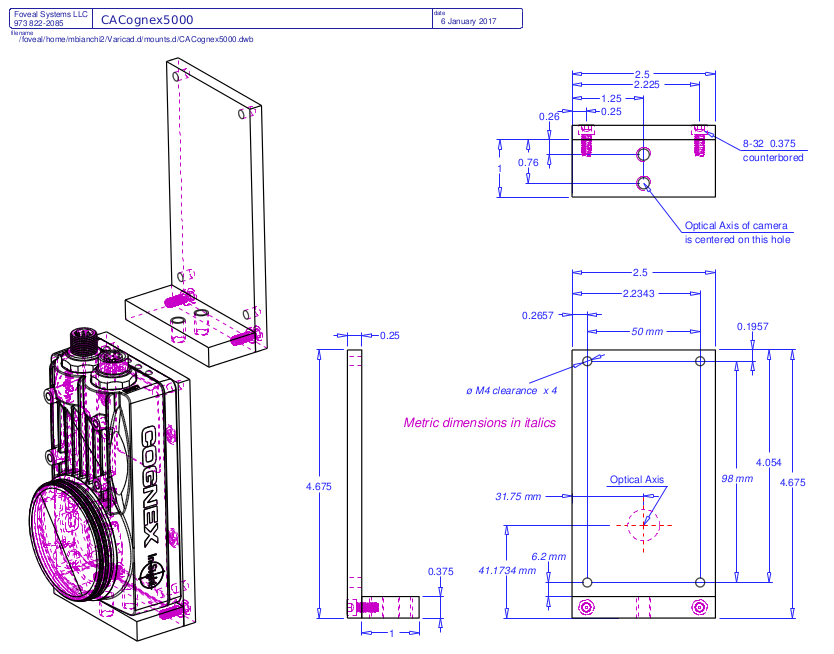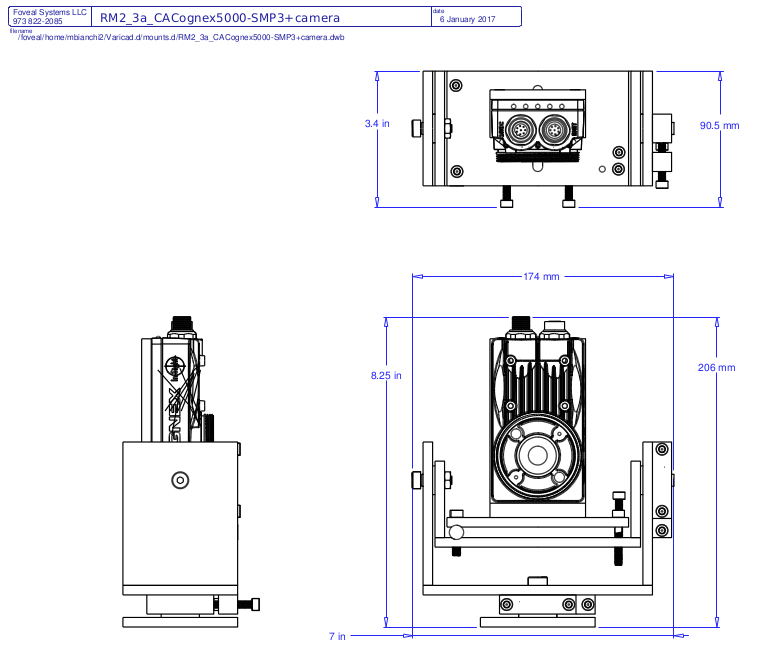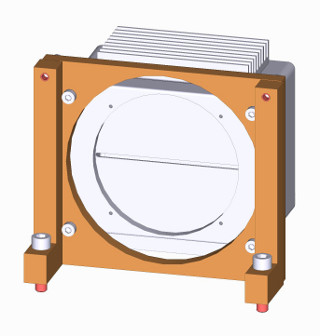This is the entire Foveal Systems website in a single page,
in the same order as the Site Map.
It is here as a convenience so you can see, search or print out
the entire site all at once.
The AutoAuditorium System home page is:
http://www.AutoAuditorium.com
The Foveal Mounts home page is:
http://www.FovealMounts.com
The Foveal Systems company information home page is:
http://www.FovealSystems.com
Foveal Systems Site Map

Site Map

|
|
General Information
Detailed Information
Videos
Contact Us
|
|
Papers, Presentations, Articles and Awards
Press Releases
-
The AutoAuditorium System Also Captures Chalkboards Talks
May 4, 2012
-
University of Michigan Installs Another AutoAuditorium System
October 6, 2010
-
First High Definition AutoAuditorium System Installed
October 1, 2010
-
AutoAuditorium Recordings Help Improve Student Performance
September 10, 2008
-
400 AutoAuditorium Lectures Recorded at the University of Michigan
September 24, 2007
-
AutoAuditorium Systems installed at MIT and University of Michigan
October 15, 2006
-
AutoAuditorium Systems Celebrate 6 Years at IBM Research
February 1, 2006
-
AutoAuditorium System Videos Grow 54% at IBM Research in 2003
January 6, 2004
-
AutoAuditorium System Videos at IBM Research Grow 22% in 2002
June 9, 2003
-
Boeing Research Uses the AutoAuditorium System to Span the Miles
May 6, 2002
-
AutoAuditorium Systems Produce Videos for IBM's e-Seminar Service
December 7, 2001
-
AutoAuditorium Tracking Camera Covers Several People At Once
October 25, 2001
-
AutoAuditorium System Pays For Itself Quickly
July 1, 2001
-
Automatic Video Production System Pays For Itself Quickly
June 1, 2001
-
IBM Research Installs Second AutoAuditorium System
June 14, 2000
-
IBM Is First AutoAuditorium Customer
April 11, 2000
-
Foveal Systems Sells The AutoAuditorium System
November 22, 1999
References Customer references to the AutoAuditorium System
|

|
|
|
|
|
We also have the
entire web site built up as one page,
in Site Map order,
to make it easy to see, search or print out everything, once.
Automatic Auditorium,
AutoAuditorium,
and
AutoAud
are licensed trademarks of
Telcordia Technologies, Inc.
Copyright © 2000 - 2024
Foveal Systems, LLC.
All rights reserved.
|
|
www.AutoAuditorium.com/site_map.html 2020/12/15 21:26:52 9.18
AutoAuditorium System Home Page

The Fully Automatic,
Multi-Camera System
that Produces Videos
Without a Crew
The AutoAuditorium System is a fully automatic, multi-camera
system for televising auditorium and classroom presentations.
|
Once installed in an
auditorium or large meeting room, recording or telecasting any
presentation given in that room can be as simple as turning on a switch
and hitting RECORD.
There are no other operator controls.
And the presenter does not have to pay any attention to what the
AutoAuditorium System is doing.
All the shot selections, video transitions, camera motion,
focusing and zooming, are performed automatically.
The result is often indistinguishable
from a program produced by a crew.
|

See the Video Demonstration
|
Recorded Lectures Help Improve Student Grades!
Read the Story
Did they record or broadcast that talk yesterday?
No?
Too bad you missed it.
It was really great!
It happens all the time ...
People miss talks, presentations and seminars because the cost
and complexity of recording or transmitting the event
are just too high.
In the past,
producing a video of a presentation was a big production.
You either had to use a TV studio,
or roll in a TV crew and their portable equipment.
Now there is a better way.
Foveal Systems presents
The AutoAuditorium System
that turns an ordinary auditorium into one that
automatically
creates videos of lecture-style presentations
for people who could not attend.
The system's intelligence knows when to zoom in on the
presenter, when to focus on the projection screen and when to show both.
And using it couldn't be easier ...
Connect to your teleconferencing network and/or start up your video recorder.
Turn on the AutoAuditorium System.
You are
producing a 3- or 4-camera video
without a crew!
See how an AutoAuditorium System can work for you.
Automatic Auditorium,
AutoAuditorium,
and
AutoAud
are licensed trademarks of
Telcordia Technologies, Inc.
Copyright © 2000 - 2024
Foveal Systems, LLC.
All rights reserved.
|
|
www.AutoAuditorium.com/index.html 2015/08/19 17:53:04 9.2
AutoAuditorium System Overview

Overview
A large room full of people watching a presentation suggests that
there are other people, unavailable at that time or not at that
location, who would like to see the talk but cannot.
Their absence may be due to travel expense or restrictions,
schedule conflicts,
or a host of other reasons.
Televising that talk,
via broadcast or recording,
could serve those absent people.
An AutoAuditorium System,
featuring
Foveal Systems'
AutoAuditorium Controller,
turns an ordinary auditorium into
one that can automatically make broadcasts and recordings.
The system
is permanently installed in the room and uses optical motion tracking
(television cameras) to be "aware" of what
is happening in the room.
It uses this awareness to televise the
images and sound of the most common form of auditorium talk, a single
person on a stage, speaking with projected visual aids to a local
audience.
Once turned on, the system is completely automatic.
The person on
stage and the people in the local audience may not even be aware that
it is on.
To remote audiences, an AutoAuditorium program
gives the appearance of a professionally produced program
although no camera crew or operator was necessary.
Automatic Tracking of the Speakers on Stage
The AutoAuditorium Tracking Camera is completely automatic,
requires no targets and no transmitters,
and
automatically tracks the person or people on stage without requiring
that they be identified to the system in any way.
Automatic Shot Selection
The AutoAuditorium Director
automatically makes shot selections among multiple cameras,
based on what is happening in the program.
It also controls the timing of transitions and generation of special effects.
Automatic Audio Mixing
The system automatic mixes the audience and presenter audio
to create a complete program sound track
that is meaningful to local and remote audiences.
Most importantly,
the remote audiences have the
ability to hear audience questions and commentary.
When does an AutoAuditorium System work?
In any situation where a group of people come into a room
and watch a presentation
give by someone on a stage
who uses projected visuals.
If there are so many people in that room,
the bet is there are others who could be served with a recording or
broadcast.
Some examples of such presentations are:
-
Distance Education
-
Group Collaboration
-
Sales Seminars
-
New Product Launches
-
Corporate Training
-
Regularly Scheduled Presentations
-
Impromptu Events
-
Confidential and High-Security Presentations
(avoiding camera crew security clearance)
-
Presentation rehearsal and skills development
Using the AutoAuditorium System can bring many benefits;
See
System Benefits.
For an on-line version of our printed brochure
see our
Brochure Page.
To see the AutoAuditorium system in action,
go to our
Video Demonstrations Page.
For answers to the Frequently Asked Questions,
see our
FAQ Page.
You can see pictures of typical system installations on the
AutoAuditorium Rooms page.
To ask us a question,
use our
Information Request Form.
Automatic Auditorium,
AutoAuditorium,
and
AutoAud
are licensed trademarks of
Telcordia Technologies, Inc.
Copyright © 2000 - 2024
Foveal Systems, LLC.
All rights reserved.
|
|
www.AutoAuditorium.com/overview.html 2016/03/21 14:18:18 9.3
AutoAuditorium System Benefits

System Benefits
AutoAuditorium Systems . . .
Any lecture-style auditorium presentation can be video recorded or
telecast at a moment's notice.
Because the system is permanently installed in the room,
it is immediately available.
It can be
setup in a few minutes; shutdown in less.
Because one switch turns the system on and off,
the steps to
record a presentation are
-
throw a switch,
-
insert a DVD,
-
press RECORD.
Connecting to a video network can also be as simple
as pushing a button.
Because the system is completely automatic,
an AutoAuditorium program costs much less than one done in
a TV studio or produced using a remote production crew.
The
experience of one company using an AutoAuditorium System was that the
money saved by
not making
6 remote productions in a year
paid for the system.
After that the
cost is just the price of a DVD and/or a distribution network.
Other organizations may find that
reduced travel expense or
employee productivity improvements
quickly pays for the system.
Some may assign a value to improved communications by asking questions like:
-
What is the hidden cost of staff members
missing important communications and information?
-
Can a copy of a the presenter's slides really convey
the full meaning of what was said and discussed?
Because there is
no post production,
programs can be watched in real time,
and
recordings are ready for distribution as soon as the program concludes.
There are fewer things to go wrong
because there are:
-
no targets
for the presenters to wear,
-
no camera controls
for the presenters to understand, carry and operate,
-
no need to identify the presenters
to the Tracking Camera
-
no battery operated devices to fail
(unless a wireless microphone is used).
Because
the Director
never gets
distracted,
called away
or
tired,
it always responds quickly to program changes.
For example,
when the presenter puts up a new slide,
it is put in the program immediately.
Likewise, since audio mixing is automatic and
doesn't require someone to turn up
the correct volume control,
remote audiences hear every word.
Because the presenters' slides are captured with a camera,
any form of presentation graphic works:
any type of computer projection, 35 mm slides, overhead foils,
or whatever.
If it is readable on the screen, the remote audiences can read it.
(But remember,
an AutoAuditorium system will not make a poor presentation better.
The image quality is only as good as the cameras and transmission channel
can produce.
If people at the back of the room have trouble reading the slides
because of fonts, point sizes, color choices, etc. the people
watching the AutoAuditorium video will have trouble also.)
Because there is no crew, nor portable equipment,
the telecast
does not disrupt the presentation.
The system is unobtrusive when in use
because the cameras and microphones are placed
so as not be be in anyone's sight line.
The local audience and the presenter forget about them.
And because
the system is unobtrusive when not in use,
the auditorium still functions as an ordinary meeting room.
Because the it is easy economical to use,
the system is used often.
Thus programs are recorded or telecast
that
would
have been considered too unimportant to be worth the cost.
One company,
in the first year they used the AutoAuditorium System,
produced
40% more recorded presentations
without any increase in staff.
And, finally,
because many more programs are recorded and telecast,
many more people can
avoid the cost and inconvenience of traveling
to presentations,
or missing them because of a schedule conflicts.
The result?
-
Better communications within and between organizations!
-
Less wasted employee time!
-
Reduced travel expense!
How much can you save?
Put your numbers into the
Savings Calculator
and see for yourself.
For some specific examples of AutoAuditorium savings,
go to
AutoAuditorium Systems Save Money When . . .
To see the AutoAuditorium system in action,
go to our
Video Demonstration Page.
For answers to the Frequently Asked Questions,
see our
FAQ Page.
To ask us a question,
use our
Contact Us.
Automatic Auditorium,
AutoAuditorium,
and
AutoAud
are licensed trademarks of
Telcordia Technologies, Inc.
Copyright © 2000 - 2024
Foveal Systems, LLC.
All rights reserved.
|
|
www.AutoAuditorium.com/benefits.html 2016/03/20 19:06:12 9.1
AutoAuditorium Systems Save Money When . . .

AutoAuditorium Systems Save Money When . . .
. . .
People wishing to see presentations avoid traveling.
In a geographically dispersed organization, it is easy to see that
keeping people out of cars,
hotel rooms,
and
airplanes
can quickly
save travel dollars.
But they also save "looking-out-the-window" time.
For example, some
years ago there was a talk in our southern location, and about
a dozen people from the northern office got into cars,
drove 70 miles to the one-hour talk, and then drove back.
That meant 2, maybe 3,
hours of looking-out-the-windshield for 1 hour of productive time.
The following week,
there was a talk at the north location,
in the AutoAuditorium room, and the people down south simply went to one
of their larger conference rooms, maybe a 5 minute walk,
to attend via telecast.
And Time Zones are your enemy.
Everytime someone has to travel across time zones to see a presentaion
not only is there all the actual travel time,
but also that they arrive out-of-sync with the local schedule.
It is hard to be at your best when your internal clock keeps complaining.
How much does avoiding travel save?
Enough to justify your AutoAuditorium investment.
Put your numbers into the
Savings Calculator
and see for yourself.
. . .
People avoid having to choose when schedules conflict.
Time and again we've heard stories of people being "saved" by the
AutoAuditorium System.
A presentation conflicted with some other need.
Knowing that
an AutoAuditorium recording would be available
meant not having to choose.
Just deal with the need that required personal presence,
and then "attend" the presentation when convenient.
The
Savings Calculator
also will show you how quickly that value adds up.
. . .
Scarce resources are stretched too thin.
Time and again we have heard stories of someone running the cameras for
a lecture recording when the pager went off.
"I had no choice but to just set on a single shot
and go deal with the emergency.
It was half-an-hour before I could get back.
The customers of the recording weren't happy, but what could I do?"
The AutoAuditorium System never gets preempted by emergencies.
Nor does it get sick,
go on vacation,
quit,
get fired,
or
forget to show up.
. . .
Talented people get to do what they do best.
Most auditorium lectures are deadly-dull for the people who must
produce video recordings.
When the production crew does not understand the material,
or would rather be elsewhere,
the resulting program suffers.
The audiences who watch it suffer also.
. . .
You make recordings of talks which wouldn't even be considered before.
When an AutoAuditorium System is installed,
every
presentation given
in that room is fair game.
The system can be made available to everyone who books the room.
One customer tells us that their AutoAuditorium lecture hall
"sometimes makes 7 recordings in a 5-day work week.
And why not?
A recording costs next-to-nothing,
our customers are happy,
and we look good!"
Automatic Auditorium,
AutoAuditorium,
and
AutoAud
are licensed trademarks of
Telcordia Technologies, Inc.
Copyright © 2000 - 2024
Foveal Systems, LLC.
All rights reserved.
|
|
www.AutoAuditorium.com/savings.html 2016/03/20 19:06:12 9.2
AutoAuditorium System Savings Calculator

Savings Calculator
How Much Money Can You Save Using AutoAuditorium Systems?
Requiring some audience members to travel
in order to attend a presentation
incurs losses from unproductive hours and travel expenses.
These Travel Costs can be saved
when folks view the presentation via the AutoAuditorium System!
Also consider the value of having an informed organization.
We assume that the
time spent attending a talk is productive, so there are costs for those
people who would not or could not travel to a presentation.
We call these
Uninformed People Costs.
Also consider that not all travel has to be "long distance".
Even when the "other location" is just a "few miles" and a "few minutes" away
the travel costs and times can add up
and the decisions not to attend can multiply.
This calculator helps you determine how much you can save.
Fill in the fields with typical values for your organization.
(Fractional values, such as 1.5, are accepted.)
Then click the Calculate Savings button
to see how quickly your AutoAuditorium System will pay back your investment.
When filling in the fields,
consider if you want to use loaded salaries, which include overhead costs and
taxes paid by the company.
The default "Cost per Mile" for driving is the amount the Internal Revenue
Service uses for deductible travel.
Is that value appropriate for your case?
Quick Answers
|
Click one of these prototypical cases, or fill in the form below.
|
|
2 Presentations per month.
|
|
|
4 Presentations per month.
|
|
|
8 Presentations per month.
|
|
|
20 Presentations per month.
|
|
This link looks at the mathematics of this calculator.
Automatic Auditorium,
AutoAuditorium,
and
AutoAud
are licensed trademarks of
Telcordia Technologies, Inc.
Copyright © 2000 - 2024
Foveal Systems, LLC.
All rights reserved.
|
|
www.AutoAuditorium.com/calculator.html 2016/03/20 19:06:12 9.2
AutoAuditorium System Brochure

Brochure
Produce Videos
Without A Crew?
Absolutely!
Just push the button.

Now You Are Using The

The Fully Automatic, Multi-Camera System
that Televises
Auditorium and Classroom Presentations
Without A Crew!
Broadcast and record your presentations
without the traditional costs and complexities.
The AutoAuditorium System Is Fully Automatic!
It is more than cameras, more than microphones.
The
AutoAuditorium System
uses cameras and microphones intelligently
to capture presentations as video telecasts and recordings.
It is built into your
lecture room or auditorium,
ready to use in a moment,
without a crew!
Once it is turned on,
there is
nothing to do
until it's time to turn it off.
The AutoAuditorium System has . . .
... automatic camera tracking ...
which follows the person making the presentation.
... automatic video switching ...
which
selects and mixes
the Tracking Camera
with
several stationary cameras.
... automatic audio mixing ...
which ensures that the speakers on stage and
questions from the audience are heard clearly
by those watching the video.
The AutoAuditorium System is . . .
...
as easy as pushing a button ...
requiring only a moment to set up or shut down.
No technical training is necessary.
Anyone who can insert a disk in a DVD recorder
and press a start button
can use the AutoAuditorium System.
It is that easy!
... always available ...
making it ideal
for producing videos of unscheduled events.
... unobtrusive ...
to the presenter, the local audience and the video viewers.
Everyone concentrates on the presentation,
not the distractions of making a TV program.
With the AutoAuditorium System . . .
...
the presenter is free to move ...
anywhere on stage!
And there are
no devices to wear or carry,
and no "target identification" process!
The motion-sensitive
Tracking Camera
follows each presenter from the moment he or she arrives on the stage.
... the program is mixed in real time ...
for live transmission
on your video network or recording.
All image selections and
audio mixing are performed automatically;
there is never any need for post-production.
... you can afford to make many more videos ...
since you don't have to set aside expensive studio space nor
schedule and hire production crews.
The cost of recording a session is only the price of a DVD,
or hard disk space;
the cost of a transmission is only the price of the medium.
And because the AutoAuditorium System equipment is out of the way,
the room is still available for non-video uses.
And the
AutoAuditorium System
is
missing
all those things you don't want ...
|

|
-
No
big budget.
-
No
hours of preparation.
-
No
production crew.
-
No
dedicated studio space.
-
No
portable equipment.
-
No
post production.
|
Turn Your Ordinary Auditorium into an AutoAuditorium!
An AutoAuditorium System is permanently installed in your
auditorium or lecture room.
A typical System has
three or four cameras installed over and behind the audience,
strategically placed microphones,
a small equipment rack
(containing
a system control computer,
a video mixer,
and
automatic audio mixers),
and
a video recorder located someplace convenient for your users.
In addition to video recording,
the AutoAuditorium Program signals
can be connected to:
-
your analog video network for in-house transmission,
-
your digital video network for streaming transmission,
-
your digital video recording system to support video-on-demand,
-
all your other video distribution systems.
AutoAuditorium Technology Produces Programs That Look Professional!
An AutoAuditorium System is entirely automatic
due to the patented technology of the AutoAuditorium Controller.
The Controller's
Tracking Camera
and
Director
modules
create programs that look professional
without using a crew.
The AutoAuditorium Tracking Camera Module
automatically follows the presenter
wherever he or she is on the stage.
And the presenter does not have to wear any sort of target or be
identified to the System.
If you are the person on the stage, you are the person tracked.
Pacing around?
The Tracking Camera zooms out for a wider shot
so the viewers don't get sea-sick.
Staying put?
The Tracking Camera zooms in tight.
The Tracking Camera module
operates with several popular robotic cameras.
The AutoAuditorium Director Module
automatically selects the appropriate camera and video effect, . . .

. . . whether it's an establishing shot of the stage, . . .
|
|

. . . the Projection Screen, . . .
|
|
|
|

. . . the Tracking Camera following the presenter, . . .
|
|

. . . or the Projection Screen and Tracking Camera together.
|
Throughout the program
the Director module chooses the right shot and effect for the program viewers.
The selections and transition effects
are tuned
to your choice of video mixer
and
your directorial preferences.
Optionally, you can choose one of several customized directorial styles
for each program.
The AutoAuditorium Controller
gives you flexibility to design your video production system to your needs.
It controls the Tracking Camera and Video Mixer,
but does not interfere with the video or audio signals.
The equipment supported ranges
from very economical to the highest quality.
Some customers have found they already own equipment
the Controller can command.
Everyone Wins When It's An AutoAuditorium Program!
-
For Producers
...
it's an affordable,
versatile and trouble-free communications tool.
-
For Presenters
...
it's the freedom to move and concentrate on the presentation.
-
For The Local Audience
...
it's a presentation free of studio and crew distractions.
-
For Video Viewers
...
it's the same presentation the local audience saw.
Your AutoAuditorium System Is Ideal For . . .
-
Distance Education
-
Group Collaboration
-
Sales Seminars
-
New Product Launches
-
Corporate Training
-
Regularly Scheduled Presentations
-
Impromptu Events
-
Confidential and High-Security Presentations
(avoiding the need for camera crew security clearance)
-
Presentation Rehearsal and Skill Development

|
So Go Ahead.
Push The Button!
You're
Producing
an
AutoAuditorium Video!
|

|
To get a 4-page glossy version of this brochure,
use our Information Request Form.
To see the AutoAuditorium System in action,
go to our
Video Demonstration Page.
You can see pictures of typical system installations on the
AutoAuditorium Rooms page.
For answers to the Frequently Asked Questions,
see our
FAQ Page.
Also look at our
Web Site Map.
Automatic Auditorium,
AutoAuditorium,
and
AutoAud
are licensed trademarks of
Telcordia Technologies, Inc.
Copyright © 2000 - 2024
Foveal Systems, LLC.
All rights reserved.
|
|
www.AutoAuditorium.com/brochure.html 2016/03/20 19:06:12 9.1
AutoAuditorium System FAQ (Frequently Asked Questions)

Frequently Asked Questions
The minimum system uses 3 cameras:
2 static
(that is, non-moving, non-zooming, fixed focus)
cameras, and 1 AutoAuditorium Tracking Camera
with a full range of automated pan, tilt and zoom functionality.
-
The static camera that looks at the entire stage area is
referred to as the "Spotting Camera" camera.
-
The static camera that looks at the projection screen is
referred to as the "Screen Camera".
Projected sources could include
computers,
slide projectors,
document cameras.
This camera can also see gestures made in front of the screen
and laser pointers pointed at the screen.
-
The Tracking Camera is the one that follows the person giving the talk.
An optional fourth camera would provide an additional cover shot.
It is typically mounted above the corner of the stage furthest from the lectern
and pointed across the stage.
Having more than one "covering" shot used
while the Tracking Camera repositions itself makes for a more interesting
program.
The AutoAuditorium Tracking Camera subsystem uses a
patented optical motion tracking technology to
keep the person on stage in sight.
The "front of room" camera serves as a "Spotting Camera",
looking at the entire stage area,
watching for the person giving the talk.
The Foveal Systems' AutoAuditorium Controller
then drives the Tracking Camera
to follow that person as they move around.
Because the Tracking Camera follows whoever is on the stage,
there is no need to have that person carry or wear a tag or target,
as some other tracking cameras require.
There are other tracking camera systems that follow a person (or other target)
because they are wearing a specific color.
That color must be identified
to the camera system during an initialization step.
There is no "initialization step" for the AutoAuditorium Tracking Camera.
It begins tracking any person on the stage as soon as the system starts.
The AutoAuditorium Tracking Camera does
not require any initialization or
identification of the person to be tracked.
So, if I am speaking on stage and finish my talk,
I might leave the stage by the stairs on the right.
Since you are the next speaker, you may come up to the stage on the left.
When I am no longer within the Spotting Camera's Search Area
(see illustration below)
and you are seen by the Spotting Camera,
then you will become the person to follow.
The Tracking Camera will be aimed at you and will follow you while you are
on stage.
 The system installation includes steps that align
the Spotting and Tracking Cameras.
The installer defines a
"Search Area"
and an
"Extraneous Motion Area"
in the image taken by the Spotting Camera.
See the illustration.
The system installation includes steps that align
the Spotting and Tracking Cameras.
The installer defines a
"Search Area"
and an
"Extraneous Motion Area"
in the image taken by the Spotting Camera.
See the illustration.
The Search Area defines the portion of the Spotting Camera image where
motion will be considered significant.
It is set so that people seated, or, if possible, standing, in front of the
stage are not considered as targets for the Tracking Camera.
Likewise, the Extraneous Motion Area is defined around the projection screen.
For motion within the Extraneous Motion Area to be considered significant it
must be adjacent to motion outside that area, and still within the Search Area.
Generally, when the speaker stands in front of the screen,
the slide is not changing, so the Tracking Camera only responds to her.
Even if there is motion in the slide while she is standing in front of the
screen, the tracking camera just zooms out to include her and the screen,
which generally looks OK.
Also, a minimum target size and maximum target size is defined,
which helps keep the Tracking Camera subsystem from being distracted by
things much smaller and much larger than a person.
These concepts are discussed a bit more in
a paper
presented at the
1998 NIST Smart Spaces Conference.
When the system identifies one moving target inside
the Search Area,
the system labels it as "significant"
and
the Tracking Camera follows it.
If a second moving target is identified,
the system remains aware of it,
but the Tracking Camera does not follow it right away.
For instance,
if someone comes in late and walks into the Search Area but then immediately
sits down, the Tracking Camera ignores that person.
However, if that second target stays around for a period of time,
say 10 seconds or more,
then that second target is labeled as "significant".
Now there are two significant targets, so the Tracking Camera zooms out
so that both can be seen.
Additional targets are treated the same way.
They become "significant" only after they remain identified
for a period of time.
As with the Tracking Camera,
the patented AutoAuditorium Director uses information
from camera images to determine what is going on.
The camera pointed at the projection screen sees the images that are shown
there.
If there is nothing on the screen,
then the Director knows it should not show
that camera, as it contains nothing that would be interesting to the
audiences.
However, as soon as an image is projected on the screen,
the Director detects its presence and selects that camera to be part of the
program.
Should the image on the screen stay there for a long time
(which is a tunable parameter)
the Director figures that the audiences have had a good chance to read
and understand what is there and thus it may choose to cut away from the
screen.
It will then cycle between showing and not showing the screen until:
-
There is motion on the screen, such as when the slide changes or the
speaker points to the screen,
in which case it shows the screen immediately, or
-
The screen goes blank, in which case it will stop showing the screen at all.
Some programs are beyond the AutoAuditorium System's capabilities.
In such cases it may be desirable to use the AutoAuditorium System
cameras, mixer, DVR, etc. to produce a program under manual control.
We can include a joy-stick control box for the Tracking Camera.
A switch then gives the user a choice:
-
Have the AutoAuditorium System control the Tracking Camera and Video Mixer.
-
Have a person control the Tracking Camera with the joy-stick and
run the Video Mixer by hand.
It is also possible to smoothly switch the Tracking Camera from
AutoAuditorium to manual mode "on the fly".
This allows someone monitoring the AutoAuditorium program to
correct a poor choice the software might make.
For example, if more than on person comes on stage,
the Tracking Camera software may concentrate on the wrong person.
By switching the Tracking Camera to manual mode,
a person can then create the best shot for the current situation.
Switching back to AutoAuditorium mode puts the software back in charge.
Please contact us
if you want more details.
The design of the audio system is very important to the production of a high quality program and should not be overlooked. The audio system must be designed to serve two very different audiences:
- The local audience, in the same room as the person presenting the talk.
For them the room's sound system provides most of the audio assistance.
- The remote audiences watching the program via broadcast or recording.
They need to hear the same sound picked up by the room's sound system, but they also want to hear the questions from members of the local audience.
An AutoAuditorium System installation is likely to have
at least one wireless microphone and a microphone built into the lectern.
If being installed into an existing room,
then use of the existing public address system may provide a number of microphones,
especially wireless microphones,
as part of the basic system.
To be able to pickup audience questions and commentary,
your choices range from as simple as "passing around a hand-held wireless mic"
to strategically placing microphones in the ceiling.
Some facilities may lend themselves to use of wired conference mics.
Audio and video signals flow independently so you are assured that the sound
and image quality of your program will be unaffected by the AutoAuditorium
Controller.
A well designed audio system will only serve to enhance the effectiveness of
programs produced using an AutoAuditorium System.
The best audio system design has much to do with the variety of
acoustical and architectural considerations unique to a given venue.
Several AutoAuditorium installations follow this model:
-
To serve the local audience,
the stage sound system is enhanced
by placing microphones over the stage area.
These microphones automatically select the strongest signal
and put them into the room's sound system.
If the speaker is wearing a wireless microphone,
that is usually the strongest sound source.
But if the wireless microphone is turned off,
goes dead,
is not desirable for some reason,
or cannot be found,
then the overhead microphones will provide
adequate pickup so both the local and remote audiences
can hear the person on stage.
-
Likewise,
so the remote audiences
can hear the local audience's questions and reactions,
ceiling microphones are also placed over the audience's heads
and
automatic audio mixers combine their sound
with the sound from the stage.
A special subsystem keeps the room's sound system from being
"heard" by the audience microphones.
This prevents the "bottom of the barrel" sound often heard
when ceiling microphones pick up the stage audio through
the public address system.
Because the AutoAuditorium Controller
operates independently of the system's audio signals,
you have the maximum flexibility to design a system
that will best meet the needs of both your local and your remote audiences.
If you are unsure of your sound system requirements,
please contact us.
We will discuss your specific needs
and analyze your requirements.
The AutoAuditorium System captures a presentation as
"base-band video and audio".
Since a video recorder is generally included in the installation,
it is the easiest way to capture a talk.
Camera video is used only as a reference
to make intelligent and professional program decisions.
Video signals flow independently
and are unaffected by the AutoAuditorium Controller.
Therefore,
you may use any of the common video formats
including some of the newer digital video recorders.
The base-band video and audio can be sent to a video network
using any of the common base-band converters,
but such converters are
not
part of an AutoAuditorium System.
If requested,
we will help customers make the connections to video networks,
but the cost and engineering of those networks are their responsibility.
Likewise,
the base-band video and audio of an AutoAuditorium program could be
recorded and/or transmitted digitally over a computer network.
Again,
if requested,
we will help customers make the connections to such digital networks,
but the cost and engineering of those networks are their responsibilities.
Absolutely.
Please
contact us.
The economies that an AutoAuditorium System offers derive largely from the
fact that it is permanently installed in a room.
That means it is always there,
ready for use on very short notice.
Getting ready takes less than 10 minutes.
(Turn the AutoAuditorium Start switch ON
and press RECORD.
Give your presentation.)
However,
the actual installation requires
considerable planning and effort
to figure out the most advantageous places to put the cameras and microphones.
The installers must then
align and tune
the Tracking Camera and Director image analysis subsystems.
Finally,
the Audio Mixers are interconnected with the
existing room's sound system.
To make a reasonable and effective portable installation
would require some time and effort placing and cabling the cameras and
microphones,
and require considerable expertise
in the subtle ways an AutoAuditorium System interacts with its environment.
Then,
once the programs were finished,
all the system
components would have to be taken down and packed up.
The amount of time and effort would probably be as much as
or greater than having a crew set up a normal remote production.
The fully automatic features of the final installation must be a
compelling factor to warrant repeatedly installing
and removing a portable system.
However,
we can imagine situations where the underlying technologies
of the AutoAuditorium System could be used in applications which are
not lectures given to audiences.
Please contact us if you are still convinced a
portable AutoAuditorium System is what you want
or
if you have a problem that you think might benefit from using the
AutoAuditorium Tracking Camera,
or
Director.
It is a customer choice.
The value of having a camera capture the screen
is that anything on the screen is seen in the recording, including
-
laser pointers, yard sticks, hands or whatever used for pointing
-
projection that is from other than the built-in room projector,
like an old-fashioned slide projector.
They do still exist.
But a direct feed of what is going to the projector can be substituted,
so long as it arrives at the Video Mixer as a television signal.
In modern installations, that is almost always a variation of 1080i HD.
Some AutoAuditorium installations
actually switch between camera and direct feed.
In this video, →
the AutoAuditorium System starts by showing
the direct feed which gives you best color and resolution.
But the presenter starts to use the laser pointer.
When AutoAuditorium System recognizes the laser
dot in the Screen Camera image,
it has the Video Mixer switch to that image.
((There is a story behind why the Screen Camera looks the way it does,
available on request.))
In some recent HiDef installations,
the customers have decided that the HiDef Screen Camera image
is close enough to the HiDef direct feed,
that it isn't worth while to switch between them.
The sensitivity to laser pointers is valuable in general.
AutoAuditorium System is usually
configured to switch away from the screen image (camera or direct) if it does
not change for a long time.
But it will quickly return to the Screen Camera image
if it sees any change in the image,
including the presence of a laser dot.
There is no magic here.
Laser dots that are too small or not readily visible
to the audience are often not detected by AutoAuditorium System.
Big, bright, (now-a-days) green dots seem to work best.
This speaks to one of the ways AutoAuditorium Systems differ from many other
lecture capture mechanisms.
Teaching is hard enough.
The distance learning mythology implies that the instructor:
- knows their topic very well,
- presents that knowledge very well to a local classroom
and a remote audience
(which cannot see and hear everything the local audience can),
- manages the projected images,
- and (this is my main point) manages the lecture capture system.
The AutoAuditorium Philosophy is that the person giving the lecture should not
have to be aware of what the System is doing, let alone manage it.
And the resulting video should be nearly good as being there.
(My thoughts on giving the instructor a view of the AutoAuditorium System
recording while teaching are available upon request.)
Capturing multiple views of the presentation is easy.
And presenting the multiple views simultaneously seems to be an ideal solution.
But I, for one, find multiple views distracting.
Where should I be looking?
And sometimes the loss of resolution in the screen image and be a problem.
There are also systems where the viewer is expected to pick which camera to look
at,
but that can be a distraction from the material being presented.
AutoAuditorium System editing emphasizes the projected image,
especially when it is changing or being pointed at.
It places a Picture-in-Picture of the presenter when there is an empty space
on the projection screen, much as a human editor would.
That way the graphics and the presenter's body language
are in easily visible much of the time.
For information on how you can own an AutoAuditorium System,
please contact us ...
Automatic Auditorium,
AutoAuditorium,
and
AutoAud
are licensed trademarks of
Telcordia Technologies, Inc.
Copyright © 2000 - 2024
Foveal Systems, LLC.
All rights reserved.
|
|
www.AutoAuditorium.com/faq.html 2021/07/05 14:18:02 9.4
AutoAuditorium System Scenarios

Scenarios
AutoAuditorium System
scenarios
that can work for you.
Pictures of typical system installations are on the
AutoAuditorium Installations page.

|
|
AutoAuditorium progam at Bellcore, circa 1997
|
Uses at Telcordia Technologies
The AutoAuditorium system and its predecessor
experimental prototypes, known as
I-See-You Camera Control and
I-See-You Director, were in use at the
Telcordia Technologies (formerly Bellcore) Morristown NJ Auditorium since
1993.
Since the late 1990s, when it became a commerical offering,
it has been used regularly by Telcordia Technologies' employees.
-
Many talks and presentations given in the
Telcordia Technologies Auditorium in Morristown NJ
were telecast and recorded automatically.
The recordings were loaned to people who could not attend the events
and cataloged in the company libraries for circulation.
-
For several years Telcordia Technologies had an experimental
desktop video conferencing system, known as
Cruiser, that at its
peak served about 100 people.
AutoAuditorium recordings of some talks were
placed on a video-on-demand server and watched later through the
Cruiser
system.
The
Cruiser Talk of the Week was a popular service.
-
Rehearsing presentations in the AutoAuditorium
environment
let speakers see and hear how their material comes across,
which helped them refine the content and presentation style.
-
To see what a digitized AutoAuditorium
video looks like, go to our
Video Demonstration
page.
The system can be useful in many other environments.
Large corporations have situations that suggest
AutoAuditorium uses.
The simple example is telecasting and/or
recording any
presentations in the company auditorium.
If it's important enough to attract an audience that big or to call for that
formal a presentation space, then it's important enough to share with those
who were on-the-road, ill, or otherwise occupied at the time.
Which of the possible distribution channels
to use is an open question,
but with low cost of blank DVDs
there is almost no expense to making another recording.
Corporate training
is an important part of keeping employees sharp and up-to-date.
But how many
times have you been at a course and seen someone drop out because they
suddenly had an emergency back at the office?
Do you think they ever get
to make up the days they miss?
With an AutoAuditorium system scaled down to classroom size,
a recording of the missed days would allow those who
were called away to catch up on the material they missed.
Not all presentations need to be seen by the largest possible audience.
Sometimes, the
the event is a
presentation of sensitive information
and it is inappropriate for a video production crew to see and hear
the material.
In that case,
an AutoAuditorium recording is the ideal solution.
Anyone can put the blank disk or memory stick
in the recorder and press the AutoAuditorium
START button before the presentation.
Press STOP and EJECT, and you now have a fully produced, ready-to-watch
recording that has not been seen by anyone else.
A hospital, especially a teaching hospital,
is an example of organization that can rarely bring everyone together
for a meeting.
There is always someone who must be on duty and thus miss
an important activity.
In this environment, the AutoAuditorium
system can
capture events for those too busy to
attend.
For those who have to be at the nurse's stations,
they could be telecast on the in-house cable TV system
or over the computer network
(if it can handle multimedia traffic).
Telecasts could be sent to other
locations, on DVD,
via teleconferencing connections, or as computer files,
saving people at associated hospitals the need to travel to attend talks.
Hospitals also have to serve some of the
social needs of its patients.
For example, religious services performed
in the auditorium could be televised over the in-house cable system to
patients unable to attend in person.
Similarly, a hospital often sponsors
events for the community
they serve.
Talks given on current
health and medical topics could be made available as recordings available
at local public libraries
or over public access cable TV channels.
In each of these cases, using the AutoAuditorium
system to capture the event would reduce the opportunity and personnel
costs of creating the telecast.
Because the system is as simple as turning
on the power and hitting RECORD, it will be used often.
The cost of creating
the next telecast quickly becomes very small.
Educational institutions are facing the challenges
of a mobile population.
Many schools offering
continuing education courses
and
degrees for employed
students
find that their pupils have difficulty keeping regular
class hours because of job pressures.
Using AutoAuditorium techniques to capture classes for students,
recordings can be made available
through the mails on DVD,
via community cable TV,
via satellite,
or over the Internet;
in fact, AutoAuditorium programs can be sent
on any medium that carries television.
Also, school systems with
distributed campuses
can use AutoAuditorium systems to share events among
their students and faculty.
A presentation made by a national figure can
be shared with all the campuses.
A seminar on teacher's issues can be shared
with the dispersed faculty.
Situation Rooms where people respond to emergencies
could benefit from a presentation area with AutoAuditorium capabilities.
Broadcasting
up-to-the-second information
could be made much easier if no
one had to work the cameras and run the systems.
It would be as simple
as
-
preparing the visuals,
-
walking to the podium,
-
turning on the projector,
-
pressing a
BROADCAST
button,
-
and present vital information to viewers.
For information on how you can own an AutoAuditorium system,
please contact us ...
Automatic Auditorium,
AutoAuditorium,
and
AutoAud
are licensed trademarks of
Telcordia Technologies, Inc.
Copyright © 2000 - 2024
Foveal Systems, LLC.
All rights reserved.
|
|
www.AutoAuditorium.com/scenarios.html 2016/03/20 19:06:12 9.2
AutoAuditorium System Installations

Rooms with AutoAuditorium Systems
While it is called
The AutoAuditorium System,
as you can see in some of these pictures
it also works in rooms not necessarily considered
"auditoriums".

|
Formal Auditorium
-
280 seats, fixed.
-
Front projection.
-
AutoAuditorium System controlled from the "back room".
-
Wireless microphone for the presenter.
-
3 AutoAuditorium cameras:
Spotting Camera,
Slide Camera,
Tracking Camera (shown, wide zoom).
|

|
Formal Auditorium
-
190 seats, fixed.
-
Front projection.
-
AutoAuditorium System controlled from the "back room".
-
Wireless microphone for the presenter.
-
3 AutoAuditorium cameras:
Spotting Camera (shown),
Slide Camera,
Tracking Camera.
|

|
Formal Lecture Hall
-
113 seats, fixed.
-
Rear projection.
-
AutoAuditorium Start Button on the console touch panel.
-
AutoAuditorium VCR available to all users.
-
Wireless microphone for the presenter.
-
Ceiling microphones over the audience.
-
3 AutoAuditorium cameras:
Spotting Camera (shown),
Slide Camera,
Tracking Camera.
|

|
Multi-Purpose Room
-
80 - 100 seats, moveable.
-
Rear projection.
-
AutoAuditorium System controlled from the "back room".
-
Ceiling microphones over the stage.
-
Wireless microphone optional for the presenter.
-
Ceiling microphones over the audience.
-
4 AutoAuditorium cameras:
Spotting Camera (shown),
Slide Camera,
Tracking Camera,
Side-Shot Camera (looks across stage from audience-right towards lectern).
|
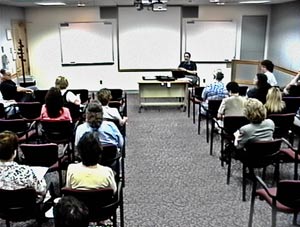
|
Informal Lecture Room
-
50 seats.
-
Front projection.
-
AutoAuditorium System controlled from the "back room".
-
Ceiling microphones over the stage.
-
Wireless microphone optional for the presenter.
-
Ceiling microphones over the audience.
-
3 AutoAuditorium cameras:
Spotting Camera (shown),
Slide Camera,
Tracking Camera.
|

|
Class Room
-
35 seats.
-
Front projection.
-
AutoAuditorium System controlled from the "back room".
-
Ceiling microphones over the stage.
-
Wireless microphone optional for the presenter.
-
Ceiling microphones over the audience.
-
3 AutoAuditorium cameras:
Spotting Camera (shown),
Slide Camera,
Tracking Camera.
|
Automatic Auditorium,
AutoAuditorium,
and
AutoAud
are licensed trademarks of
Telcordia Technologies, Inc.
Copyright © 2000 - 2024
Foveal Systems, LLC.
All rights reserved.
|
|
www.AutoAuditorium.com/rooms.html 2016/03/20 19:06:12 9.2
AutoAuditorium System: What You Get, What It Costs

What You Get, What It Costs
The AutoAuditorium System is a complete, installed addition to your
new or existing auditorium or lecture room.
The exact price for your system
will depend on your requirements,
the System Level you select,
and the specific configuration of your room.
Your system installer will first perform an
Engineering Study of your site, and then quote you a final price.
While you are thinking about price,
also consider the savings created using your
AutoAuditorium System.
The
Savings Calculator
web page helps generate the numbers.
What You Get
The AutoAuditorium System adds automatic video production capabilities to your
new or existing auditorium or lecture room.
We expect your room will have a stage, or other presenter's area
separated from the audience, and a permanent projection screen.
AutoAuditorium Systems work best when projectors
(slide, overhead, video, etc.)
are mounted in fixed positions and all project
onto the same area of the screen.
We expect most rooms will have a sound system.
A complete AutoAuditorium System typically adds:
-
The AutoAuditorium Controller with
Tracking Camera and Director modules
-
A Tracking Camera with remote pan/tilt mount and lens control
-
2 or 3 stationary cameras (Spotting Camera, Screen Camera, etc.)
and mounts
-
Optional direct feed from projector monitor output
-
Video Mixer with 3 inputs, minimum
-
Sound subsystem
-
Stage and Audience Microphones
-
Automatic Audio Mixers
-
Interconnection with the existing room sound system
-
Equipment Rack, including power control
-
Base-band Video and Audio Connections
to an existing
video recorder,
video network,
video-on-demand server or
streaming media digital encoder
In many cases an AutoAuditorium installation can use
the existing facilities of your room.
For example,
the existing sound system and control system
are usually integrated with the added AutoAuditorium equipment.
What It Costs
Most of the components added by an AutoAuditorium System
are widely available industrial- and
broadcast-quality items sold by audio-visual system contractors.
You may choose to use relatively smaller,
less expensive,
single-chip cameras,
or,
to achieve better video quality and system performance,
you can use
top-of-the-line,
high resolution,
3-chip cameras.
NOTE:
Most PTZ (Pan/Tilt/Zoom) cameras are not compatible because they don't
have sufficient control capabilities to perform well with the AutoAuditorium
Controller.
Contact us for details.
Choice of System Levels
The first step is to determine the system level
that is nearest to your needs.
Below we list three levels,
Basic,
Standard,
and
Professional
which represent commonly requested feature sets.
The prices are approximate budgeting guidelines.
Because an AutoAuditorium System is tightly integrated into the room where
it is installed,
some installations are easier and less expensive than others.
After you have looked over these System Levels and the available Options
contact Foveal Systems to discuss your specific needs.
All the System Levels of the AutoAuditorium System start with:
-
AutoAuditorium System Controller
with Monitor, Keyboard and Mouse
-
One-year Controller service and upgrade warranty
-
One-Switch AutoAuditorium System ON-OFF Control, including power
-
Foveal 3-Axis Rigid Camera Mounts
for the Spotting and Screen Cameras
-
Video Mixer
-
Video Monitor
-
Distribution amplifiers, video and audio
-
Equipment Rack, power plugs, etc.
The approximate prices include rough estimates for:
-
Engineering
-
Installation Labor
-
Wall or ceiling camera supports, e.g. a shelf for camera mounts
-
Cables
They do not include:
-
Lighting
-
Projection
-
Room sound system
-
Video network and encoders
† US Dollars; installation within the continental United States
Basic System
Approximately $60,000 †
Provides:
-
Smaller rooms
-
Moderate video quality
-
3 1-CCD cameras
-
Records only the room's existing sound system
No audience sound recording
Includes:
-
1/4 inch 1-CCD Tracking Camera with integrated Pan/Tilt/Zoom Unit
-
1/3 inch 1-CCD Spotting Camera
-
1/3 inch 1-CCD Screen Camera
Standard System
Approximately $90,000 †
Provides:
-
Good video quality
-
3 1/3 inch 3-CCD cameras
-
Automatic mixing of room sound system and audience microphones
Includes:
-
1/3 inch 3-CCD Tracking Camera with remote control Zoom/Focus lens
on industrial Pan/Tilt Head
-
1/3 inch 3-CCD Spotting Camera
-
1/3 inch 3-CCD Screen Camera
-
Audience ceiling microphones
-
Automatic Matrix Audio Mixer
Professional System
Approximately $120,000 †
Provides:
-
Excellent video quality
-
4 1/2 inch 3-CCD cameras
-
Automatic mixing of room sound system and audience microphones
Includes:
-
1/2 inch 3-CCD Tracking Camera with remote control Zoom/Focus lens
on industrial Pan/Tilt Head
-
1/2 inch 3-CCD Spotting Camera
-
1/2 inch 3-CCD Screen Camera
-
1/2 inch 3-CCD Audience Shot Camera
-
Audience ceiling microphones
-
Automatic Matrix Audio Mixer
While you are thinking about price,
also consider the savings created using your
AutoAuditorium System.
The
Savings Calculator
web page helps generate the numbers.
Options
These options can be purchased on any level system;
Basic, Standard, or Professional.
Multiple Director Shooting Script
The user can be given a choice of directorial styles.
Each style can have its own pace, shot choices, and effects choices.
For example, the AutoAuditorium System used to produce the first
demonstration video,
has a Director "shooting script" which deliberately makes decisions much faster
and uses more video effects and transitions
than is normal for a lecture given in the same room.
By selecting that Director script,
the demonstration videos go through most of
an AutoAuditorium System's
features in a very short time.
The scripts customers normally use are much less frenetic.
In another example,
a customer had an auditorium which could be split in half.
(Look at the first two photos on the
AutoAuditorium Installations
web page.
They were the same auditorium, with the partition wall opened and closed.)
The AutoAuditorium System cameras were in the projection booth at the rear of
the audience seating.
When in Full Room mode,
the AutoAuditorium Director used the formal stage and the large screen
as the areas of interest.
When in Half Room mode, a partition closed across the width of the
room, and the AutoAuditorium Director instead was sensitive to the
person standing in front of the wall and
the much smaller screen.
A simple toggle switch made the choice.
Dual Use System
By "Dual Use" we mean one AutoAuditorium Controller can produce a program
using either of two sets of cameras.
The most common case would be two rooms,
each with its own set of cameras and microphones and audio mixer,
and one AutoAuditorium Controller, one Video Mixer, one video recorder, and
an audio/video routing switcher.
Under the Controller's command,
the routing switcher "bank switches" the signal sources from one room or
other into the Mixer and Controller.
The Director can have different production scripts to accommodate the
specific needs of each room.
Remember that the Dual Use System will only produce a program from one
room at a time.
Switching after the end of a program in one room to the beginning of a program
in the other room will only take two or three minutes.
Manual Control
Some programs are beyond the AutoAuditorium System's capabilities.
In such cases it may be desirable to use the AutoAuditorium System
cameras, mixer, DVR, etc. to produce a program under manual control.
We can include a joy-stick control box for the Tracking Camera.
A switch then gives the user a choice:
-
Have the AutoAuditorium System control the Tracking Camera and Video Mixer.
-
Have a person control the Tracking Camera with the joy-stick and
run the Video Mixer by hand.
It is also possible to smoothly switch the Tracking Camera from
AutoAuditorium to manual mode "on the fly".
This allows someone monitoring the AutoAuditorium program to
correct a poor choice the software might make.
For example, if more than on person comes on stage,
the Tracking Camera software may concentrate on the wrong person.
By switching the Tracking Camera to manual mode,
a person can then create the best shot for the current situation.
Switching back to AutoAuditorium mode puts the software back in charge.
Please contact us
if you want more details.
Additional Stationary Cameras
It is possible to add additional stationary cameras to be used as
covering shots during the program.
The cost is very modest and
the additional shots provide variety to the program
that the viewers appreciate.
For more information,
or to learn about compatibility of existing audio-visual
equipment that you already own, please
Contact Us.
Automatic Auditorium,
AutoAuditorium,
and
AutoAud
are licensed trademarks of
Telcordia Technologies, Inc.
Copyright © 2000 - 2024
Foveal Systems, LLC.
All rights reserved.
|
|
www.AutoAuditorium.com/whatyouget.html 2017/05/26 15:24:32 9.4
AutoAuditorium System Controller Specifications

Controller Specifications
 AutoAuditorium Controller Hardware
AutoAuditorium Controller Hardware
The brain of an AutoAuditorium system is
the Controller
and the intelligence of the system is
contained in the proprietary software programs
that run on it.
The system accepts inputs from
(among other things)
the video cameras in the room
and uses image and motion analysis on those images
to determine which actions to take.
Those actions include:
-
Pan, Tilt, Zoom and Focus the robotic Tracking Camera to follow the person
on stage giving the presentation.
-
Control the Video Mixer, selecting the appropriate camera image to show
the audience:
- The Tracking Camera, following the presenter.
- The Screen Camera, showing the projected materials.
- Picture-in-Picture of the projection screen and presenter together.
- The Spotting Camera, showing the entire stage area.
- Other optional cameras: audience, other general images of the room.
- Other optional video effects, such as wipes and transition effects.
Specifications
| Inputs |
| Video Input, Spotting Camera |
HD-SDI, HiDef formats |
| Video Input, Screen Camera |
HD-SDI, HiDef formats |
| Keyboard |
USB |
| Mouse |
USB |
| Control Interface |
USB |
| |
| Outputs |
| Tracking Camera Control |
Serial Port, RS-232/422 |
| Video Mixer Control |
Serial Port, RS-232/422 |
| Monitor Video |
HDMI or DVI |
| |
| Optional Outputs |
| AC Power Control |
Dry Contact Contact Closure |
| Routing Switcher Control |
Serial Port |
| |
| Power |
| Voltage |
120 Volts AC, 60 Hertz |
| Power |
300 Watts, Typical |
| |
| Physical Characteristics |
| Dimensions |
19 inch Rack Mount, 4 rack units high
17.31 inches W x 7 inches H x 17.70 inches D,
plus handles and mounting flanges
|
| Weight |
(approximately) 45 Pounds, 20.4 Kilograms |
| Operating Environment |
+32 to +131 degrees F, 0 to +55 degrees C |
| |
| Included |
| AC Power Cord |
| 19 inch Rack Mount Control Panel, 1 rack unit high
|
| |
| Optional |
| Rack Slides for Controller Case |
| AC Power Control Interface,
e.g. Middle Atlantic RLM-15-1CA
|
For information on how your company can sell and install
AutoAuditorium systems,
please contact us ...
Automatic Auditorium,
AutoAuditorium,
and
AutoAud
are licensed trademarks of
Telcordia Technologies, Inc.
Copyright © 2000 - 2024
Foveal Systems, LLC.
All rights reserved.
|
|
www.AutoAuditorium.com/controller_specs.html 2017/05/26 14:35:47 9.4
AutoAuditorium Video Demonstration

Video Demonstration
|
Unedited Video Demonstration
Loading jwplayer-7.0.3 . . .
Recorded by the
AutoAuditorium System
at IBM Watson Research
in Hawthorne New York,
Fall 2002.
|
This
11 minute video,
produced by AutoAuditorium,
was shown at the
Government Video Technology Expo in December 2002.
As you watch, remember that the only control I am using is the button
that changes the slides.
All the camera work and video switching is performed without human
control.
|
Download times too long?
Read the Storyboard.
Here is the
storyboard of the video
(590 KBytes)
with 39 screen shots.
Here is a
Video Demonstration FAQ
with answers to Frequently Asked Questions about the video itself.
There is also a
Frequently Asked Questions
page about the AutoAuditorium System.
Contact Us
if that isn't enough.

| |
Automatic Editing Features
|
Automatic Auditorium,
AutoAuditorium,
and
AutoAud
are licensed trademarks of
Telcordia Technologies, Inc.
Copyright © 2000 - 2024
Foveal Systems, LLC.
All rights reserved.
|
|
www.AutoAuditorium.com/videos.html 2021/07/05 13:45:23 9.8
AutoAuditorium Video Demonstration FAQ

Video Demonstration FAQ
A few notes and explanations about the
AutoAuditorium Video Demonstration
in the form of Frequently Asked Questions (FAQ).
Is the AutoAuditorium System connected to the laptop computer
that is creating the visuals on the screen?
No.
The AutoAuditorium System has a camera pointed at the projection screen.
It analyzes that image to determine when to show the screen,
and when other shots are used.
Elsewhere on the web site you say that AutoAuditorium Systems have
four cameras.
Do I only see three different shots?
Yes.
The three camera shots are:
-
The Tracking Camera, which follows the person on stage.
-
The Slide Camera, which looks at the projection screen.
-
The Room Camera, which looks at the entire front of the room.
Because the video is short, the fourth camera was not used.
In the room where the video was made
the fourth camera has a fixed shot from behind the lectern
pointed towards the seating area.
Normally that shot is used for a few seconds every once in a while to
keep the shots from being too repetitive.
Isn't the Tracking Camera following the sound of the person speaking?
No.
The Tracking Camera is only following
the motion of the person on the stage.
Isn't the Tracking Camera following the wireless microphone the speaker
is wearing?
No.
The Tracking Camera only follows motion.
In some installations the wireless microphone is seldom used because
the ceiling microphones do such a good job.
Not all installations can operate just on ceiling microphones,
but those that can frequently do.
Automatic Auditorium,
AutoAuditorium,
and
AutoAud
are licensed trademarks of
Telcordia Technologies, Inc.
Copyright © 2000 - 2024
Foveal Systems, LLC.
All rights reserved.
|
|
www.AutoAuditorium.com/videofaq.html 2016/03/20 19:06:12 9.2
AutoAuditorium Video Demonstration Storyboard, GV Expo 2002

Video Demonstration Storyboard, GV Expo 2002
For those of you who do not have the means to download the full video,
we have this storyboard of the sound track and associated screen shots.

| |
Hello.
My name is Mike Bianchi
and I am very happy to be here at ...
|

| |
... the 2002 edition of the Government Video Technology Expo.
|

| |
I'm here to give a presentation
about the
Role of Automatic Video Production in Distance Education.
I hope to make the case that
technology
now allows us to use
automation to create distance education video programs
inexpensively, easily and effectively.
|

| |
As I give this presentation I am demonstrating
the AutoAuditorium System, which is a
fully automatic,
multi-camera system
that televises auditorium and classroom presentations
just like this one.
Everything you are going to see in this presentation,
-
all the camera work - panning, tilting, focusing, and zooming,
-
all the video effects and video mixing,
-
all the audio mixing
that go into this production are being performed automatically by
the AutoAuditorium System.
|

| |
There is no crew.
In fact,
there is only one control,
it's this button,
and it tells this laptop computer to change that slide.
So let's get started.
|

| |
What is education?
Well it's when you learn something you value.
You go to the time and effort to acquire information that is useful to you.
|

| |
So naturally, what is distance education?
It is when you do the same process,
but instead of doing it with books or in a classroom
you do it through an audio-video medium.
For the purposes of our discussion we mean television programs,
video programs, ...
|

| |
... delivered as television signals.
Now-a-days,
the computer and the internet provide another way to watch television.
|

| |
What has limited our ability to use distance education video?
It has been the cost and complexity of producing the programs.
Doing a full-blown television program
requires planning, scripting,
scene-by-scene shooting and editing
if you want the highest possible quality for the program itself.
But I will claim that that is not always possible, or even desirable.
It is expensive.
It takes a lot of time.
It's difficult to react quickly with new information if you have to go
through all these steps.
|

| |
So we usually eliminate some of them.
We plan and script.
Then we rehearse and shoot in a single take.
That sometimes has an advantage because then you get the energy of a live
audience.
|

| |
But even that may be too complicated; too difficult.
So we eliminate some more steps.
The teacher and producer get together and plan the program.
Then the crew comes in and shoots in a single take.
And, again, that doesn't always work.
|

| |
Sometimes the person speaking shows up with a
laptop,
a stack of foils, or
a Carousel of slides.
They get up and give their talk and
the production crew simply has to wing it,
shooting as they find the program.
Well that's an opportunity.
|

| |
If we are using that very basic kind of presentation technique
it is an opportunity to use automatic video technology and
replace the manually operated cameras with
robotically operated cameras.
Replace the people with computers and computer systems
and create the program.
|

| |
Now, that sounds wonderful.
But is it really?
Is it really what we want?
What do we save?
What do we gain by doing that?
That is what the rest of this talk is about.
|

| |
Let's compare the costs.
The traditional costs of a distance education video are that
-
you have a crew,
-
you have equipment,
-
you either have a dedicated space like a studio
or
you use an ordinary room which you turn into a
television-studio-for-a-day.
-
That involves setting-up and tearing-down.
-
Then you record and telecast the lecture.
|

| |
How does that compare with automatic distance education video production?
Well, for one thing we eliminate the crew.
It's all done with automation.
|

| |
What about the equipment?
Well, you don't have intercoms and the things that crews require
but
you do have robotic cameras, lenses and pan/tilt heads,
the computer system itself and the software.
That adds up.
Let's say that the equipment costs are about the same.
|

| |
Studio or reserved room?
The easiest way to install an AutoAuditorium System is to just build it
into the room, making it part it.
Because you can turn the system on or off in ten minutes
you don't have that fallow
time when the room is not available.
|

| |
You also avoid the set-up and tear-down labor expense, ...
|

| |
... so you still have the equipment costs,
you still have the recording and telecast costs,
but you have eliminated all those others
when you make an automated distance education video.
|

| |
So I hope I have made the case that the advantages of using this
automatic distance education production technique
is that you can lower the cost and
that you can lower the
human effort required to make a program.
|

| |
Now, I can hear it.
Someone is saying, "Aren't you putting people out of work?"
That's a very legitimate concern and we should address it.
Our experience has been quite the opposite.
We are not putting people out of work.
We are just making much more video.
This AutoAuditorium System is in the IBM Watson Research Center in Hawthorne
New York.
|

| |
They tell us that they used to do about fifty crew-based video productions
per year.
Those are very fine programs
produced in the usual way.
They still do about fifty videos a year.
So where are the savings?
|

| |
The savings are because they are also making
about 250 AutoAuditorium videos a year.
They are recording events that were not recorded in the past.
And those events represent Opportunities that were always there.
There was always the need for those videos.
|

| |
It's just that no one thought it made any sense to record them.
Those talks, seminars and classes were missed because of
the cost and complexity of doing manual video production.
Now they are available.
And because they are available
the whole situation changes.
|

| |
There are more education opportunities.
The question changes.
|

| |
The question used to be, "Can we afford to record this class?"
|

| |
Now the question has changed to,
"We've got the recording.
Who should see it?
How do we get this class to the people who need to see it?"
|

| |
So this room where people come to hear seminars all the time
now becomes
the source of information, knowledge, interconnection and relationships
among employees, customers and students.
|

| |
And I contend that is the value of the AutoAuditorium System
and these automatic video techniques.
It's not so much that your are saving money.
It's more that you are informing people.
|

| |
The people who have the opportunity
to see these programs, that they would not see otherwise,
now have the opportunity to know things they wouldn't know otherwise.
The answers to, "Why weren't you at the talk?" used to be:
"I was on the phone with a customer."
"I was traveling."
"I was on vacation."
"I was in Europe.
I'm employed in Europe.
There is no way I can get there."
Now there are alternatives.
|

| |
Which highlights another benefit.
Because these materials are so easy to produce
you can afford to distribute them around the world
to your other locations.
Now people have more opportunity to be aware of what is happening
in other corners of their organization.
|

| |
And there is one last thing I wish to point out.
Creating all these videos means you have captured
all this information.
If you save it,
archive it in a library,
you can now make it available to people in the future.
They might want to know, "How did we ever come up with that?
Why did we ever come up with that?
What was the thinking back then?"
This is a record.
|

| |
So that's my presentation on the
Roles of Automatic Video Production in Distance Education.
I hope I have made the case that
we can increase people's access
to classes, presentations, talks and seminars
and that we can do it at very low cost.
Together they make a compelling case
for using automation.
|

| |
I will remind you that
everything you have seen
in this unedited video ...
|

| |
... all the camera work,
all the video selection and effects,
all the audio mixing,
that went into making this recording were performed
without an operator.
|

| |
They were performed automatically by
the AutoAuditorium System.
|

| |
If you would like to know more,
please visit our web site,
www.AutoAuditorium.com
send us e-mail
or call us at
973 822-2085
and let's talk about how an AutoAuditorium System
might help you.
|

| |
My name is Mike Bianchi.
I thank you very much for your attention,
and as this is the end of my talk,
I'm now available for your questions.
Thank you.
|
Automatic Auditorium,
AutoAuditorium,
and
AutoAud
are licensed trademarks of
Telcordia Technologies, Inc.
Copyright © 2000 - 2024
Foveal Systems, LLC.
All rights reserved.
|
|
www.AutoAuditorium.com/storyboard2.html 2016/06/06 14:20:24 9.1
AutoAuditorium Example - Automatic Editing Features

Automatic Editing Features
Automatic Picture-in-Picture
Picture-in-Picture On the Appropriate Side
Automatic Chalkboard Shot
Detection of the Laser Pointer on the Screen
Presentations are easier to watch, follow and understand.
Loading jwplayer-7.0.3 . . .
Automatic Auditorium,
AutoAuditorium,
and
AutoAud
are licensed trademarks of
Telcordia Technologies, Inc.
Copyright © 2000 - 2024
Foveal Systems, LLC.
All rights reserved.
|
|
www.AutoAuditorium.com/playbackAutoAud_Features.html 2021/07/05 13:52:11 9.6
AutoAuditorium Full-Length Video Demonstrations

Full-Length Video Demonstrations
|
|
Presented with the kind permission of
Sara Lapan
Graduate Student Instructor
Mathematics
College of Literature, Science, and the Arts
University of Michigan
Recorded on July 10, 2012,
by the AutoAuditorium System
at the Banff International Research Station
for Mathematical Innovation and Discovery,
Banff, Alberta, Canada
This is an example of a "Projector Talk",
which also uses the chalkboards on both sides of the screen.
|

|
|
|
|
Presented with the kind permission of
Micah Warren
Assistant Professor of Mathematics
Princeton University
Recorded on April 30, 2012,
by the AutoAuditorium System
at the Banff International Research Station
for Mathematical Innovation and Discovery,
Banff, Alberta, Canada
This is an example of a "Chalkboard Talk",
where a projector is not used.
|

|
|
|
|
Presented with the kind permission of
Wendy S. Garrett, M.D. Ph.D.
Assistant Professor of Immunology and Infectious Diseases
Harvard School of Public Health
Dana-Farber Harvard Cancer Center
Recorded on July 27, 2011,
by the AutoAuditorium System
at the The Broad Institute,
Cambridge Massachusettes
|

|
|
Presented with the kind permission of
John C. Priscu
Professor of Ecology
Department of Land, Resources and Environmental Science
Montana State University
Recorded on October 10, 2008,
by the AutoAuditorium System
at the IBM Almaden Research Center,
San Jose California.

encoded at 350 Kbits/second, 320x240 pixels
|

encoded at 560 Kbits/second, 640x480 pixels
|
Automatic Auditorium,
AutoAuditorium,
and
AutoAud
are licensed trademarks of
Telcordia Technologies, Inc.
Copyright © 2000 - 2024
Foveal Systems, LLC.
All rights reserved.
|
|
www.AutoAuditorium.com/morevideos.html 2021/07/05 13:22:59 9.4
AutoAuditorium Example - Projector Talk with Chalkboards on the side

Projector Talk with Chalkboards on the side
This is an example of a "Projector Talk"
with chalkboards on either side of the screen.
Just after
4:05,
11:54,
12:58,
13:30,
and
23:05
in the presentation the speaker writes
on the chalkboards on both sides of the screen and
we see how the AutoAuditorium System handles that.
Please note that there is no tracking target
worn by the presenter,
and the clicker used only advances the slides
and provides the laser pointer.
Loading jwplayer-7.0.3 . . .
Attracting domains of certain maps tangent to the identity
Presented with the kind permission of
Sara Lapan
Graduate Student Instructor
Mathematics
College of Literature, Science, and the Arts
University of Michigan
Recorded on July 10, 2012,
by the AutoAuditorium System
at the Banff International Research Station
for Mathematical Innovation and Discovery,
Banff, Alberta, Canada
Automatic Auditorium,
AutoAuditorium,
and
AutoAud
are licensed trademarks of
Telcordia Technologies, Inc.
Copyright © 2000 - 2024
Foveal Systems, LLC.
All rights reserved.
|
|
www.AutoAuditorium.com/playbackBIRS_Lapan.html 2018/01/07 02:47:13 9.1
AutoAuditorium Example - Chalkboard Talk

Chalkboard Talk
This is an example of a "Chalkboard Talk",
where a projector is not used.
Loading jwplayer-7.0.3 . . .
Calibrated geometry in the optimal transportation problem
Presented with the kind permission of
Micah Warren
Assistant Professor of Mathematics
Princeton University
Recorded on April 30, 2012,
by the AutoAuditorium System
at the Banff International Research Station
for Mathematical Innovation and Discovery,
Banff, Alberta, Canada
Automatic Auditorium,
AutoAuditorium,
and
AutoAud
are licensed trademarks of
Telcordia Technologies, Inc.
Copyright © 2000 - 2024
Foveal Systems, LLC.
All rights reserved.
|
|
www.AutoAuditorium.com/playbackBIRS_Warren.html 2018/01/07 02:47:13 9.1
AutoAuditorium Demo - Earth's Icy Biosphere (640x480)

Earth's Icy Biosphere
Presented with the kind permission of
John C. Priscu
Professor of Ecology
Department of Land, Resources and Environmental Science
Montana State University
Recorded on October 10, 2008,
by the AutoAuditorium System
at the IBM Almaden Research Center,
San Jose California.
|
Loading jwplayer-7.0.3 . . .
encoded at 560 Kbits/second, 640x480 pixels
|
Automatic Auditorium,
AutoAuditorium,
and
AutoAud
are licensed trademarks of
Telcordia Technologies, Inc.
Copyright © 2000 - 2024
Foveal Systems, LLC.
All rights reserved.
|
|
www.AutoAuditorium.com/playbackEIB_640x480.html 2018/01/07 02:47:24 9.2
AutoAuditorium System Contact Us

Contact Us
The AutoAuditorium System was only sold in the United States
and Canada.
It is no longer for sale.
However, it still appears to have attributes not found in other
automatic video production systems.
If you would like to discuss possible futures for this technology
please get in touch with me.
Mike Bianchi
|
Foveal Systems E-mail, Privacy, and Advertising Policies
Any and all information that you provide to us is used only by
Foveal Systems LLC.
It will not be shared or sold.
We have not sent out blind advertising in a very long time.
And for now do not expect to.
Mike Bianchi
Founder
Foveal Systems LLC
Automatic Auditorium,
AutoAuditorium,
and
AutoAud
are licensed trademarks of
Telcordia Technologies, Inc.
Copyright © 2000 - 2024
Foveal Systems, LLC.
All rights reserved.
|
|
www.AutoAuditorium.com/infoform.html 2023/02/10 18:13:57 9.6
AutoAuditorium System Sales Partners

Sales Partners
Would your company like to sell AutoAuditorium Systems?
If your company is in the United States or Canada,
then we would like to talk with you.
If your company is elsewhere,
then please see our
Foreign Customers page.
AutoAuditorium Systems are sold through professional
audio/video systems designers, integrators, and installers.
Most of the hardware,
cameras,
pan/tilt head,
video mixers,
microphones,
audio mixers,
etc. are standard items sold by companies such as yours.
Foveal Systems provides
room layout guidance,
equipment choices,
and the AutoAuditorium Controller that change what
would be an ordinary, manually operated camera system into a
fully automatic production facility.
For information on how your company can sell AutoAuditorium Systems,
fill out the
Information Request Form,
Automatic Auditorium,
AutoAuditorium,
and
AutoAud
are licensed trademarks of
Telcordia Technologies, Inc.
Copyright © 2000 - 2024
Foveal Systems, LLC.
All rights reserved.
|
|
www.AutoAuditorium.com/var.html 2003/11/19 14:52:25 6.5
AutoAuditorium System Foreign Customers

Foreign Customers
The AutoAuditorium System is not available outside the United States
and Canada.
At this time we are not able to support AutoAuditorium System
sales and installation outside the United States and Canada.
We hope to some day.
If you would like to be contacted when the AutoAuditorium System
is available for sale in you country,
please tell us about your company and
the market you foresee.
Send e-mail to
If you or a client interested in
having the first AutoAuditorium System in your country,
please contact us.
Automatic Auditorium,
AutoAuditorium,
and
AutoAud
are licensed trademarks of
Telcordia Technologies, Inc.
Copyright © 2000 - 2024
Foveal Systems, LLC.
All rights reserved.
|
|
www.AutoAuditorium.com/foreign_partners.html 2003/05/07 21:59:24 6.4
white paper, February 2011
white paper, September 2009
2008 International Conference on Frontiers in Education:
Computer Science and Computer Engineering (FECS08), July 2008
3rd International Conference on
Mobile and Ubiquitous Multimedia, October 2004
AutoAuditorium Presentation at Government Video Expo 2002

AutoAuditorium Presentation at Government Video Expo 2002

Michael Bianchi,
founder of Foveal Systems LLC,
will give a talk entitled
The Role of Automatic Video Production in Distance Education
at the
Government Video Expo 2002
in Washington DC.
It will be presented as part of the
Day 1 / Production Strategies Track
held
12:30 - 2:00 on Wednesday, 4 December 2002.
Abstract of the talk
Using video for internal communications and distance education is often limited
by the costs and complexities of traditional video production.
The totally
automatic camera and editting techniques of the AutoAuditorium System create
videos easily and inexpensively.
The AutoAuditorium environment is one that,
once turned on, works entirely automatically.
Multi-camera videos of
auditorium or classroom presentations are produced without any human control at
all and no distractions.
The system reacts to the people on stage and the
projected visuals in real time.
Audiences watching from a distance or in the
future see the same program as those in the room.
Because making a video of a presentation is so easy and inexpensive the
question changes from "can we afford to make this video?" to "what do we do
with the videos we are creating?".
Some are only watched live.
Some, for a
time, are placed into video-on-demand servers.
Some become part of a
permanent collection.
The cost of equipping auditoriums or classrooms with the AutoAuditorium System
is quickly recouped in many ways.
Some of the savings come from the lower
production costs.
More comes from lower travel costs.
Non-financial benefits
include more and better informed people, greater cross-organizational
awareness, and longer organizational memory.
Automatic Auditorium,
AutoAuditorium,
and
AutoAud
are licensed trademarks of
Telcordia Technologies, Inc.
Copyright © 2000 - 2024
Foveal Systems, LLC.
All rights reserved.
|
|
www.AutoAuditorium.com/gvexpo.html 2003/04/10 19:38:45 6.3
AutoAuditorium System Wins R&D 100 Award

A Winner of R&D Magazine's
R&D 100 Award!
R&D Magazine
gave
the AutoAuditorium System
an
R&D 100 Award
in 1999.
The list of awards was published in their September 1999 issue
and
the Awards Banquet was held at the
Museum of Science and Industry
in Chicago Illinois on 23 September 1999.
The Chicago Tribune has called these awards "The Oscars of Invention."
Others have referred
to the R&D 100 Awards as the "Nobel Prizes of Applied Research."
Past winners have included
breakthroughs like
Polacolor film,
the flashcube,
the digital wristwatch,
antilock brakes,
the automated teller machine,
the liquid crystal display,
the halogen lamp,
and the fax machine.
We thank R&D Magazine for their recognition.
Automatic Auditorium,
AutoAuditorium,
and
AutoAud
are licensed trademarks of
Telcordia Technologies, Inc.
Copyright © 2000 - 2024
Foveal Systems, LLC.
All rights reserved.
|
|
www.AutoAuditorium.com/rd100.html 2003/10/16 00:15:08 6.4
AutoAuditorium System: Smart Spaces Conference Paper

Smart Spaces Conference Paper
This paper was
presented at the 1998 Joint DARPA/NIST Smart Spaces Technology Workshop,
30-31 July 1998,
National Institute of Standards and Technology,
Gaithersburg, MD.
At that time, Telcordia Technologies was known as Bellcore.
The system, much improved since this paper was written,
is now sold by Foveal Systems.
See the AutoAuditorium Home Page:
www.AutoAuditorium.com .
AutoAuditorium:
a Fully Automatic, Multi-Camera System
to Televise Auditorium Presentations
Bellcore Applied Research
Morristown, NJ 07960
Abstract
A large room full of people watching a presentation
suggests that there are other people,
unavailable at that time or not at that location,
who would like to see the talk but can not.
Televising that talk, via broadcast or recording,
could serve those absent people.
Bellcore's AutoAuditorium
(TM)
System
is a practical application of a Smart Space,
turning an ordinary auditorium into one
that can automatically make broadcasts and recordings.
The system is permanently installed in the room and
uses optical and acoustic sensors
(television cameras and microphones)
to be ``aware'' of what is happening in the room.
It uses this awareness to
televise the sound and images of the most common form of auditorium talk,
a single person
on a stage,
speaking with projected visual aids to a local audience.
Once turned on, the system is completely automatic.
The person on stage and the people in the local audience may not even be
aware that it is on.
To remote audiences,
the program is usually as watchable as one produced by a
one-person crew running the system by hand.
This paper describes the system,
some of our experiences using it,
and planned enhancements and research.
AUTOAUDITORIUM SYSTEM DESCRIPTION
The prototype AutoAuditorium System
is installed in the
largest meeting room at
Bellcore's Morristown New Jersey location.
The system consists of
a computer with two video frame grabbers,
three fixed cameras
(pointed at the stage, the screen, and the lectern from the side),
one tracking camera under computer control that follows the person on the stage,
a video mixer, also under computer control,
and several automatic audio mixers.
The system is organized into three main subsystems.
The AutoAuditorium Tracking Camera
follows a person on the stage,
panning, tilting, zooming and focusing in response to her movements.
The AutoAuditorium Director
controls the video mixer,
selecting among the four cameras and a combination shot
(slide screen + presenter)
using heuristics that produce quite watchable programs
from most presentations.
The AutoAuditorium Sound
mixes sound from an optional wireless microphone,
microphones installed above the stage,
and microphones installed above the audience seating area.
The stage microphones provide adequate audio coverage if the wireless
microphone is not used or fails,
and they also feed the room's public address system.
The Sound subsystem
gives preference to voices originating from the stage,
but also listens for audience questions.
The outputs of these subsystems create a television
program that is then distributed via various mechanisms,
video cassette recording,
video network,
and
computer-encoded recording and transmission.
In the current system,
each of the subsystems operates independently, although the
Director changes parameter settings in the Tracking Camera algorithm
for some shot selections.
We plan to add more cross-subsystem awareness.
AutoAuditorium Tracking Camera
The AutoAuditorium Tracking Camera follows the person on the stage without
requiring
that they wear or carry anything
or
that they be identified in advance to the system.
(There are other tracking cameras that identify their targets via devices
worn by the person, or by an operator identifying a ``visual signature''.
Either of these techniques would have interfered with the goal of making
the system totally automatic and unobtrusive.)
Instead, a ``Spotting Camera'', mounted close to the Tracking Camera,
is pointed at the stage area
and its signal goes to one of the frame grabbers in the computer.
A Search Area, where the person on the stage will be walking in the Spotting
Camera image,
is defined during installation.
A map is defined that relates points in the Spotting Camera image to
pan, tilt, and zoom positions of the Tracking Camera.
The Tracking Camera software
detects any motion in the Search Area and drives the Tracking Camera
to the appropriate pan, tilt, and zoom position.
(The Search Area also keeps the seated (and sometimes standing)
audience motion from becoming important to the Tracking Camera.)
See Figure 1.
Figure 1:
Spotting Camera Image,
with Search Area and Extraneous Motion Area Defined.

Several parameters are set during system installation to
tune the various tracking and smoothing algorithms:
-
Parameters associated with the particular brand and model of
pan-and-tilt mount, lens, and camera used in the Tracking Camera
subsystem.
-
A minimum and maximum target shape and size.
-
Areas where there may be ``extraneous'' motion.
-
Parameters that affect the responsiveness of
the tracking algorithm
An example of an extraneous motion occurs when the projection screen is within
the Search Area that a person may occupy.
Defining the portion of the Spotting Camera image
that is the projection screen as an Extraneous Motion Area
helps the algorithm discriminate between motion due to the person and
motion due to the visuals changing.
(Figure )
When the person is not standing near the screen, there is no confusion.
Should the person be near the screen when the slide changes or animates
the algorithm may see the motion on the screen and the motion of the person
as related.
If it does, the Tracking Camera zooms out to include both in the shot.
AutoAuditorium Director
The AutoAuditorium Director's function is to present camera shots
that will be interesting to the remote audiences.
It is driven by analyzing the image on the projection screen,
viewed by a fixed camera called the Slide Camera.
That image goes to both the video switcher and
the second frame grabber in the computer.
The Director analyzes the Slide Camera image to determine if the projection
screen is blank.
If so, it directs the video mixer to show
the Tracking Camera, following
the speaker as he moves around the stage and talks to his audiences.
See Figure 2.
Figure 2:
Tracking Camera Shot of Speaker, Alone.

Should a slide be projected, the Director sees that the Slide Camera image
is no longer blank
and quickly directs the video mixer to show it.
See Figure 3.
Figure 3:
Slide Camera Shot of Projection Screen, Alone.

Since it is not yet possible to determine automatically
whether the most important image should
be of the speaker or of the screen,
a ``combination shot'' is constructed,
with the speaker placed in a picture-in-picture box
in the lower corner of Slide Camera image.
See Figure 4.
Figure 4:
Combination Shot: Slide Camera with Tracking Camera Picture-In-Picture.

The picture-in-picture appears after a brief delay,
since the Tracking Camera alogrithm needs time to adjust
to the new parameters that the Director sends it.
Figure 5:
Combination Shot: Blank Projection Screen.

Figure 6:
Covering Shot.

If the screen goes blank
(Figure 5),
or if the slide is unchanging for a long time,
then the Director selects a ``covering shot''
(Figure )
from one of the other two fixed cameras,
while the Tracking Camera algorithm is reset to track the person in the
center of the image.
Then the covering shot is replaced with the Tracking Camera shot,
Figure 6.
Should there be motion on the projection screen,
or should the slide remain unchanged for an even longer time,
the Director then reconstructs the combination shot.
See Figure .
Figure 7:
Back to the Combination Shot.

Because the slide image is quickly recalled to the program if there is motion
within it,
the Director often selects that shot just as the speaker
is making a point about,
and pointing at,
the slide.
Simple, But Effective
This simple heuristic,
determining whether the projection screen is blank or not,
has proved surprisingly
effective in creating watchable programs of auditorium talks.
Most of the time, the image on the screen is one with which
the remote audiences can identify.
A slide screen that has not changed in a long time
(90 seconds in the Morristown installation)
is generally not missed.
Bringing the slide image back periodically lets the remote audiences
refresh their memories about slide's content.
AutoAuditorium Sound
The AutoAuditorium Sound subsystem listens to
sound from the stage,
sound from the audience,
and
sound associated with presentation projectors.
It produces a final mix from these sources.
Stage Sound
In a ordinary auditorium,
it is not uncommon to require that the speaker either
stand at a lectern's microphone,
or stand in front of a microphone stand,
or wear a wireless microphone.
But in a modest size room,
with seating for 100 or fewer,
sound system amplification for the speaker may not be strictly necessary for
the local audience.
Still, some form of audio pickup is required for the remote audiences.
In the Morristown Auditorium, the ceiling over the stage is low enough that
six microphones, careful placed, provide adequate audio coverage of
anyone standing on or near the stage.
An automatic microphone mixer combines them with the signal from
the wireless microphone receiver and a microphone built into the lectern.
It is so effective at selecting the best sound source into the program that
we just leave the inputs at standard settings.
The output from this mixer is used both
for the room public address (PA) system and
as part of the AutoAuditorium Sound feed.
See Figure 9.
Figure 9:
AutoAuditorium Sound System.

Audience Sound
A similar system of ceiling microphones and an automatic mixer is used to
cover the audience seating area,
but with a crucial difference.
Since the PA speakers are also on the ceiling over the
audience, their sound would be heard by the audience microphones and
cause a ``bottom-of-the-barrel'' reverberation.
To prevent this,
a simple circuit,
referred to as the ``Mic Ducker'',
mutes the audience microphones
whenever the room PA system ``speaks''.
This gives the sound from the stage precedence and keeps general
audience rustling from being an annoying
part of the AutoAuditorium program sound.
However,
it also allows the remote audiences to hear the reactions and questions
of the local audience.
Projector Sound
A third audio source is sound associated with projections,
either from video tape or computers.
In our Morristown auditorium, this ``HiFi System'' has its
own amplifiers and speakers,
under the projection screen.
This signal is ``tapped'' and provided to the AutoAuditorium Sound mix.
The Final Mix
The three audio feeds,
from the stage,
the audience,
and the projectors,
are mixed together by a final automatic mixer.
Again, the strongest signal source or sources dominate the mix,
and the master level is kept within the limits.
The result is generally acceptable,
although soft-spoken audience members are sometimes difficult to hear,
both in the room and in the the program.
AUTOAUDITORIUM EXPERIENCES
The idea of being able to telecast auditorium talks anywhere within Bellcore's
New Jersey locations originated in the late 1980s.
By the end of 1993 we had four auditoriums equipped with manually
operated 3-camera systems.
The expectation quickly grew that any talk of importance in any of those
auditoriums would be telecast over our in-house T1 video network.
But the auditoriums can sometimes get very busy,
with two and even three separate events in a single day.
Operators stuck at the control console all day became
bored and tired and would make mistakes.
The operators also had other duties and were sometimes difficult to schedule.
As computer vision systems became more capable,
experiments in using vision analysis to drive a tracking camera
and a video mixer showed promise.
By 1994,
the first version of a research
prototype AutoAuditorium System became operational
in our Morristown NJ auditorium.
Weekly work-in-progress talks were sent live over our experimental
desktop video teleconferencing system,
called
Cruiser/Touring Machine
{CTM}
and also recorded for Cruiser's on-demand playback service.
These weekly tests led to more refined algorithms and tuned parameters.
Eventually, many people watching programs
produced by the AutoAuditorium System could not tell the difference between
them and manually produced programs.
In fact, the AutoAuditorum programs were sometimes superior to
those produced by hand
because the operators would sometimes day-dream;
producing a program can get very tedious.
Recently, the prototype system was ported from a locally written real-time
operating system running on a single board computer in a VME card cage and
using VME frame grabbers.
The production system now runs on an IBM-compatible PC running Linux with
PCI-bus frame grabbers.
While the system works well,
it cannot fix badly prepared or presented talks.
For example,
visuals that can not be read easily from the back of the room
are also difficult to see on television.
A human operator can sometimes improve the situation
by taking closeups of portions of the projection screen,
illustrating the points the speaker is making.
Such a capability does not yet exist in AutoAuditorium.
SYSTEM ENHANCEMENTS AND FUTURE RESEARCH
A number of improvements and further investigations are under consideration:
More Than One Person on Stage
The Tracking Camera algorithms work well only when there is one person
to be tracked.
They do several things to keep from being distracted by other people
momentarily crossing the Search Area,
but if two people stand on the stage, the resulting Tracking Camera image
is fairly unpredictable.
The production system has considerably more processing power than the prototype,
so it should be possible to identify multiple people in the Search Area,
especially when they are well separated.
That would help the Tracking Camera to stay with the original target,
or to decide to zoom out to cover both targets until one or the other left
the scene.
Or, the one tracking algorithm could drive multiple tracking cameras,
say with very different view points.
When only one person was on stage,
the ability to change camera angles could help provide variety to the program.
When more than one person was on the stage, separate cameras could be assigned
to separate people.
Cross-Subsystem Awareness
The several subsystems of the AutoAuditorium
currently run very autonomously.
With the exception of the Director changing some Tracking Camera parameters
as it moves the speaker's image from a full-screen shot to picture-in-picture
shot,
the visual processes run independently.
The AutoAuditorium Sound does not connect to the computer at all.
However,
it is easy to enumerate benefits in making the different subsystems more aware
of each other.
For one, the Director could be aware of circumstances where the Tracking
Camera does not move for a long time.
Some speakers place themselves behind or next to the
lectern and stay there.
If the Director could be aware of that,
it could decide to take other shots,
say of the whole front of the room or of the audience,
just to provide some variety.
Another possibility,
given the enhancement to track more than one person on stage,
could be to use the whole-stage fixed camera shot when more than one person
occupies the stage, especially if the whole-stage shot covers a wider area
than the Tracking Camera can.
Multiple microphones over the stage area should make it
possible to know approximately where sound is coming from.
Again,
given the enhancement where the Tracking Camera can identify several people
on stage,
that information could help the Director and/or Tracking Camera decide which
person to show to the remote audiences.
Seeing Audience Members
The one area where a human operator can clearly outperform the AutoAuditorium
product is when audience members ask questions of the person on stage.
The audience microphones pick up the
questions of the local audience
and they are heard by the remote audiences.
A human operator can point a camera into the seating area
and find the person asking a question
but currently the AutoAuditorium System cannot.
Rutgers University has Array Microphone technology,
sometimes referred to as Speaker Seeker
{SS1}
{SS2}
that can stereo locate the position of a sound source.
We have an early version of Speaker Seeker installed in the
Morristown Auditorium, but it remains to be integrated with
the AutoAuditorium system.
When a person in the audience speaks,
Speaker Seeker can usually point a camera at her.
If that image, and the confidence measure from Speaker Seeker indicating
the likelihood that it had a good image,
were made available to the AutoAuditorium System, then the Director
could decide to include the image of the questioner along with the sound of
her voice.
Passive Micing Using Array Microphones
The Rutgers Array Microphone technology could also be used to pick up the
questioner's voice,
instead of ceiling microphones.
There may be rooms where Array Microphones on the walls
could do a superior job to over-head microphones,
such as when there are high ceilings over the stage and audience.
We would like to investigate expanding the
``nothing to wear to be heard'' aspect of our current installation
to more challenging spaces.
CONCLUSIONS
As the number and reach of high bandwidth networks grow,
and with them the ability to present quality video improves,
the opportunity, need, and demand
to produce video programs on a routine basis will also grow.
It is already becoming necessary to reduce or eliminate the manual
components of routine or ad hoc programs.
Turning an auditorium into a Smart Space
with the mission of capturing the talks that take place there
is a natural way to supply those programs.
Our own experience shows that
having an AutoAuditorium System allows us to
record and broadcast programs that
otherwise would not have been captured.
References
-
{CTM}
Bellcore Information Networking Research Laboratory (Mauricio Arango,
Lisa Bahler, Peter Bates, Munir Cochinwala, David Cohrs, Robert Fish,
Gita Gopal, Nancy Griffeth, Gary E. Herman, Takako Hickey, K. C. Lee,
Will E. Leland, Carlyn Lowery, Victor Mak, John Patterson, Lillian Ruston,
Mark Segal, R. C. Sekar, Mario P. Vecchi, Abel Weinrib, and Sze-Ying Wuu),
``The Touring Machine System'', Communications of the ACM, Volume 36,
Number 1, pages 68-77, January 1993.
-
{SS1}
D. V. Rabinkin, R. J. Renomeron, A. Dahl, J. French, J. Flanagan and M. Bianchi.
``A DSP Implementation of Source Location Using Microphone Arrays'', J. Acous. Soc. Am.,
Vol. 99, No. 4 Pt. 2, p. 2503, April 1996
(131st Meeting of the Acoustical Society of America, May 1996).
-
{SS2}
D. Rabinkin, R. Renomeron, J. French and J. Flanagan.
``Estimation of Wavefront Arrival Delay Using
the Cross-Power Spectrum Phase Technique'', J. Acous. Soc. Am.,
Vol. 100, No. 4 Pt. 2, p. 2697, October 1996
(132nd Meeting of the Acoustical Society of America, December 1996).
Footnotes
Automatic Auditorium, AutoAuditorium and AutoAud
are licensed trademarks of
Telcordia Technologies.
Copyright © 1999
Foveal Systems.
All rights reserved.
Foveal Systems Press Releases
FOVEAL SYSTEMS
The Center of Vision
Press Releases
Foveal Systems
190 Loantaka Way
Madison NJ 07940-1910
+1 973 822-2085 Voice and Fax
info@Foveal.com
http://www.Foveal.com
http://www.Foveal.com/PressRelease (This page.)
The AutoAuditorium System Also Captures Chalkboards Talks
The Banff International Research Station
for Mathematical Innovation and Discovery (BIRS)
is using their new high definition
AutoAuditorium™ System,
to webcast and record as many as 20 presentations a week.
BIRS is the first to use
a new AutoAuditorium capability that captures presentations given
entirely on chalkboards.
Of course there are presentations that use a laptop and projector,
but many presenters also go to the chalkboards to elaborate on
some point.
The BIRS AutoAuditorium System has been customized
to smoothly transition from one mode of presentation to the other.
. . .
University of Michigan Installs Another AutoAuditorium System
The University of Michigan at Flint has added
a second
AutoAuditorium™ System,
next door to the one they installed in 2006.
It is a key component of their Cyber Classrooms
which combine traditional classroom instruction with distance learning.
Students of courses taught in those rooms can choose to
attend each class session in-person
or watch a video of it
or both
as their daily circumstances require.
. . .
First High Definition AutoAuditorium System Installed
The first installation of a High Definition
AutoAuditorium™ System
is up and running in Cambridge Massachusetts.
"The Broad Institute
upgraded their standard definition single Tracking Camera system
installed in 2007 to a full production system with three HiDef cameras,
direct projector image input
and a HiDef video mixer
operating in the HD 1080i format,"
. . .
AutoAuditorium Recordings Help Improve Student Performance
The
AutoAuditorium™ System
installed at the University of Michigan at Flint
is a key component of their
Cyber Classroom.
A recent conference paper concludes that
"student outcomes from classes taught
in the Cyber Classroom
show a one-half point mean grade improvement,
a 36% increase in honors grades,
and a 56% reduction in failures."
. . .
400 AutoAuditorium Lectures Recorded at the University of Michigan
The
AutoAuditorium™ System,
at the University of Michigan at Flint (UM Flint)
got a lot of use during its first year.
"Over 400 lectures from 19 courses taught by 6 professors
were recorded since it was installed",
. . .
AutoAuditorium Systems installed at MIT and University of Michigan
AutoAuditorium™ Systems,
are now in use at the Massachusetts Institute of Technology (MIT)
and the University of Michigan at Flint (UM Flint).
"These two schools use their AutoAud Systems somewhat differently,
but they both make lectures available to audiences
distant in space and/or time",
. . .
AutoAuditorium Systems Celebrate 6 Years at IBM Research
The first two commercial
AutoAuditorium™ Systems,
both at
IBM's Watson Research Center,
celebrated 6 years of use in early in 2006.
"Along with their third System, installed in 2001,
they produced 223 AutoAuditorium programs during 2005,"
. . .
AutoAuditorium System Videos Grow 54% at IBM Research in 2003
IBM Watson Research
used their three
AutoAuditorium™ Systems,
to produce 233
video programs of classes, lectures and seminars during 2003.
"That's
78% of all the video productions they made last year,
. . .
AutoAuditorium System Videos at IBM Research Grow 22% in 2002
The three
AutoAuditorium™ Systems,
at IBM Watson Research produced 151
video programs of classes, lectures and seminars during 2002.
"That's a 22% growth over the 123 programs they made in 2001,
and they tell me they
made 105 AutoAuditorium videos in the first five months of 2003,"
. . .
Boeing Research Uses the AutoAuditorium System to Span the Miles
Boeing Phantom Works,
the advanced research and development unit of The Boeing Company,
is now using the
AutoAuditoriumTM System
to send technical presentations from their Seattle location
to other sites around the US.
"They are sending talks, shot and edited automatically, in real time,
over their network to labs in
Southern California,
Mesa Arizona,
St. Louis,
Huntsville,
and
Philadelphia,"
. . .
AutoAuditorium Systems Produce Videos for IBM's e-Seminar Service
There are now three
AutoAuditoriumTM Systems,
in use at IBM Watson Research
. . .
AutoAuditorium Tracking Camera Covers Several People At Once
The
AutoAuditoriumTM System
Tracking Camera Algorithms have been improved to follow
more than one person at a time, automatically.
"The technology is still free of targets,
controls,
and magic colors,
but now it understands how to handle additional people on stage,"
. . .
Automatic Video Production System Pays For Itself Quickly
Foveal Systems, LLC,
has released performance data,
citing results from a customer's usage of the
AutoAuditoriumTM System.
"They are seeing substantial economic benefits
from their installations,"
. . .
IBM Research Installs Second AutoAuditorium System
Foveal Systems, LLC,
announced it has completed installation of
IBM's second
AutoAuditoriumTM System,
at
the T. J. Watson Research Center in Yorktown Heights, New York.
"This
one has a special dual-use
capability.
Since the auditorium can be split to make two smaller meeting spaces
the AutoAuditorium System accommodates both the entire room or
one of the divided sections,"
. . .
IBM Is First AutoAuditorium Customer
Foveal Systems, LLC,
announced it has completed installation of an
AutoAuditoriumTM System,
at IBM's T. J. Watson Research Center in Hawthorne, New York.
"This is Foveal's first commerical installation
of an AutoAuditorium System,
and it is great to have IBM Research as the first customer,"
. . .
Foveal Systems Sells The AutoAuditorium System
Foveal Systems, LLC,
announced that it is now selling the
AutoAuditoriumTM System,
the fully automatic, multi-camera system
that
produces videos of auditorium presentations
without an operator.
"After ten years of research, development and refinement,
we are now making this technology available,"
. . .
Where does the name
FOVEAL
come from?
The fovea is the most sensitive part of the eye,
where we see with the greatest clarity.
The Foveal Systems' products are based on computer vision
technology, so . . .
Copyright © 2000
Foveal Systems LLC.
All rights reserved.
Foveal Systems:
Press Release -
May 4, 2012
FOVEAL SYSTEMS
The Center of Vision
Press Release
For Immediate Release
FOVEAL SYSTEMS,
LLC
190 Loantaka Way
Madison NJ 07940-1910
The AutoAuditorium System Also Captures Chalkboards Talks
The Banff International Research Station
for Mathematical Innovation and Discovery (BIRS)
is using their new high definition
AutoAuditorium™ System,
to webcast and record as many as 20 presentations a week.
BIRS is the first to use
a new AutoAuditorium capability that captures presentations given
entirely on chalkboards.
Of course there are presentations that use a laptop and projector,
but many presenters also go to the chalkboards to elaborate on
some point.
The BIRS AutoAuditorium System has been customized
to smoothly transition from one mode of presentation to the other.
The AutoAuditorium System creates
a very watchable three-camera video program,
automatically edited in real time,
of each presentation given in the room.
That video program is sent to the
capturing, streaming and publishing system
created by BIRS
that webcasts it live and records it.
A touch panel at the front of the room is used to
start and stop each video.
Thus each presenter decides whether or not to make one,
and whether or not questions at the end are part of it.
The only human controls are the start and stop buttons.
The video begins three seconds after the start button is pressed.
A caption with the presenter, date and title taken from the published
schedule is inserted during the first 15 seconds of the video.
When finished,
the presenter likewise presses a stop button on the touch panel.
That ends the webcast and
the recording is available on the
www.BIRS.ca
web site ten minutes later.
The webcasts and recordings,
made in Banff, Alberta Canada,
are available to the public so people from all over the world watch them.
Recently,
Micah Warren of Princeton University started his presentation noting,
"I was excited to get this time slot.
I did not have to cancel my Complex Analysis class
that meets right at this time;
I assume they are watching."
Foveal Systems LLC of Madison New Jersey develops and markets the
AutoAuditorium System.
"AutoAuditorium" is a trademark of Telcordia Technologies
used under license.
www.AutoAuditorium.com
www.BIRS.ca
See the video of Micah Warren's chalkboard presentation
"Calibrated geometry in the optimal transportation problem"
at
www.AutoAuditorium.com/playbackBIRS_Warren.html
Where does the name
FOVEAL
come from?
The fovea is the most sensitive part of the eye,
where we see with the greatest clarity.
Foveal Systems' products are based on computer vision technology,
so . . .
Copyright © 2012
Foveal Systems LLC.
All rights reserved.
Foveal Systems:
Press Release -
October 6, 2010
FOVEAL SYSTEMS
The Center of Vision
Press Release
For Immediate Release
FOVEAL SYSTEMS,
LLC
190 Loantaka Way
Madison NJ 07940-1910
University of Michigan Installs Another AutoAuditorium System
The University of Michigan at Flint has added
a second
AutoAuditorium™ System,
next door to the one they installed in 2006.
It is a key component of their Cyber Classrooms
which combine traditional classroom instruction with distance learning.
Students of courses taught in those rooms can choose to
attend each class session in-person
or watch a video of it
or both
as their daily circumstances require.
A 2008 paper documented how the blending of in-class and on-line attendance
resulted in better grades and fewer failures.*
The AutoAuditorium System automatically creates
a very watchable multi-camera video program
of the instruction given in the Cyber Classrooms in real time.
Each recording is available on the department's website
10 minutes after the end of the class.
Originally seen as an "added feature" of the Computer Science curriculum,
the recordings are now an essential aspect of the instruction.
This became clear when a course was going to be taught in two sections.
The students who were not going to be in the Cyber Classroom
complained that they would be at a disadvantage
without recordings of their section.
Department Chair Chris Pearson says,
"Our graduate program depends on the ability of the students to
take the classes locally or remotely.
Our student population includes many people whose responsibilities
may interfere with regular class attendance.
They could not succeed without our recordings
of the AutoAuditorium video stream.
We had to put in a second Cyber Classroom to accommodate our
graduate program's growth."
This semester the original Cyber Classroom is scheduled four days a week.
Three of those days it is in use from 8am until 8:30pm.
A total of 22 class sessions, running from 1¼ to 2½ hours in length,
are recorded there each week.
An additional six class sessions are scheduled in the new room.
Foveal Systems LLC of Madison New Jersey develops and markets the
AutoAuditorium System.
"AutoAuditorium" is a trademark of Telcordia
Technologies used under license.
* Read the paper
"Assessment of Student Performance in an Internet-Based Multimedia Classroom"
at
http://AutoAuditorium.com/PressRelease/FECS08_StudentPerformance.pdf .
www.AutoAuditorium.com
www.UMFlint.edu/graduateprograms/cais_cyber_classroom.htm
Where does the name
FOVEAL
come from?
The fovea is the most sensitive part of the eye,
where we see with the greatest clarity.
Foveal Systems' products are based on computer vision technology,
so . . .
Copyright © 2010
Foveal Systems LLC.
All rights reserved.
Foveal Systems:
Press Release -
October 1, 2010
FOVEAL SYSTEMS
The Center of Vision
Press Release
For Immediate Release
FOVEAL SYSTEMS,
LLC
190 Loantaka Way
Madison NJ 07940-1910
First High Definition AutoAuditorium System Installed
The first installation of a High Definition
AutoAuditorium™ System
is up and running in Cambridge Massachusetts.
"The Broad Institute
upgraded their standard definition single Tracking Camera system
installed in 2007 to a full production system with three HiDef cameras,
direct projector image input
and a HiDef video mixer
operating in the HD 1080i format,"
said Foveal Systems owner,
Michael Bianchi.
"This system is a permanent part of their 300 seat auditorium.
Now any presentation in that room can be recorded or telecast
at a moment's notice.
It is ideally suited for the most common type of presentation given there:
a series of single
presenters talking to a local audience
using projected visual aids.
Because it is completely automatic,
the AutoAuditorium System tracks the presenter
and runs the video mixer without any human attention.
For events beyond the system's capabilities
the same cameras and video mixer can be controlled by an operator."
The Eli and Edythe L. Broad Institute of Harvard and MIT
has the mission to
bring together a diverse team of researchers, students and administrators
and give them the resources and freedom
to tackle some of the most challenging biomedical questions
facing humanity.
They want to
dramatically accelerate the understanding and treatment of disease.
Part of their approach
is to create
the methods, tools and massive data sets to do that work
and share them openly
with the global scientific community,
thus rapidly accelerating biomedical advancement.
The talks and seminars given there and captured
by the HiDef AutoAuditorium System
are now part of that mission.
The AutoAuditorium System is
the fully automatic, multi-camera system that
produces videos of classroom and auditorium presentations without a crew.
It is developed and marketed by Foveal Systems LLC of Madison New Jersey.
"AutoAuditorium" is a trademark
of Telcordia Technologies used under license.
www.AutoAuditorium.com
www.BroadInstitute.org
Where does the name
FOVEAL
come from?
The fovea is the most sensitive part of the eye,
where we see with the greatest clarity.
Foveal Systems' products are based on computer vision technology,
so . . .
Copyright © 2010
Foveal Systems LLC.
All rights reserved.
Foveal Systems:
Press Release -
September 10, 2008
FOVEAL SYSTEMS
The Center of Vision
Press Release
For Immediate Release
FOVEAL SYSTEMS,
LLC
190 Loantaka Way
Madison NJ 07940-1910
AutoAuditorium Recordings Help Improve Student Performance
The
AutoAuditorium™ System
installed at the University of Michigan at Flint
is a key component of their
Cyber Classroom.
A recent conference paper concludes that
"student outcomes from classes taught
in the Cyber Classroom
show a one-half point mean grade improvement,
a 36% increase in honors grades,
and a 56% reduction in failures."
The paper by professors Stephen Turner and
Michael E. Farmer was presented at the
2008 International Conference on Frontiers in Education:
Computer Science and Computer Engineering (FECS08)
in July 2008.
www.AutoAuditorium.com/PressRelease/FECS08_StudentPerformance.pdf
It describes their Cyber Classroom as combining
traditional classroom education with distance learning.
Each student can decide to
attend a class in-person
or watch a video of it
as daily circumstances require.
The AutoAuditorium System installed
in Murchie 104
produces the 3-camera programs of all the lectures
which are recorded as internet videos
made available to anyone.
Since most of the students are commuters
and many are employed,
the ability to see a missed period is very valuable.
Students may
look at a lecture to clarify or reinforce a particular class,
or watch it as a replacement for attending class.
Many use the programs as study aids.
The paper
focuses on student performance in a set of
computer science courses,
comparing grades before and after the adoption of the Cyber Classroom.
The courses in the study were given by
three faculty members who have taught them for a number of years.
The study includes 16 course sections taught as
traditional classroom lectures
(448 lectures given to 176 students)
and 11 course sections taught and simultaneously recorded
in the Cyber Classroom
(308 recorded lectures given to 173 students).
The authors credit the blending of on-line and in-class formats
for the student performance improvements noted above.
Students who used to "vanish" due to external problems
now remain connected and pass.
The ability to replay explainations of difficult concepts
improves comprehension.
Foveal Systems' owner Mike Bianchi notes that
"the AutoAuditorium System,
by completely removing the need for an operator,
and producing fully edited video in real time
makes the production very economical and readily available.
The result is that the cost of capturing the next lecture is very small.
Michael Farmer tells me
their AutoAuditorium System is in use 4 days a week from 9:30 am to 9 pm
and
each lecture is available for viewing 10 minutes after the class ends."
Foveal Systems LLC of Madison New Jersey develops and markets the
AutoAuditorium System.
Where does the name
FOVEAL
come from?
The fovea is the most sensitive part of the eye,
where we see with the greatest clarity.
Foveal Systems' products are based on computer vision technology,
so . . .
Copyright © 2008
Foveal Systems LLC.
All rights reserved.
Foveal Systems:
Press Release -
September 24, 2007
FOVEAL SYSTEMS
The Center of Vision
Press Release
For Immediate Release
FOVEAL SYSTEMS,
LLC
190 Loantaka Way
Madison NJ 07940-1910
400 AutoAuditorium Lectures Recorded at the University of Michigan
The
AutoAuditorium™ System,
at the University of Michigan at Flint (UM Flint)
got a lot of use during its first year.
"Over 400 lectures from 19 courses taught by 6 professors
were recorded since it was installed",
said computer science professor
Dr. Michael Farmer.
The AutoAuditorium System installed
in the Murchie Science Building, room 104,
is used to record the class lectures
as internet programs
which are then made available to anyone.
The students use the recordings in many different ways.
Many rewatch lectures or portions of lectures
to clarify or reinforce what they saw and heard in class.
Others use the recordings as a replacement for attending class,
often to get around scheduling conflicts with other classes or work.
Since most of the students at UM Flint come to the school as commuters
and many are employed, the ability to see a missed period helps people
to hear all the material, even under demanding time constraints.
Because the AutoAuditorium System is entirely hands-free
recording all the lectures of a course is very easy.
Now those people who must miss lectures,
for whatever reason,
have the ability to keep up with the class.
Professor Farmer also tells of students struggling with the classroom lectures
because of physical handicaps or weak understanding of English.
"One student, unable to take notes in class,
reviewed the lectures later to better understand the material.
Another, whose English was very weak when he started the class,
watched the lectures with a friend.
They would pause the playback, and the friend would
translate and explain whatever he was having difficulty understanding.
Both students mastered the course material very well."
"Interest in using the AutoAuditorium System to make classes available to
remote audiences, whether remote in distance, remote in time, or both,
is growing in academic institutions.
The transmission and storage technologies have grown to the point that they are
very economical",
said Foveal Systems' owner Mike Bianchi.
"The AutoAuditorium System,
by completely removing the need for an operator,
makes the video production also very economical.
The result is that the cost of capturing the next lecture is very small."
Foveal Systems LLC of Madison New Jersey develops and markets the
AutoAuditorium System.
"AutoAuditorium" is a trademark of Telcordia Technologies
used under license.
www.AutoAuditorium.com
Where does the name
FOVEAL
come from?
The fovea is the most sensitive part of the eye,
where we see with the greatest clarity.
Foveal Systems' products are based on computer vision technology,
so . . .
Copyright © 2007
Foveal Systems LLC.
All rights reserved.
Foveal Systems:
Press Release -
October 15, 2006
FOVEAL SYSTEMS
The Center of Vision
Press Release
For Immediate Release
FOVEAL SYSTEMS,
LLC
190 Loantaka Way
Madison NJ 07940-1910
AutoAuditorium Systems installed at MIT and University of Michigan
AutoAuditorium™ Systems,
are now in use at the Massachusetts Institute of Technology (MIT)
and the University of Michigan at Flint (UM Flint).
"These two schools use their AutoAud Systems somewhat differently,
but they both make lectures available to audiences
distant in space and/or time",
said AutoAuditorium System inventor,
Michael Bianchi.
The AutoAuditorium System installed at MIT
is an addition to the existing distance education production facility
in Room 9-057.
MIT has been sending operator-produced real-time lectures to
students half a world away over Internet-2 networks for several years.
Because there is a human operator, the remote students have the ability to
ask questions in real-time during the class.
MIT added the AutoAuditorium Tracking Camera to the existing facility
to lighten the operator work load.
The Tracking Camera follows any person or people on stage
making pan, tilt and zoom adjustments automatically.
The AutoAuditorium Director (which can edit a multi-camera
program in real-time) is also part of the installation,
allowing the possibility of fully automatic production of lectures if need be.
The usage of the AutoAuditorium System
in the Murchie Science Building at the UM Flint is somewhat different.
The lectures are only available as computer video recordings,
but are available to anyone.
A student missing a lecture is given access to the projected slides
and the recorded professor.
Since most of the students at UM Flint are commuters to class,
and many are employed, the ability to see a missed period helps people
to hear all the material, even under demanding time constraints.
One of the advantages of using the AutoAuditorium System is it is
easy to record ALL the lectures of a course.
Now all those people who miss classes, for whatever reason, have the ability to
catch up.
The System is turned on and off with a single switch, so the professor
has very little to do;
turn the System on,
start the recording,
stop the recording,
turn the System off.
"Interest in using the AutoAuditorium System to make classes available to
remote audiences, whether remote in distance, or remote in time (or both)
is growing in academic institutions.
The transmission and storage technology have grown to the point that they are
very economical",
said Foveal Systems' Bianchi.
"The AutoAuditorium System also makes the video production economical.
The result is the marginal cost of capturing the next lecture is very small."
Foveal Systems LLC of Madison New Jersey develops and markets the
AutoAuditorium System.
"AutoAuditorium" is a trademark of Telcordia
Technologies used under license.
www.AutoAuditorium.com
Where does the name
FOVEAL
come from?
The fovea is the most sensitive part of the eye,
where we see with the greatest clarity.
Foveal Systems' products are based on computer vision technology,
so . . .
Copyright © 2006
Foveal Systems LLC.
All rights reserved.
Foveal Systems:
Press Release -
February 1, 2006
FOVEAL SYSTEMS
The Center of Vision
Press Release
For Immediate Release
FOVEAL SYSTEMS,
LLC
190 Loantaka Way
Madison NJ 07940-1910
AutoAuditorium Systems Celebrate 6 Years at IBM Research
The first two commercial
AutoAuditorium™ Systems,
both at
IBM's Watson Research Center,
celebrated 6 years of use in early in 2006.
"Along with their third System, installed in 2001,
they produced 223 AutoAuditorium programs during 2005,"
said AutoAuditorium System inventor,
Michael Bianchi.
"That's just under one program per business day
and continues their history of steady usage over the years.
Clearly they value the programs their AutoAuditorium Systems create."
The AutoAuditorium System is
the fully automatic, multi-camera system that
produces videos of presentations without a crew.
It captures on video,
as a recording, telecast or both,
presentations made in classrooms, lecture halls or auditoriums.
Since the AutoAuditorium System is fully automatic and has no human controls
once it is turned on, there are fewer impediments to making videos
of practically every event given in those rooms.
In 2005, IBM Watson Research
connected their AutoAuditorium Systems with a commercial web
video hosting appliance that produces dual-stream programs on their company
computer network.
"They can now show high-resolution captures of the projected graphics
along with the AutoAuditorium Tracking Camera image of the presenter
walking around on stage.
At the same time,
they often produce DVD recordings as a normal television programs
viewable without using a computer,"
Bianchi added.
"Because each system is a permanent part of the room,
it can be ready to use at a moment's notice.
That means scheduling overhead is minimized;
if you have the room you can have a video,
and if you have the video
anyone can see the talk.
Those in near-by time zones can see the talk as it happens,
both
via simulcast over the corporate television network
and
via webcast over the computer network,
and everyone has access to the recordings.
Imagine what that means for world-wide collaboration
when everyone has access to all those presentations!"
Foveal Systems LLC of Madison New Jersey develops and markets the
AutoAuditorium System.
"AutoAuditorium" is a trademark of Telcordia
Technologies used under license.
www.AutoAuditorium.com
Where does the name
FOVEAL
come from?
The fovea is the most sensitive part of the eye,
where we see with the greatest clarity.
Foveal Systems' products are based on computer vision technology,
so . . .
Copyright © 2006
Foveal Systems LLC.
All rights reserved.
Foveal Systems:
Press Release -
January 6, 2004
FOVEAL SYSTEMS
The Center of Vision
Press Release
For Immediate Release
FOVEAL SYSTEMS,
LLC
190 Loantaka Way
Madison NJ 07940-1910
AutoAuditorium System Videos Grow 54% at IBM Research in 2003
IBM Watson Research
used their three
AutoAuditorium™ Systems,
to produce 233
video programs of classes, lectures and seminars during 2003.
"That's
78% of all the video productions they made last year,
and
a 54% growth over the 151 AutoAud programs they made in 2002,"
said AutoAuditorium System inventor,
Michael Bianchi.
"It's just shy of one every business day,
and continues their history of accelerating usage over the years;
the number of AutoAuditorium programs made in 2002
was 22% more than in 2001.
Clearly they value the programs their AutoAuditorium Systems create."
The AutoAuditorium System is
the fully automatic, multi-camera system that
produces videos of presentations without a crew.
It captures on video,
either as a recording or telecast,
presentations made in classrooms, lecture halls or auditoriums.
Since the AutoAuditorium System is fully automatic and has no human controls
once it is turned on, there are fewer impediments to making videos
of practically every event given in those rooms.
IBM uses their AutoAud Systems to create digital recordings delivered by
IBM's VideoCharger Servers at all eight
IBM Labs locations around the world.
"Their AutoAuditorium-equipped rooms range from a 35 seat class room,
to a 110 seat lecture hall, to their large 300 seat auditorium.
On occasion they have AutoAuditorium programs going in all of them!"
Bianchi added.
"Because each system is a permanent part of the room,
it can be ready to use at a moment's notice.
That means scheduling overhead is minimized;
if you have the room you can have a video.
And that means any IBM researcher can see the talk.
Those in near-by time zones can see the talk as it happens
via simulcast,
and everyone has access to the recordings.
Imagine what that means for world-wide collaboration
when everyone has access to all those presentations!"
Foveal Systems LLC of Madison New Jersey develops and markets the
AutoAuditorium System.
"AutoAuditorium" is a trademark of Telcordia
Technologies used under license.
www.AutoAuditorium.com
Where does the name
FOVEAL
come from?
The fovea is the most sensitive part of the eye,
where we see with the greatest clarity.
Foveal Systems' products are based on computer vision technology,
so . . .
Copyright © 2004
Foveal Systems LLC.
All rights reserved.
Foveal Systems:
Press Release -
June 9, 2003
FOVEAL SYSTEMS
The Center of Vision
Press Release
For Immediate Release
FOVEAL SYSTEMS,
LLC
190 Loantaka Way
Madison NJ 07940-1910
AutoAuditorium System Videos at IBM Research Grow 22% in 2002
The three
AutoAuditorium™ Systems,
at IBM Watson Research produced 151
video programs of classes, lectures and seminars during 2002.
"That's a 22% growth over the 123 programs they made in 2001,
and they tell me they
made 105 AutoAuditorium videos in the first five months of 2003,"
said AutoAuditorium System inventor,
Michael Bianchi.
"That's about one every business day.
If they keep that up, they could reach 250 for all this year."
The AutoAuditorium System is
the fully automatic, multi-camera system that
produces videos of presentations without a crew.
It captures on video,
either as a recording or telecast,
presentations made in classrooms, lecture halls or auditoriums.
Since the AutoAuditorium System is fully automatic and has no human controls
once it is turned on, there are fewer impediments to making videos
of practically every event given in those rooms.
IBM uses their AutoAud Systems to create digital recordings delivered by
IBM's VideoCharger Servers at all eight
IBM Labs locations around the world.
"Their AutoAuditorium-equipped rooms range from a 35 seat class room,
to a 110 seat lecture hall, to their large 300 seat auditorium.
On occasion they have AutoAuditorium programs going in all of them!"
Bianchi added.
"Because each system is a permanent part of the room,
it can be ready to use at a moment's notice.
That means scheduling overhead is minimized;
if you have the room you can have a video.
And that means any IBM researcher can see the talk.
Those in near-by time zones can see the talk as it happens
via simulcast,
and everyone has access to the recordings.
Imagine what that means for world-wide collaboration
when everyone has access to all those presentations!"
Foveal Systems LLC of Madison New Jersey develops and markets the
AutoAuditorium System.
"AutoAuditorium" is a trademark of Telcordia
Technologies used under license.
www.AutoAuditorium.com
Where does the name
FOVEAL
come from?
The fovea is the most sensitive part of the eye,
where we see with the greatest clarity.
Foveal Systems' products are based on computer vision technology,
so . . .
Copyright © 2003
Foveal Systems LLC.
All rights reserved.
Foveal Systems:
Press Release -
May 6, 2002
FOVEAL SYSTEMS
The Center of Vision
Press Release
For Immediate Release
FOVEAL SYSTEMS,
LLC
190 Loantaka Way
Madison NJ 07940-1910
Boeing Research Uses the AutoAuditorium System to Span the Miles
Boeing Phantom Works,
the advanced research and development unit of The Boeing Company,
is now using the
AutoAuditoriumTM System
to send technical presentations from their Seattle location
to other sites around the US.
"They are sending talks, shot and edited automatically, in real time,
over their network to labs in
Southern California,
Mesa Arizona,
St. Louis,
Huntsville,
and
Philadelphia,"
said
Michael Bianchi,
owner of Foveal Systems, manufacturer of the System.
The AutoAuditorium System is
the fully automatic, multi-camera system that
produces videos of auditorium and classroom presentations without a crew.
"This AutoAuditorium System captures the
presentations as a 3-camera TV program.
They can record the program on a VCR and
simultaneously turn it into digital video sent on their intranet."
The Slide Camera is always watching the projection screen,
the Tracking Camera is always following the speaker,
and the 3rd camera has a general shot of room.
The System automatically performs all the camera motion (pan, tilt and zoom)
and automatically selects among the 3 cameras, including picture-in-picture
shots when appropriate.
"They set it up as a push-button operation, so anyone who comes into
the room can put a tape in the VCR and press `AutoAuditorium Start' on
the touch panel,"
Bianchi added.
"Once they start the system there is nothing to do,
except give the talk,
until it is time to turn the system off."
The 40x30 foot room where the system is installed
is a normal multi-purpose room,
sometimes set up as a class room with tables and chairs, and sometimes
as a lecture hall with just chairs.
The cameras are permanently installed on the ceiling and back wall,
and ceiling microphones pick up both the person at the front of the room
and those in the audience.
"They tell me that the remote audiences like the fact that they can hear
the questions as they are asked.
No one has to ask that questions be repeated.
Plus there are no microphones or tracking targets to wear.
The fact that all this capability,
automatic camera tracking, video mixing, and audio mixing,
is in a battery-free, one-touch environment makes for
extreme ease-of-use.
The use of the AutoAuditorium System at Boeing Research is increasing
as people find out how easy it is to use."
Bianchi concluded.
Foveal Systems LLC of Madison New Jersey develops and markets the
AutoAuditorium System.
"AutoAuditorium" is a trademark of Telcordia
Technologies used under license.
www.AutoAuditorium.com
Where does the name
FOVEAL
come from?
The fovea is the most sensitive part of the eye,
where we see with the greatest clarity.
Foveal Systems' products are based on computer vision technology,
so . . .
Copyright © 2002
Foveal Systems LLC.
All rights reserved.
Foveal Systems:
Press Release -
December 7, 2001
FOVEAL SYSTEMS
The Center of Vision
Press Release
For Immediate Release
FOVEAL SYSTEMS,
LLC
190 Loantaka Way
Madison NJ 07940-1910
AutoAuditorium Systems Produce Videos for IBM's e-Seminar Service
There are now three
AutoAuditoriumTM Systems,
in use at IBM Watson Research
in New York state, working in rooms ranging from the 290 seat auditorium in
Yorktown Heights to a couple of small classrooms.
Each AutoAuditorium
System produces 3-camera video programs of talks, lectures and seminars
automatically, without a crew.
Most of these programs are encoded as MPEG digital recordings and are then
made available at the IBM Research laboratories around the world as part of
IBM's e-Seminar research project.
A paper published by IBM researchers at
the Multimedia Computing and Networking Conference in January 2001 said the
archive of programs then totalled 250 hours and was growing by 5-to-10
hours each week.
The addition of the third AutoAuditorium System in August
2001 helped bring the e-Seminar research project to a level of use where
people expect talks to be recorded, and those recordings are being watched,
globally, with increasing frequency.
While a few programs are still created using production crews, the vast
majority of programs are made by the AutoAuditorium Systems.
With the
addition automatic video production capabilities in some of the most
popular meeting rooms in Hawthorne and Yorktown Heights NY, the barriers of
time, schedule and distance are being attacked.
Anyone unable to be in a
particular room at a particular time now may have the option of viewing
that event as an e-Seminar telecast, either live at another New York
location through the IBM video network, or as recordings played from IBM's
VideoCharger servers at all of their Research locations.
And when a System is not being used for formal events, there are informal
uses.
For example, the AutoAuditorium System in the Hawthorne NY
auditorium is part of the "public" facilities available to employees when
the room is not reserved or after hours.
If someone wants to rehearse a
talk, they can go into the empty auditorium, plug in their laptop computer,
turn on the projector and practice.
If they bring a VHS video tape, they
can put it in the AutoAuditorium recording VCR, press the AutoAuditorium
START button on the lectern, and make a 3-camera video for review later.
Foveal Systems LLC of Madison New Jersey develops and markets the
AutoAuditorium System.
www.AutoAuditorium.com
Where does the name
FOVEAL
come from?
The fovea is the most sensitive part of the eye,
where we see with the greatest clarity.
Foveal Systems' products are based on computer vision technology,
so . . .
Copyright © 2001
Foveal Systems LLC.
All rights reserved.
Foveal Systems:
Press Release -
October 25, 2001
FOVEAL SYSTEMS
The Center of Vision
Press Release
For Immediate Release
FOVEAL SYSTEMS,
LLC
190 Loantaka Way
Madison NJ 07940-1910
AutoAuditorium Tracking Camera Covers Several People At Once
The
AutoAuditoriumTM System
Tracking Camera Algorithms have been improved to follow
more than one person at a time, automatically.
"The technology is still free of targets,
controls,
and magic colors,
but now it understands how to handle additional people on stage,"
said Foveal Systems owner,
Michael Bianchi.
The completely automated video
production system creates 3- or 4-camera videos of auditorium talks while
avoiding the costs of a production crew.
"The system requires no director,
no engineers and no camera operators.
Making a recording can be as easy as
putting a tape into a VCR and pushing one button.
All camera motion and video
switching is then automatic and performed in real-time."
The improved Tracking Camera Algorithms can also help the system deal
with common challenges.
"For instance,
in many lecture spaces a person arriving late and taking a seat in the
front row might be identified by the previous version as the person-of-interest
and therefore tracked.
That is far less likely to happen in the Version 5 software
which is now the standard offering,"
said Bianchi.
"Situations which presented challenges,
such as an open door in a classroom or oddly shaped stage,
are now much easier to accommodate."
Bianchi elaborated: "The previous algorithms were based on a very
simple model of a talk:
one person, on a rectangular stage, giving a talk using projected visuals
on a single screen.
The new capabilities are far more flexible.
Thus AutoAuditorium programs involving
two or three people, complex stages and a couple of screens
look quiet presentable.
To my knowledge, no other tracking camera technology has these capabilities."
Foveal Systems, located in Madison, NJ,
makes the AutoAuditorium Controller which implements the Tracking Camera
and Director subsystems.
Those subsystems control several brands of cameras and video mixers.
Foveal sells the Controller
through audio-visual systems integrators.
Where does the name
FOVEAL
come from?
The fovea is the most sensitive part of the eye,
where we see with the greatest clarity.
Foveal Systems' products are based on computer vision technology,
so . . .
Copyright © 2001
Foveal Systems LLC.
All rights reserved.
AutoAuditorium System Pays For Itself Quickly

AutoAuditorium System Pays For Itself Quickly
Customers are now distributing talks
they could not afford to record in the past.
One customer's experience:
Two AutoAuditorium Systems
produced 47 videos
in 3 months
and
avoided $80,000 in production costs.
Substantial increase in the number of recorded talks and
presentations.
3-camera productions at a small fraction of the traditional cost.
Enables communications that otherwise would not have happened.
By encoding the
AutoAuditorium programs as Internet streaming media,
a presentation may be seen by audiences scattered around the globe.
Read the full Press Release
See how an AutoAuditorium System can work for you.
Visit these pages:
Automatic Auditorium,
AutoAuditorium,
and
AutoAud
are licensed trademarks of
Telcordia Technologies, Inc.
Copyright © 2000 - 2024
Foveal Systems, LLC.
All rights reserved.
|
|
www.AutoAuditorium.com/pays.html 2003/04/10 19:38:45 6.3
Foveal Systems:
Press Release -
June 1, 2001
FOVEAL SYSTEMS
The Center of Vision
Press Release
For Immediate Release
FOVEAL SYSTEMS,
LLC
190 Loantaka Way
Madison NJ 07940-1910
Automatic Video Production System Pays For Itself Quickly
Foveal Systems, LLC,
has released performance data,
citing results from a customer's usage of the
AutoAuditoriumTM System.
"They are seeing substantial economic benefits
from their installations,"
said Foveal Systems owner,
Michael Bianchi.
The completely automated video
production system creates 3- or 4-camera videos of auditorium talks while
avoiding the costs of a production crew.
"The system requires no director,
no engineers and no camera operators.
Making a recording can be as easy as
putting a tape into a VCR and pushing one button.
All camera motion and video
switching is then automatic and performed in real-time."
Bianchi cites the experience of a research laboratory with locations in New York
state.
"Their two main auditoriums each have an AutoAuditorium System, and
they have seen a substantial increase in the number of recorded talks and
presentations.
For example, in the first quarter of 2001,
a total of 50 programs were produced using 3 cameras.
The AutoAuditorium System
recorded 47 of those programs using an intelligent Controller that takes the
place of a production crew.
I estimate that the cost of contract professionals
to produce those 47 programs would have exceeded $80,000,
which means the system pays for itself quickly."
Bianchi elaborated: "Our customers say that many talks cannot
justify the expense of a professional crew.
They either
use a camcorder at the back of the room,
which usually results in a poor program,
or just don't record the talk at all.
An AutoAuditorium System delivers 3- or 4-camera productions at a small
fraction of the traditional cost."
"However, the benefit of using this system is not just cost avoidance.
It
enables communications that otherwise would not have taken place",
added Bianchi.
In addition to videotape,
the company's corporate video-on-demand service
encodes the AutoAuditorium programs into Internet streaming media,
which helps employees work around scheduling conflicts
or travel restrictions
and yet obtain the information they would have missed.
And employees in other countries have access to
presentations they would not have seen before.
"A presentation may be intended for a small,
very specialized audience that is scattered around the globe.
It is now possible to serve that audience
in a more timely manner at considerably less cost," said Bianchi.
Foveal Systems, located in Madison, NJ,
makes the AutoAuditorium Controller and
sells through established audio-visual systems integrators.
Where does the name
FOVEAL
come from?
The fovea is the most sensitive part of the eye,
where we see with the greatest clarity.
Foveal Systems' products are based on computer vision technology,
so . . .
Copyright © 2001
Foveal Systems LLC.
All rights reserved.
Foveal Systems:
Press Release -
June 14, 2000
FOVEAL SYSTEMS
The Center of Vision
Press Release
For Immediate Release
FOVEAL SYSTEMS,
LLC
190 Loantaka Way
Madison NJ 07940-1910
IBM Research Installs Second AutoAuditorium System
Foveal Systems, LLC,
announced it has completed installation of
IBM's second
AutoAuditoriumTM System,
at
the T. J. Watson Research Center in Yorktown Heights, New York.
"This
one has a special dual-use
capability.
Since the auditorium can be split to make two smaller meeting spaces
the AutoAuditorium System accommodates both the entire room or
one of the divided sections,"
said Foveal Systems owner,
Michael Bianchi.
The AutoAuditorium System is
the fully automatic, multi-camera system that
produces videos of auditorium presentations without an operator.
It captures on video,
both as recordings and as telecasts,
presentations made in a large meeting room
such as a lecture hall or auditorium.
"Having an AutoAuditorium System in the largest
meeting space at the Yorktown Heights Research Center
allows them to record and broadcast
many more of the talks
given there,"
Bianchi added.
The auditorium already has a control booth with modern video production
capabilities which is still used for the more elaborate events
taking place there.
"But the set up and crew requirements are such
that many lectures,
even those that drew large audiences,
were not made into videos.
Because the AutoAuditorium System runs without any human control,
until its time to turn it off,
IBM can make videos
of many more events."
Since an AutoAuditorium program does not require
any post-production,
the transmission and recording are identical.
The AutoAuditorium System's video output is
connected into IBM's existing video networks,
both traditional and Internet-based,
so talks can be distributed live to other locations.
IBM has other research centers around the world, as near as
Hawthorne, New York, just down the road
and as far away as Texas and California,
Japan, China, India, Israel, and Switzerland.
"A potential benefit,"
according to Bianchi,
"is research colleagues staying in closer contact
without having to travel as much.
If someone is able to see an AutoAuditorium presentation that
would otherwise require traveling long distances to attend,
the savings in airfare and accommodations will quickly cover
the cost of the system."
Foveal Systems sells AutoAuditorium Systems
through established audio/video installation companies.
Foveal would like to hear from AV companies
interested in adding the AutoAuditorium System to their prodcut line.
Where does the name
FOVEAL
come from?
The fovea is the most sensitive part of the eye,
where we see with the greatest clarity.
Foveal Systems' products are based on computer vision technology,
so . . .
Copyright © 2000
Foveal Systems LLC.
All rights reserved.
Foveal Systems:
Press Release -
April 11, 2000
FOVEAL SYSTEMS
The Center of Vision
Press Release
For Immediate Release
FOVEAL SYSTEMS,
LLC
190 Loantaka Way
Madison NJ 07940-1910
IBM Is First AutoAuditorium Customer
Foveal Systems, LLC,
announced it has completed installation of an
AutoAuditoriumTM System,
at IBM's T. J. Watson Research Center in Hawthorne, New York.
"This is Foveal's first commerical installation
of an AutoAuditorium System,
and it is great to have IBM Research as the first customer,"
said Foveal Systems owner,
Michael Bianchi.
The AutoAuditorium System is
the fully automatic, multi-camera system that
produces videos of auditorium presentations without an operator.
The AutoAuditorium System captures on video,
either as a recording or telecast,
presentations made in a large meeting room
such as a lecture hall or auditorium.
"IBM was building a new,
technology-rich lecture room at their Hawthorne location,
and wanted to be able to record and telecast the events that
took place in that room.
The original design called for a manually operated system,
but when they saw the AutoAuditorium System prototype,
they decided to add its automated capabilities,"
said Bianchi.
"They put a
`Start the AutoAuditorium System'
button on the lectern's touch control panel
and a S-VHS VCR built into the wall behind the lectern,
so anyone who gives a talk in the room can make a recording
of a presentation.
Once started, the AutoAuditorium System is
completely
automatic,
so there is nothing for anyone to do
until it is time to turn it off.
None the less,
the AutoAuditorium System produces a very watchable
3-camera video of the talk,
and I'm told that it gets used several times a week,
and sometimes several times a day."
The AutoAuditorium System's video output is
also connected into IBM's existing video networks,
both traditional and Internet-based,
so talks can be distributed live to other locations.
Since an AutoAuditorium System program does not require
any post-production,
the transmitted program and recorded program are identical
and very close to the experience of those sitting in the room.
"I'm told that talks that might otherwise be given in
other rooms are often rescheduled into the Hawthorne auditorium
so they can be recorded and telecast.
Of course,
that is the whole idea behind making it so easy to use,"
said Bianchi.
"Because it really can be turned on with one button,
and because a trained operator does not have to be scheduled,
the system is used more often.
Even if you don't know which talks are going to
be the good or important ones,
with an AutoAuditorium System you
can record and transmit all of them
and then let your audience decide which ones are worth
watching or keeping."
Foveal Systems sells AutoAuditorium Systems
through established audio/video installation companies.
"Foveal is looking for AV companies that have an established
track record exceeding customer's expectations."
Acentech Incorporated
of
Cambridge, Massachusettes,
was the
audio, visual, and accoustics consultant
on the IBM project
and
Crimson Tech
of
Rocky Hill, Connecticut,
installed the audio/video systems.
Where does the name
FOVEAL
come from?
The fovea is the most sensitive part of the eye,
where we see with the greatest clarity.
Foveal Systems' products are based on computer vision technology,
so . . .
Copyright ©
Foveal Systems LLC.
All rights reserved.
Foveal Systems:
Press Release -
November 22, 1999
FOVEAL SYSTEMS
The Center of Vision
Press Release
For Immediate Release
FOVEAL SYSTEMS,
LLC
190 Loantaka Way
Madison NJ 07940-1910
Foveal Systems Sells The AutoAuditorium System
Foveal Systems, LLC,
announced that it is now selling the
AutoAuditoriumTM System,
the fully automatic, multi-camera system
that
produces videos of auditorium presentations
without an operator.
"After ten years of research, development and refinement,
we are now making this technology available,"
said the inventor and Foveal Systems owner,
Michael Bianchi.
The AutoAuditorium System captures on video
presentations made in a large meeting room,
such as a lecture hall or auditorium.
"It is ideal for any formal presentation where
a person stands on a stage,
giving a talk to a group,
using projected visual aids,"
said Bianchi.
"And since operating the system takes only two steps,
namely turning on the power and pressing the RECORD button,
it can be used by anyone.
Once started, no human control is possible
until it is time to turn it off.
None the less,
the AutoAuditorium system produces a very watchable
video of the talk.
It tracks the speaker,
shows the slides,
and produces combination and picture-in-picture shots
as appropriate in real time.
The program can be telecast live,
and recordings can be viewed immediately,
because there is no post production."
The system is designed to be unobtrusive to the presenter,
the local audience,
and the remote audiences.
For instance,
presenters do not have to wear or carry anything
for the AutoAuditorium Tracking Camera to follow
them as each speaks on stage.
"As each individual comes onto the stage,
the Tracking Camera uses motion analysis to find
and follow him or her.
So, unlike some other tracking cameras,
there is no target to wear,
no control to carry,
and no target identification step to perform,"
according to Bianchi.
"And even if the first speaker leaves on the left side of the stage
and the second one arrives on the right,
the Tracking Camera will quickly find and follow that second person."
A typical AutoAuditorium System is installed with
four cameras:
-
The Tracking Camera,
-
A camera focused on the projection screen,
called the Slide Camera,
-
A camera that has a fixed shot of the entire front of the room,
-
And a camera taking either another shot of the stage,
say from the side,
or a shot of the audience.
The AutoAuditorium Director software decides which shots to show.
"If the projection screen is blank,
then obviously you want to see only the person on stage,"
explained Bianchi.
"But as soon as the slide is shown,
you want to see it.
The Director,
quickly and automatically,
switches to the Slide Camera,
so you can read it.
After a while,
a combination shot of both the person and the slide
is shown,
so you can see the presenter's gestures
along with their projected visuals."
The audio is also automatically mixed,
so audience questions and reactions are included,
again without any human control.
"In fact,"
said Bianchi,
"in some installations we can cover both the stage
and the audience using ceiling microphones.
The result is a system that is not only unobtrusive,
but battery-free.
If there are no battery operated devices,
then they cannot be lost or dead,
and we've eliminated a common failure mode."
The AutoAuditorium System is permanently installed in the room
so it is always ready.
"It really can be used on a moment's notice,"
said Bianchi,
"which means the system is used often.
How often have you heard
`I wish they recorded that?'
With AutoAuditorium Systems
you
can
record
every
talk and decide which ones to keep."
Foveal Systems sells AutoAuditorium Systems
through established audio/video installation companies.
"Foveal is looking for AV companies that have an established
track record exceeding customer's expectations."
Bianchi added,
"Most of the components of an AutoAuditorium system are
things they already install in video-production-ready meeting rooms.
The AutoAuditorium System replaces the manual operator's controls
with sophisticated automation.
And once the installation is aligned,
there is very little periodic maintenance;
just cleaning the lenses and the air filter on the controller."
Where does the name
FOVEAL
come from?
The fovea is the most sensitive part of the eye,
where we see with the greatest clarity.
Foveal Systems' products are based on computer vision technology,
so . . .
Copyright ©
Foveal Systems LLC.
All rights reserved.
Foveal Machine Vision Camera Mounts
Make Fine Position Adjustments and Lock Them Down!
Ideal for Machine-Vision Applications
Explore Foveal Mounts . . .
Read about Foveal Mounts . . .
|
Foveal 2-Axis and 3-Axis Rigid Camera Mounts
|
Foveal 2-Axis Fine-Adjustment Camera Mounts
|
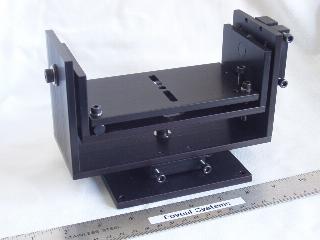
RM3_3a Large, 3-axis Rigid Mount
|
|
The
Foveal 2-Axis and 3-Axis Rigid Camera Mounts
for small-to-large sized "box" cameras. Features:
-
Three Sizes:
- RM1 for small cameras.
- RM2 for medium-sized cameras and small environmental housings.
- RM3
for large-sized cameras and medium-sized environmental housings.
-
Two Models:
- 2-Axis Adjustment of pan, tilt.
- 3-Axis Adjustment of pan, tilt and roll.
- Fine Adjustment of all axes.
- Individual axis lock down
makes adjustment easier, more precise, and prevents accidental change.
- Heavy-duty construction.
- Reconfigurable to many alternative configurations.
|
The
Foveal 2-Axis Fine-Adjustment Camera Mount
for small-to-medium sized "box" cameras. Features:
- Fine Adjustment of pan and tilt axes.
- Individual axis lock down makes adjustment easier,
more precise, and prevents accidental change.
- Many Hole-and-Slot Patterns to accommodate many cameras.
- Sturdy construction.
- Reconfigurable to many alternative configurations.
|
The
FM3_2a
for the
Cognex 5100/5400
and the
Matrox GatorEye
&
Iris GT
cameras
Compatible with the Cognex 5100/5400 series cameras,
and the Matrox GatorEye & Iris GT cameras.
Both Pan and Tilt axes rotate around the optical center of the imaging element.
|
|
|
|
|
"Let me drill my own holes or slots!"
Order the
FM0_2a
mount
with the undrilled Inner-L.
Or we'll drill it to your specification.
|

|
|
|
|
Why Foveal Mounts?
The
Foveal Rigid Camera Mounts
were created to solve a particular problem,
namely to precisely position a camera and then lock it down so it will not move,
even under strong "persuasion".
The three sizes of Rigid Mount, the
RM1,
RM2 and
RM3 ,
accommodate a broad range of cameras and environmental housings, and are
available in both
2-Axis
and
3-Axis
models.
Our favorite story about the Rigid Mount comes from a manufacturing floor
where a computer-vision system takes measurements as parts are built.
One day the vision system engineer came in to find a tool belt hanging on the
camera mount.
"I guess it weighed about 35 pounds!"
He was certain he would have to realign the camera.
That doesn't take long with these mounts
but would mean shutting down the line.
But he didn't have to make any adjustments.
The camera had not moved!
The Rigid Mounts work very well.
But some potential
customers of the 2-Axis Rigid Camera Mounts found they were too elaborate
for their applications.
So we created the
Foveal Fine-adjustment 2-Axis Mounts.
While not as robust as the Rigid Mounts,
the Fine-adjustment Mounts
will work very well in applications where the mount will not be subjected
to extreme disturbances.
www.FovealMounts.com 2017/12/29 20:05:29 9.12
Foveal 2- and 3-Axis Rigid Camera Mounts -- Foveal Systems
Foveal
2- and 3-Axis Rigid Camera Mounts
Ideal for Machine-Vision Applications

RM2_3a-SMP4
| |
The
Foveal 3-Axis Rigid Camera Mount
for small-to-medium sized "box" cameras features:
-
3 sizes
RM1
for tiny machine vision cameras
RM2
for small box cameras
RM3
for larger box cameras or small environment housings.
-
3-Axis Adjustment
of
pan, tilt and roll.
2-Axis
models also available.
-
Fine Adjustment
of all axes.
-
Individual axis lock down
makes adjustment easier,
more precise,
and
prevents accidental change.
-
Heavy-duty construction.
|
| Click to enlarge pictures and drawings. |
Motivation
A key element in creating reliable
AutoAuditorium System
installations is
ensuring that the Tracking Camera and Spotting Camera stay in precise
alignment relative to each other.
The Tracking Camera has pan and tilt positions which must be related to
specific points in the Spotting Camera image,
and those relationships must be fixed and permanent.
In the past,
misalignment has been an all-too-frequent cause of Tracking Camera errors.
A key element to keeping the Spotting Camera image aligned with the
Tracking Camera is to guarantee that once the Spotting Camera is
positioned, it does not move.
We were unable to find camera mounts that permitted fine adjustment in the
pan, tilt and roll axis that then locked in those adjustments,
so we designed our own.
We also have used the 3-Axis Rigid Camera Mount for the Slide Camera,
to ensure that it is always locked into the same position pointed at the
projection screen.
The ability to finely adjust the roll position of the camera makes it
much easier to set
the Slide Camera image absolutely square with the projection screen.
Customers of the Rigid Mounts include companies installing
machine-vision technology for laboratory and manufacturing use.
These camera mounts are also suitable for
other types of instruments and sensors.
Custom Widths to accommodate wider cameras, instruments, sensors, are available.
For a less expensive,
less robust,
two axis mount that features fine adjustment and locking
of the pan and tilt axes, see the
Foveal 2-Axis Fine-Adjustment Camera Mounts.
Features
The 3-Axis Rigid Camera Mount
may be supported with the base down or the base up.
In either position, the plate the camera attaches to can be
either below or above the camera.
When unlocked,
there is sufficient friction to hold the camera in position.
Coarse position can be set by hand.
Fine adjustments are made using a hex wrench,
allowing for extremely fine positioning.
Independent adjustment of each axis
means each adjustment does not affect the other two.
All adjustments and locking are made with a single hex wrench.
Once the mount is locked, the camera does not move.
As a testimonial to that last statement,
one customer tells us that they found a heavy tool belt
hanging on one of the RM3_3a Mounts on their factory floor.
The machine vision camera had not moved.
Specifications
RM0 RM1 Specifications
Model RM0_2a 2-axis
 Prices and Delivery: Prices and Delivery:
Model RM0_3a 3-axis
 RM0 Photos, Dimensional Drawings, CAD Files RM0 Photos, Dimensional Drawings, CAD Files
NOTE: RM1 model is Discontinued; limited quantities available
Model RM1_2a 2-axis
 Prices and Delivery: Prices and Delivery:
Model RM1_3a 3-axis
 RM1 Photos, Dimensional Drawings, CAD Files RM1 Photos, Dimensional Drawings, CAD Files
Model RM1m_2a †
metric hardware, 2-axis
Model RM1m_3a †
metric hardware, 3-axis
|
| Materials |
black anodized 6061-T651 aluminum,
stainless steel hardware, nylon, Delrin |
| Weight (approximate) |
1.5 pounds |
0.7 kilograms |
|
| Dimensions |
| |
Overall Height |
3.63 inches |
9.22 centimeters |
|
| |
Overall Width |
5.00 inches |
12.70 centimeters |
|
| |
Overall Depth |
3.00 inches |
7.62 centimeters |
|
| Maximum Camera Dimensions |
| |
Width at Base |
2.00 inches |
5.08 centimeters |
| |
Overall Width |
2.50 inches |
6.35 centimeters |
| Coarse Position Range |
| |
Pan |
360 degrees |
|
| |
Tilt |
Up to 360 degrees,
depending on the camera size and
the amount it overhangs the mounting plate. |
|
| Fine Position Range |
| |
Pan |
± 12 degrees |
|
| |
Tilt |
± 12 degrees |
|
| |
Roll (RM1_3a only) |
± 3 degrees |
|
Choose One:
Square Mounting Plate Dimensions
 Mounting Plate Drawing
Mounting Plate Drawing
|
| |
Height |
0.25 inches |
0.63 centimeters |
| |
Width |
3.00 inches |
7.62 centimeters |
| |
Depth |
3.00 inches |
7.62 centimeters |
Rectangular Mounting Plate Dimensions
 Mounting Plate Drawing
Mounting Plate Drawing
|
| |
Height |
0.25 inches |
0.63 centimeters |
| |
Width |
5.00 inches |
12.70 centimeters |
| |
Depth |
2.00 inches |
5.08 centimeters |
L-bracket Mounting Plate Dimensions
 Mounting Plate Drawing Mounting Plate Drawing
|
| |
Height |
1.25 inches |
3.17 centimeters |
| |
Width |
3.00 inches |
6.72 centimeters |
| |
Depth |
2.25 inches |
5.71 centimeters |
|
†
The RM1m_2a and RM1m_3a mounts
are built with metric standard screws and fasteners instead of ASME
(American Society of Mechanical Engineers) standard screws and
fasteners.
Please call before ordering.
|
RM2 Specifications
Model RM2_2a 2-axis
 Prices and Delivery:
Prices and Delivery:
Model RM2_3a 3-axis
 RM2 Photos, Dimensional Drawings, CAD Files RM2 Photos, Dimensional Drawings, CAD Files
|
| Materials |
black anodized 6061-T651 aluminum,
stainless steel hardware, nylon, Delrin |
| Weight (approximate) |
3.2 pounds |
1.5 kilograms |
|
| Dimensions |
| |
Overall Height |
4.80 inches |
12.19 centimeters |
|
| |
Overall Width |
7.10 inches |
18.03 centimeters |
|
| |
Overall Depth |
4.75 inches |
12.06 centimeters |
|
| Maximum Camera Dimensions |
| |
Width at Base |
3.90 inches |
9.90 centimeters |
| |
Overall Width |
4.30 inches |
10.92 centimeters |
| Coarse Position Range |
| |
Pan |
360 degrees |
| |
Tilt |
Up to 360 degrees,
depending on the camera size and
the amount it overhangs the mounting plate. |
| Fine Position Range |
| |
Pan |
± 12 degrees |
| |
Tilt |
± 12 degrees |
| |
Roll (RM2_3a only) |
± 8 degrees |
| Mounting Plate Dimensions |
| |
Height |
0.25 inches |
0.63 centimeters |
| |
Width |
4.75 inches |
12.06 centimeters |
| |
Depth |
4.75 inches |
12.06 centimeters |
RM3 Specifications
Model RM3_2a 2-axis
 Prices and Delivery:
Prices and Delivery:
Model RM3_3a 3-axis
 RM3 Photos, Dimensional Drawings, CAD Files RM3 Photos, Dimensional Drawings, CAD Files
|
| Very similar to Models RM2_2a and
RM2_3a except: |
| |
Weight (approximate) |
3.5 pounds |
1.6 kilograms |
|
| Dimensions |
| |
Overall Width |
8.10 inches |
20.57 centimeters |
|
| Maximum Camera Dimensions |
| |
Width at Base |
4.90 inches |
12.44 centimeters |
|
| |
Overall Width |
5.30 inches |
13.46 centimeters |
|
Custom Widths to accommodate wider cameras are available.
Options
|
For RM2 and RM3 mounts only
|

|
Super Fine Adjustment (SFA) with lock nuts Option
Prices and Delivery

|
This option provides even finer adjustment than the Extra Fine
Adjustment (EFA) Option, above.
There are actually two adjustments made using two different hex
keys.
The coarse adjustment is the same as the EFA option,
approximately 1 degree turn of the larger hex hey.
The fine adjustment, made with a smaller hex hey,
provides approximately 1 degree per 15 turns.
Available on the RM2 and RM3 models only.
SFA Manual

|
United States dollars
FOB New Jersey, United States
6.625% Sales Tax to customers in New Jersey
Call 973 822-2085
Questions? Call 973 822-2085
United States dollars
FOB New Jersey, United States
6.625% Sales Tax to customers in New Jersey
Call 973 822-2085
RM0 Photos, Dimensional Drawings, CAD Files
Dimensions in inches.
Model RM0_2a-SMP3 2-axis, Square Mounting Plate
Choose one Mounting Plate
 SMP3, RMP8 and LMP8 Mounting Plate Drawings
SMP3, RMP8 and LMP8 Mounting Plate Drawings
Model RM0_3a-SMP3 3-axis, Square Mounting Plate
Choose one Mounting Plate
 SMP3, RMP8 and LMP8 Mounting Plate Drawings
SMP3, RMP8 and LMP8 Mounting Plate Drawings
RM1 Photos, Dimensional Drawings, CAD Files
NOTE: RM1 model is Discontinued; limited quantities available
Dimensions in inches.
Model RM1_2a-SMP3 2-axis, Square Mounting Plate
Model RM1m_2a-SMP3 metric hardware, 2-axis, Square Mounting Plate
Choose one Mounting Plate
 SMP3, RMP8 and LMP8 Mounting Plate Drawings
SMP3, RMP8 and LMP8 Mounting Plate Drawings
Model RM1_3a-SMP3 3-axis, Square Mounting Plate
Model RM1m_3a-SMP3 metric hardware, 3-axis, Square Mounting Plate
Choose one Mounting Plate
 SMP3, RMP8 and LMP8 Mounting Plate Drawings
SMP3, RMP8 and LMP8 Mounting Plate Drawings
RM1m Photos, Dimensional Drawings, CAD Files
Dimensions in inches.
Model RM1m_2a-SMP3 metric hardware, 2-axis, Square Mounting Plate
Choose one Mounting Plate
 SMP3, RMP8 and LMP8 Mounting Plate Drawings
SMP3, RMP8 and LMP8 Mounting Plate Drawings
Model RM1m_3a-SMP3 metric hardware, 3-axis, Square Mounting Plate
Choose one Mounting Plate
 SMP3, RMP8 and LMP8 Mounting Plate Drawings
SMP3, RMP8 and LMP8 Mounting Plate Drawings
Mounting Plate Options
RM1 mounts
There are four mounting plate options available for the RM0 and RM1 mounts (above).
|
no mounting plate
|
The pan pivot has two 8-32 threaded holes in it.
|
|
-SMP3
|
Square Mounting Plate suitable for general mounting to flat surfaces.
|
|
-RMP8
|
Rectangular Mounting Plate for general mounting or T-Slot framing
systems. †
|
|
-LMP8
|
L-bracket Mounting Plate specifically for T-Slot framing systems.
†
|
† For more information, see
Foveal Mounts - T-Slot Mounting Plates.
We also can design customized Mounting Plates to your specifications.
3 x 3 inch
Square Mounting Plate
-SMP3
|
5 x 2 inch
Rectangular Mounting Plate
-RMP8
|
Rectangular Mounting Plate
mounted on T-Slot frame
|
L-bracket Mounting Plate
-LMP8
|
L-bracket Mounting Plate
mounted on T-Slot frame
|

|

|

RM1_3a-RMP8
|
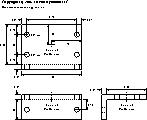
|
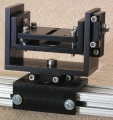
RM1_3a-LMP8
|
RM2 and RM3 mounts
There are four mounting plate options available for the
RM2 mounts and RM3 mounts (below).
|
no mounting plate
|
The pan pivot has two 10-32 threaded holes in it.
|
|
-SMP4
|
Square Mounting Plate suitable for general mounting to flat surfaces.
|
|
-RMP10
|
Rectangular Mounting Plate for general mounting or T-Slot framing
systems. †
‡
|
|
-LMP10
|
L-bracket Mounting Plate specifically for T-Slot framing systems.
†
‡
|
† For more information, see
Foveal Mounts - T-Slot Mounting Plates.
‡ The dimensions for the RMP10 and LMP10 mounting plates
for RM2 and RM3 mounts
are the same as for the RM0 mounting plates (above).
|
4.75 x 4.75 inch
Square Mounting Plate
-SMP4
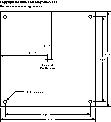
|
RM2 and RM3 Photos, Dimensional Drawings, CAD Files
Dimensions in inches.
Model RM2_2a-SMP4 2-axis, Square Mounting Plate
Choose one Mounting Plate
 SMP4, RMP10 and LMP10 Mounting Plate Drawings
SMP4, RMP10 and LMP10 Mounting Plate Drawings
Model RM2_3a-SMP4 3-axis, Square Mounting Plate
Choose one Mounting Plate
 SMP4, RMP10 and LMP10 Mounting Plate Drawings
SMP4, RMP10 and LMP10 Mounting Plate Drawings
Model RM3_2a-SMP4 2-axis, Square Mounting Plate
Choose one Mounting Plate
 SMP4, RMP10 and LMP10 Mounting Plate Drawings
SMP4, RMP10 and LMP10 Mounting Plate Drawings
Model RM3_3a-SMP4 3-axis, Square Mounting Plate
Choose one Mounting Plate
 SMP4, RMP10 and LMP10 Mounting Plate Drawings
SMP4, RMP10 and LMP10 Mounting Plate Drawings
Camera Mounting Alternatives
Adjusting camera mounts can become tedious in tight or inconvenient
spaces.
We have made the Rigid Mounts customer-configurable,
so alternative placements of the adjustment screws are possible.

|

| |
For example,
it may be more convenient to have the tilt fine-adjustment screws available
from the top or back of the mount,
relative to the pan fine-adjustment screws.
As these drawings show, they can be moved.
|
| Click to enlarge pictures and drawings. |
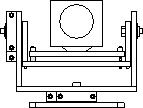
| |
Similarly, the tilt adjustments can be moved to the left side,
relative to the pan fine-adjustment screws.
|
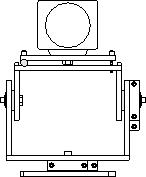
| |
The 3-axis mounts can be reconfigured as shown here.
|
| Click to enlarge pictures and drawings. |
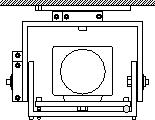
| |
And, of course, the Rigid Mounts can be hung base up.
|
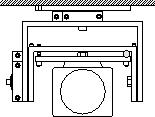
| |
Also, many cameras have mounting screws on top of the case,
which means they can be hung from the top directly.
|
| Click to enlarge pictures and drawings. |
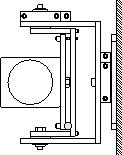
| |
And there are a few cameras where the mounting screw is on the side.
The base adjustment, which normally changes the pan angle now changes tilt,
tilt changes pan, and the roll adjustment still changes the roll angle.
|
If you need to verify a particular configuration, please contact us.
For a less expensive,
less robust,
two axis mount that features fine adjustment and locking
of the pan and tilt axes, see the
Foveal 2-Axis Fine-Adjustment Camera Mount.
Contact Us
For information on purchasing
Foveal 3-Axis Rigid Camera Mounts
please contact us ...
B & B Model Shop Services, Inc.
is a partner in the design and construction of the Foveal Rigid Camera Mounts.
Automatic Auditorium,
AutoAuditorium,
and
AutoAud
are licensed trademarks of
Telcordia Technologies, Inc.
Copyright © 2000 - 2024
Foveal Systems, LLC.
All rights reserved.
|
|
www.FovealMounts.com/rigid_mount.html Thu 01 Aug 2024 02:37:32 PM EDT based on 9.27
Foveal 2-Axis Fine-adjustment Camera Mount -- Foveal Systems
Foveal
2-Axis Fine-adjustment Camera Mount
Ideal for Machine-Vision Applications
"Nothing is more annoying then having to shim into alignment
a vision system camera on a production line.
With the FM mounts,
fine adjustments are done in 1/4 of the time.
Thanks Foveal."
|
Robert T. Couture
4th Vector Technologies
|
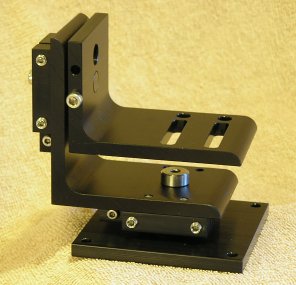
| |
The
Foveal Fine-adjustment 2-Axis Camera Mount
for small-to-medium sized "box" cameras features:
-
Fine Adjustment
of
pan and tilt axes.
-
Individual axis lock down
makes adjustment easier,
more precise,
and
prevents accidental change.
-
Sturdy construction.
|
| Click to enlarge pictures and drawings. |
|
English and Metric Models:
|
FM1_2a
 Drawing Drawing
|
The original design, with camera mounting slots 0.75 inch apart.
|
FM2_2a
 Drawing Drawing
|
Designed for cameras with metric M6 mounting sockets
20 millimeters apart.
|
|
Metric Slotted Models
→ DISCONTINUED ←
Only a few left.
Discounted Price.
Replaced by FM0_2a, below.
|

Click to enlarge.
|

Click to enlarge.
|
|
FM3mm_2a
FM4mm_2a
FM5mm_2a
FM6mm_2a
|
Designed for cameras with pairs of metric mounting holes
at right-angles to the optical centerline.
The slots range from 2 mm to 6 mm.
These are especially well suited to many
(not all) models of
Basler,
Cognex,
IDS,
JAI,
Sentech,
SICK,
Teledyne Dalsa,
PixeLINK,
and other machine vision cameras.
Full Description
|
|
|
Specialized Design
for
Cognex 5100/5400 series
and
Matrox GatorEye, Iris GT
cameras
|

Click to enlarge.
|
|
FM3_2a
|
Customized to the special mounting holes
on these cameras.
Both Pan and Tilt axes
rotate around the optical center of the imaging element.
Full Description
|
|
|
FM1_2a
and
FM2_2a
mounts work well with the
Cognex In-Site 7000 series
cameras
|

Click to enlarge.
|
FM1_2a
FM1_2a
|
These two mounts work well with these cameras.
Both Pan and Tilt axes
rotate near the optical center of the imaging element.
Full Description
|
|
|
"Let me drill my own holes or slots!"
|

Click to enlarge.
|
|
FM0_2a
|
Order the FM0_2a mount with the undrilled Inner-L.
Or we'll drill it to your specification.
Full Description
|
|
|
Choice of Mounting Plates:
|
Square
 Drawing Drawing
|
The original design, suitable for general mounting.
|
Rectangular
|
Designs for mounting on single-slot and 1-inch double slot
T-slot extrusion framing
 systems.
systems.
|
L-bracket
 Drawing Drawing
|
|
Specify which Mounting Plate when ordering.
|
|
Motivation
The
Foveal 3-Axis Rigid Camera Mount
was created to solve a particular problem,
namely the precise positioning of a camera that then is locked down so it will
not move even under strong "persuasion".
It does that very well.
But some potential
customers of the 3-Axis Rigid Camera Mounts found they were too elaborate
for their applications.
So we created the Fine-adjustment 2-Axis Mount.
Features
The 2-Axis Fine-adjustment Camera Mount
may be supported with the base down or the base up.
In either position, the plate the camera attaches to can be
either below or above the camera.
When coarse adjustments are unlocked,
there is sufficient friction to hold the camera in position.
Coarse position can be set by hand.
Fine adjustments are made using a hex wrench,
allowing for extremely fine positioning.
Independent adjustment of each axis
means each adjustment does not affect the other.
All adjustments and locking are made with a single 3/32 inch hex wrench.
Reconfiguration is done with a 9/64 inch hex wrench.
Once the mount is locked, the camera does not move.
While not as robust as the Rigid Mounts,
the Fine-adjustment Mount
will work very well in applications where the mount will not be subjected
to extreme disturbances.
They are also suitable for mounting other types of instruments and sensors.
For a more robust,
three axis mount that features fine adjustment and locking
of the pan, tilt, and roll axes, see the
Foveal 3-Axis Rigid Camera Mount.
Specifications
Options

|
Finger Adjustment Knobs (FAK) Option
Prices and Delivery

|
|
When the need is not set it and forget it
but instead the mount frequently needs to be finely adjusted,
we offer knobs for the fine position adjustment screws.
|

|
Lock Nuts and Lock Washers (LNLW) Option
Prices and Delivery

|
If your mount will be subjected to high vibration,
extra lock nuts and lock washers might help.
LNLW Installation Manual

|

|
Extra Fine Adjustment (EFA) with lock nuts Option
Prices and Delivery

|
The normal change in the Pan or Tilt angle is bit more than
2 degrees per turn of the position screws.
Should you need a finer adjustment, this option provides
slightly less than 1 degree per turn.
While shown here with the PTD option (below),
EFA and PTD are separate options.
EFA Manual

|
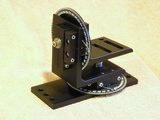
|
Pan and Tilt Protractor Dials (PTD) Option
Prices and Delivery

|
|
We offer mounts with Protractor Dials on both
the Pan and Tilt Axes so the angles can be read out.
See the complete description at
Foveal Mounts with Pan and Tilt Protractor Dials.
|
Prices and Delivery
United States dollars
FOB New Jersey, United States
6.625% Sales Tax to customers in New Jersey
Call 973 822-2085
Questions? Call 973 822-2085
Dimensional Drawings, CAD Files
Dimensions in inches.
|
Model FM1_2a-SMP3 (with Square Mounting Plate)
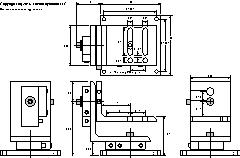
|
Model FM2_2a-SMP3 (with Square Mounting Plate)
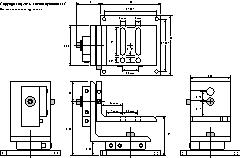
|
|
What are the differences between the FM1_2a and the FM2_2a?
First, the position and spacing of the two slots for the camera mounting
screws are not the same.
In the FM1_2a, one of the slots is centered over the Pan pivot.
In the FM2_2a, the Pan pivot centerline goes between the two slots.
Second, in the FM1_2a, the slots are three-quarters of an inch apart.
In the FM2_2a, the slots are 20 millimeters apart.
The FM1_2a works well with most cameras with 1/4-20 mounting sockets.
The FM2_2a works well with some cameras with M6 metric mounting sockets.
Of course, you can drill the anodized aluminum or
create an adaptor plate.
Or call us and we can discuss a custom design
to match your specific needs.
|
| Click to enlarge pictures and drawings. |
CAD files STEP format
FM1_2a-LMP.stp.zip
FM1_2a-RMP.stp.zip
FM1_2a-SMP3.stp.zip
|
CAD files STEP format
FM2_2a-LMP.stp.zip
FM2_2a-RMP.stp.zip
FM2_2a-SMP3.stp.zip
|
Mounting Plate Options
There are four mounting plate options for the FM mounts.
|
no mounting plate
|
The pan pivot has two 8-32 threaded holes in it.
|
|
-SMP3
|
Square Mounting Plate suitable for general mounting to flat surfaces.
|
|
-RMP
|
Rectangular Mounting Plate for general mounting or T-Slot framing
systems. †
|
|
-LMP
|
L-bracket Mounting Plate specifically for T-Slot framing systems.
†
|
† For more information, see
Foveal Mounts - T-Slot Mounting Plates.
3 x 3 inch
Square Mounting Plate
-SMP3
|
|
5 x 2 inch
Rectangular Mounting Plate
-RMP
|
|
L-bracket Mounting Plate
-LMP
|
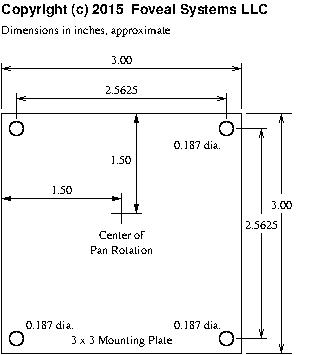
|
|

|
FM1_2a-RMP
mounted on T-Slot frame
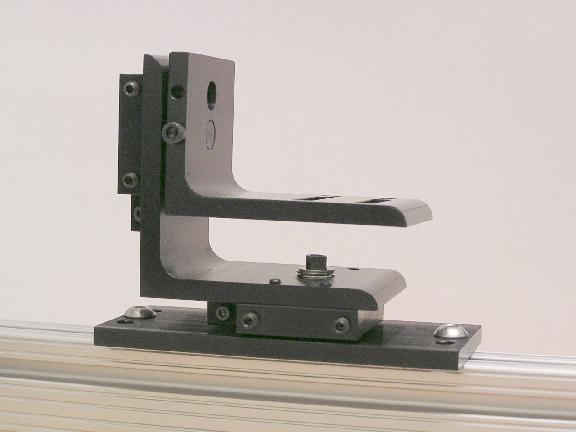
|
|
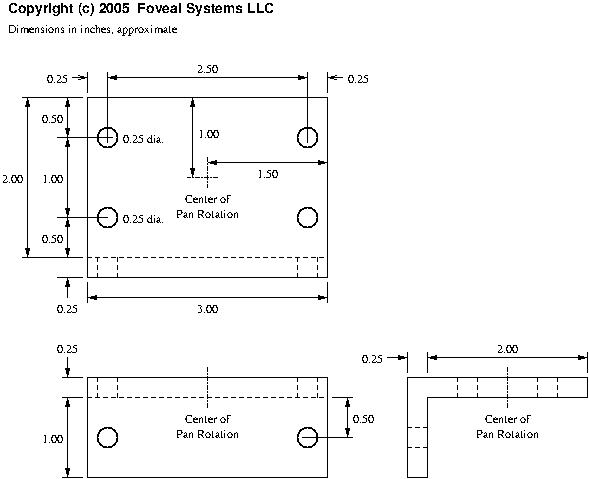
|
FM1_2a-LMP
mounted on T-Slot frame
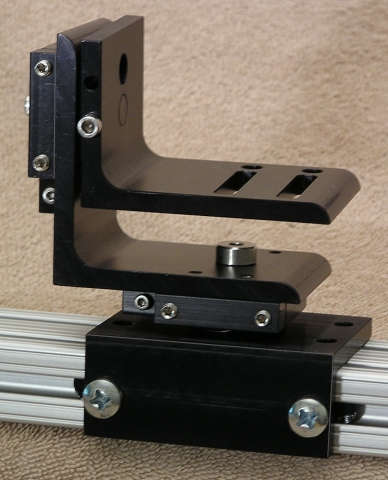
|
|
Click to enlarge pictures and drawings.
|
See CAD files Above

|
Camera Mounting Alternatives
Adjusting camera mounts can become tedious in tight or inconvenient
spaces.
We have made the Fine Mounts customer-configurable,
so alternative placements of the adjustment screws are possible.

|
For example,
it may be more convenient to have the pan and tilt
coarse- and fine-adjustment screws
available from the back of the mount.
As this drawing shows, they can be moved.
(Moving the pan and tilt screws are independent operations.
We do not know why one would want to, but they can be on opposite sides.)
|
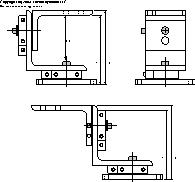
|
Note that these mounts can be configured with the tilt-axis L-bracket raised
above the pivot.
In this position, a small camera can be hung above the pan axis.
Also, the tilt axis locks can be repositioned so the tilt L-bracket hangs
outside the pan-axis base.
This can accommodate larger cameras and
a wider selection of tilt positions.
|
| Click to enlarge pictures and drawings. |

|
Here are some examples with small- and medium-sized cameras.
|
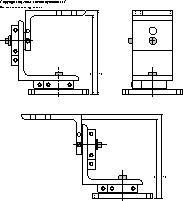
|
Note also that there is an alternate pivot point on the tilt L-bracket,
offset 0.5 inch.
In this position, even larger cameras can be accommodated.
|
| Click to enlarge pictures and drawings. |
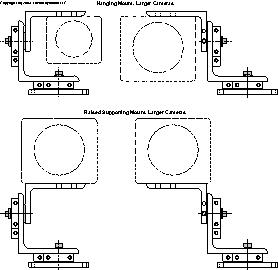
|
Here are some examples with medium- and large-sized cameras,
and examples where the camera needs to be lifted a well above the base of the
mount.
|
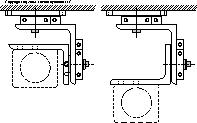
|
Also, many cameras have mounting screws on top of the case,
which means they can be hung from the top directly.
|
| Click to enlarge pictures and drawings. |

|
One customer needed to mount the camera from the rear.
|

|
And there are a few cameras where the mounting screw is on the side.
The pan adjustment, which normally changes the pan angle now changes tilt,
and the former tilt adjustment changes the pan angle.
|
| Click to enlarge pictures and drawings. |
If you need to verify a particular configuration, please contact us.
For a more robust,
three axis mount that features fine adjustment and locking
of the pan, tilt, and roll axes, see the
Foveal 3-Axis Rigid Camera Mount.
For information on purchasing
Foveal 2-Axis Fine Camera Mounts
please contact us ...
B & B Model Shop Services, Inc.
is a partner in the design and construction of the Foveal Fine Camera Mounts.
www.FovealMounts.com/fine_mount.html Wed 07 Aug 2024 11:30:11 AM EDT based on 9.31
Foveal Customizable 2-Axis Fine-Adjustment Camera Mount -- Foveal Systems
Foveal
Customizable 2-Axis Fine-Adjustment Camera Mount
When You Need Something More Than Our Standard Fine-adjustment Mounts

| |
Foveal FM0_2a Fine-Adjustment 2-Axis Customizable Camera Mount
-
Undrilled Camera Table
so you can machine it to meet your needs.
Or, if you like, we will drill it to your specifications.
See Prices and Delivery below.
-
Fine Adjustment
of
Pan and Tilt axes.
-
Individual axis lock down
makes adjustment easier,
more precise,
and
prevents accidental change.
-
Sturdy construction.
|
| Click to enlarge pictures and drawings. |
Motivation
If the hole patterns we offer in the other Fine Adjustment mounts do
not suit your needs,
you can order the FM0_2a which has no camera mounting holes and drill your own.
Or we can drill holes to your specification.
See Prices and Delivery below.
Features
The 2-Axis Fine-Adjustment Camera Mount
may be supported with the base down or the base up.
In either position, the plate the camera attaches to can be
either below or above the camera.
When coarse adjustments are unlocked,
there is sufficient friction to hold the camera in position.
Coarse position can be set by hand.
Fine adjustments are made using a hex wrench,
allowing for extremely fine positioning.
Independent adjustment of each axis
means each adjustment does not affect the other.
All adjustments and locking are made with a single 3/32 inch hex wrench.
Reconfiguration is done with a 9/64 inch hex wrench.
Once the mount is locked, the camera does not move.
While not as robust as the Rigid Mounts,
the Fine-adjustment Mount
will work very well in applications where the mount will not be subjected
to extreme disturbances.
They are also suitable for mounting other types of instruments and sensors.
For a more robust,
three axis mount that features fine adjustment and locking
of the pan, tilt, and roll axes, see the
Foveal 3-Axis Rigid Camera Mount.
Specifications
Options
Prices and Delivery
United States dollars
FOB New Jersey, United States
6.625% Sales Tax to customers in New Jersey
Call 973 822-2085
Questions? Call 973 822-2085
Dimensional Drawings, CAD Files
Dimensions in inches.
Mounting Plate Options
There are four mounting plate options for the FM mounts.
|
no mounting plate
|
The pan pivot has two 8-32 threaded holes in it.
|
|
-SMP3
|
Square Mounting Plate suitable for general mounting to flat surfaces.
|
|
-RMP
|
Rectangular Mounting Plate for general mounting or T-Slot framing
systems. †
|
|
-LMP
|
L-bracket Mounting Plate specifically for T-Slot framing systems.
†
|
† For more information, see
Foveal Mounts - T-Slot Mounting Plates.
3 x 3 inch
Square Mounting Plate
-SMP3
|
5 x 2 inch
Rectangular Mounting Plate
-RMP
|
Rectangular Mounting Plate
mounted on T-Slot frame
|
L-bracket Mounting Plate
-LMP
|
L-bracket Mounting Plate
mounted on T-Slot frame
|

|

|

FM0_2a-RMP
|

|

FM0_2a-LMP
|
CAD files STEP format
FM0_2a-SMP3.stp.zip
|
CAD files STEP format
FM0_2a-RMP.stp.zip
|
CAD files STEP format
FM0_2a-LMP.stp.zip
|
Camera Mounting Alternatives
Adjusting camera mounts can become tedious in tight or inconvenient
spaces.
We have made the Fine Mounts customer-configurable,
so alternative placements of the adjustment screws are possible.

|
For example,
it may be more convenient to have the pan and tilt
coarse- and fine-adjustment screws
available from the back of the mount.
As this drawing shows, they can be moved.
(Moving the pan and tilt screws are independent operations.
We do not know why one would want to, but they can be on opposite sides.)
|

|
Note that these mounts can be configured with the tilt-axis L-bracket raised
above the pivot.
In this position, a small camera can be hung above the pan axis.
Also, the tilt axis locks can be repositioned so the tilt L-bracket hangs
outside the pan-axis base.
This can accommodate larger cameras and
a wider selection of tilt positions.
|
| Click to enlarge pictures and drawings. |

|
Here are some examples with small- and medium-sized cameras.
|

|
Note also that there is an alternate pivot point on the tilt L-bracket,
offset 0.5 inch.
In this position, even larger cameras can be accommodated.
|
| Click to enlarge pictures and drawings. |

|
Here are some examples with medium- and large-sized cameras,
and examples where the camera needs to be lifted a well above the base of the
mount.
|

|
Also, many cameras have mounting screws on top of the case,
which means they can be hung from the top directly.
|
| Click to enlarge pictures and drawings. |

|
One customer needed to mount the camera from the rear.
|

|
And there are a few cameras where the mounting screw is on the side.
The pan adjustment, which normally changes the pan angle now changes tilt,
and the former tilt adjustment changes the pan angle.
|
| Click to enlarge pictures and drawings. |
If you need to verify a particular configuration, please contact us.
For a more robust,
three axis mount that features fine adjustment and locking
of the pan, tilt, and roll axes, see the
Foveal 3-Axis Rigid Camera Mount.
For information on purchasing
Foveal 2-Axis Fine Camera Mounts
please contact us ...
B & B Model Shop Services, Inc.
is a partner in the design and construction of the Foveal Fine Camera Mounts.
www.FovealMounts.com/fm0_2a.html Thu 01 Aug 2024 02:37:02 PM EDT based on 9.18
FM Mounts for Metric Cameras -- Foveal Systems
Many machine vision cameras have threaded mounting holes
that take metric screws,
usually ranging in size from M3 to M6.
Foveal Mounts FM (Fine-adjustment Mounts)
now come with general purpose slot patterns to accommodate
many of those manufacturers,
including many (not all) models made by
Allied Vision,
Basler,
Cognex,
Edmund Optics,
IDS,
JAI,
Keyence,
Manta,
Point Grey,
Sentech,
Teledyne Dalsa,
PixeLINK,
and other machine vision brands.
As with all FM mounts, they also provide
-
Fine Adjustment
of
Pan and Tilt axes.
-
Individual axis lock down
makes adjustment easier,
more precise,
and
prevents accidental change.
-
Sturdy construction.
|
http://searchassist.verizon.com/main?ParticipantID=euekiz39ksg8nwp7iqj2fp5wzfwi5q76&FailedURI=http%3A%2F%2Fundefined%2F%3Fuid%3Dundefined%26ap%3Dundefined%26source%3Dundefined%26page%3Dnewtab%26uc%3Dundefined%26implementation_id%3Dmaps_4.0.3&FailureMode=1&Implementation=&AddInType=4&Version=pywr1.0&ClientLocation=us
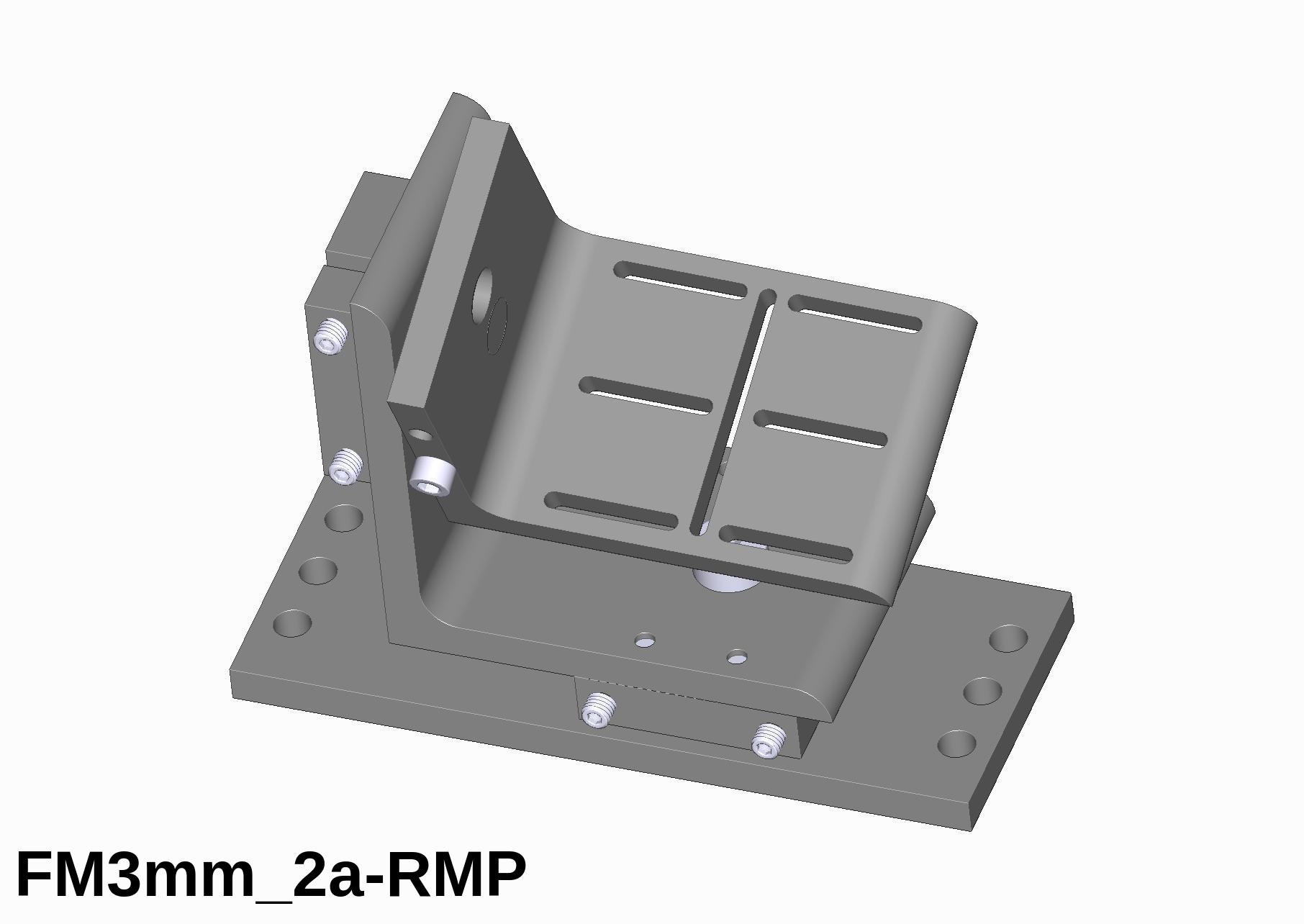
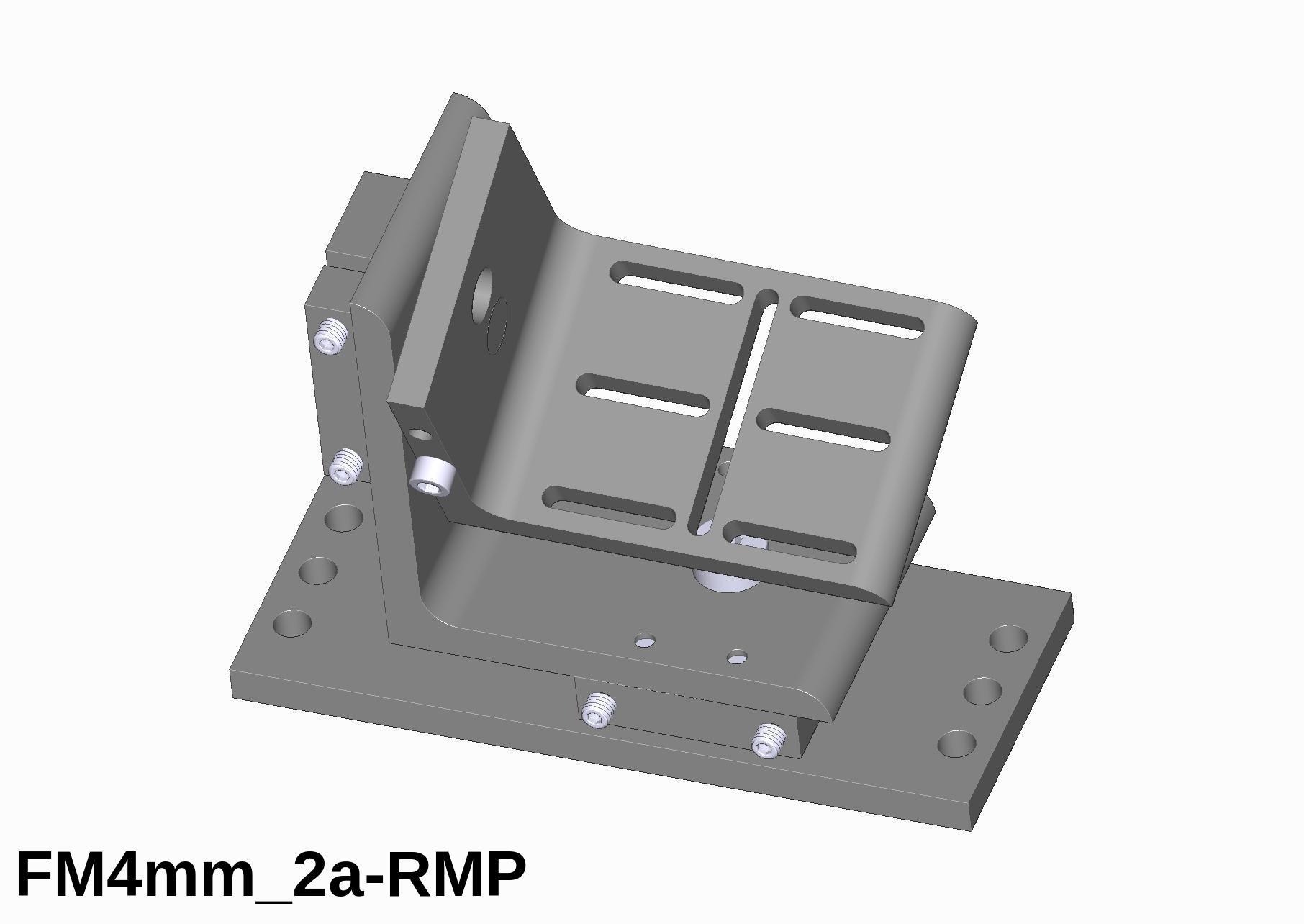
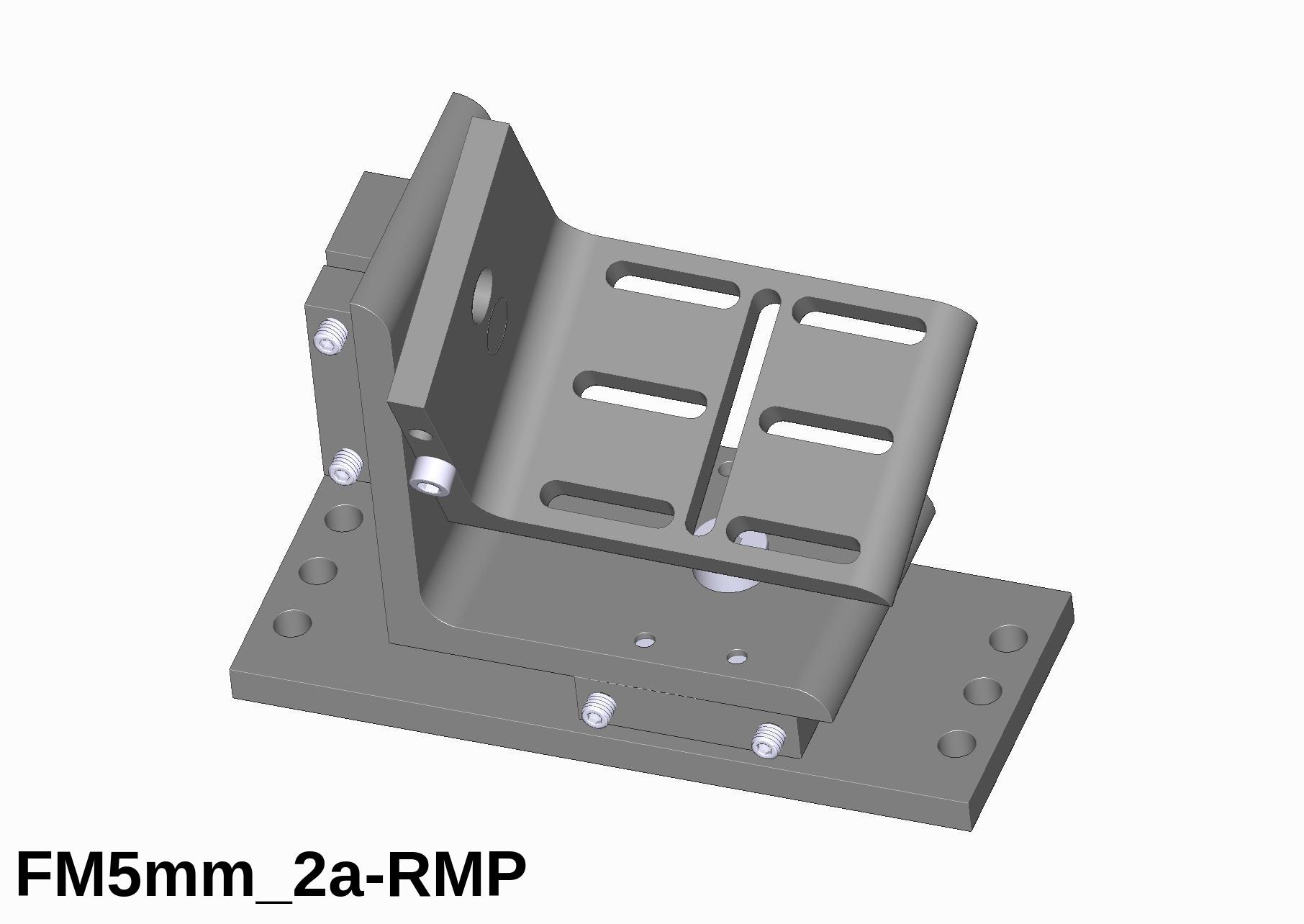
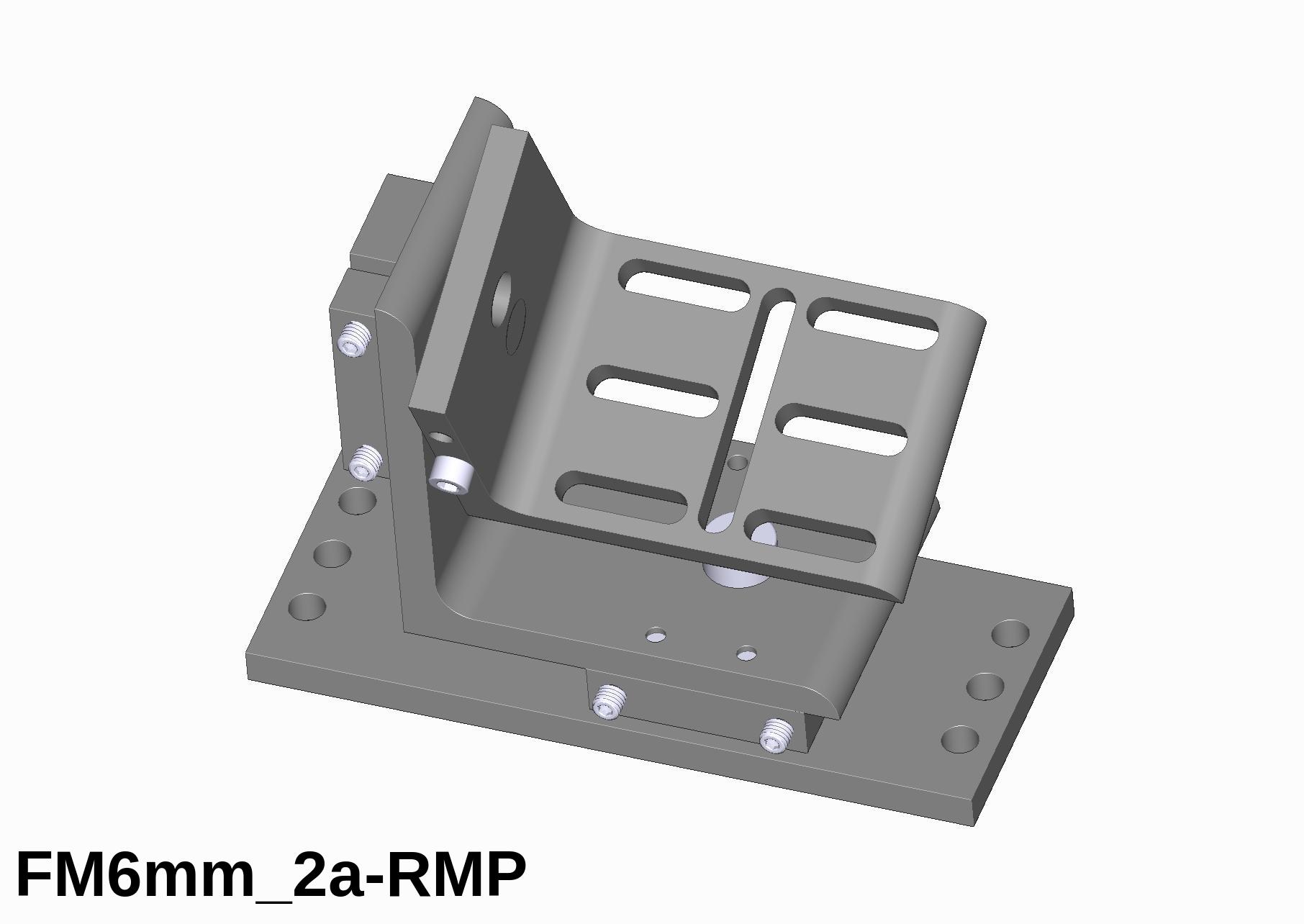

|
|
Fine-adjustment Mounts for cameras using
3mm, 4mm, 5mm and 6mm metric mounting screws.
|
|
Click to enlarge pictures and drawings.
|
Motivation
The original
Foveal 2-Axis Fine_Adjustment Camera Mounts,
models
were designed a decade ago to match common
machine vision camera mounting configurations.
But we realized that there are now lots of machine vision cameras out there
that use metric screws,
but the hole patterns are not at all standardized.
Now we offer these mounts with slot patterns that will accommodate
many different hole spacings,
and even 3-screw triangular patterns.
Features
in common with all FM models
The 2-Axis Fine-Adjustment Camera Mounts
may be supported with the base down or the base up.
In either position, the plate the camera attaches to can be
either below or above the camera.
When coarse adjustments are unlocked,
there is sufficient friction to hold the camera in position.
Coarse position can be set by hand.
Fine adjustments are made using a hex wrench,
allowing for extremely fine positioning.
Independent adjustment of each axis
means each adjustment does not affect the other.
All adjustments and locking are made with a single 3/32 inch hex wrench.
Reconfiguration is done with a 9/64 inch hex wrench.
Once the mount is locked, the camera does not move.
And the mounts are highly reconfigurable.
See the
Fine-adjustment Mount
page for other, non-metric models.
Examples
→ DISCONTINUED ←
Only a few left.
Discounted Price.
See Prices and Delivery

Options

|
Finger Adjustment Knobs (FAK) Option
Prices and Delivery

|
|
When the need is not set it and forget it
but instead the mount frequently needs to be finely adjusted,
we offer knobs for the fine position adjustment screws.
|

|
Lock Nuts and Lock Washers (LNLW) Option
Prices and Delivery

|
If your mount will be subjected to high vibration,
extra lock nuts and lock washers might help.
LNLW Installation Manual

|

|
Extra Fine Adjustment (EFA) with lock nuts Option
Prices and Delivery

|
The normal change in the Pan or Tilt angle is bit more than
2 degrees per turn of the position screws.
Should you need a finer adjustment, this option provides
slightly less than 1 degree per turn.
While shown here with the PTD option (below),
EFA and PTD are separate options.
EFA Manual

|

|
Pan and Tilt Protractor Dials (PTD) Option
Prices and Delivery

|
|
We offer mounts with Protractor Dials on both
the Pan and Tilt Axes so the angles can be read out.
See the complete description at
Foveal Mounts with Pan and Tilt Protractor Dials.
|
CAD File Downloads
STEP format
Contact us for any combination that is missing here.
Mounting Plate Options
There are four mounting plate options for the FM mounts.
|
no mounting plate
|
The pan pivot has two 8-32 threaded holes in it.
|
|
-SMP3
|
Square Mounting Plate suitable for general mounting to flat surfaces.
|
|
-RMP
|
Rectangular Mounting Plate for general mounting or T-Slot framing
systems. †
|
|
-LMP
|
L-bracket Mounting Plate specifically for T-Slot framing systems.
†
|
† For more information, see
Foveal Mounts - T-Slot Mounting Plates.
3 x 3 inch
Square Mounting Plate
-SMP3
|
|
5 x 2 inch
Rectangular Mounting Plate
-RMP
|
|
L-bracket Mounting Plate
-LMP
|

|
|

|
FM1_2a-RMP
mounted on T-Slot frame

|
|

|
FM1_2a-LMP
mounted on T-Slot frame

|
|
Click to enlarge pictures and drawings.
|
See CAD files Above

|
Prices and Delivery
United States dollars
FOB New Jersey, United States
6.625% Sales Tax to customers in New Jersey
Call 973 822-2085
Camera Mounting Alternatives
Adjusting camera mounts can become tedious in tight or inconvenient
spaces.
We have made the Fine Mounts customer-configurable,
so alternative placements of the adjustment screws are possible.

|
For example,
it may be more convenient to have the pan and tilt
coarse- and fine-adjustment screws
available from the back of the mount.
As this drawing shows, they can be moved.
(Moving the pan and tilt screws are independent operations.
We do not know why one would want to, but they can be on opposite sides.)
|

|
Note that these mounts can be configured with the tilt-axis L-bracket raised
above the pivot.
In this position, a small camera can be hung above the pan axis.
Also, the tilt axis locks can be repositioned so the tilt L-bracket hangs
outside the pan-axis base.
This can accommodate larger cameras and
a wider selection of tilt positions.
|
| Click to enlarge pictures and drawings. |

|
Here are some examples with small- and medium-sized cameras.
|

|
Note also that there is an alternate pivot point on the tilt L-bracket,
offset 0.5 inch.
In this position, even larger cameras can be accommodated.
|
| Click to enlarge pictures and drawings. |

|
Here are some examples with medium- and large-sized cameras,
and examples where the camera needs to be lifted a well above the base of the
mount.
|

|
Also, many cameras have mounting screws on top of the case,
which means they can be hung from the top directly.
|
| Click to enlarge pictures and drawings. |

|
One customer needed to mount the camera from the rear.
|

|
And there are a few cameras where the mounting screw is on the side.
The pan adjustment, which normally changes the pan angle now changes tilt,
and the former tilt adjustment changes the pan angle.
|
| Click to enlarge pictures and drawings. |
If you need to verify a particular configuration, please contact us.
For a more robust,
three axis mount that features fine adjustment and locking
of the pan, tilt, and roll axes, see the
Foveal 3-Axis Rigid Camera Mount.
Contact
For information on purchasing
Foveal 2-Axis Fine-adjustment Mounts
please contact us ...
B & B Model Shop Services, Inc.
is a partner in the design and construction of the Foveal Fine Camera Mounts.
www.FovealMounts.com/MetricMounts.html Thu 01 Aug 2024 02:36:49 PM EDT based on 9.33
Foveal Customizable 2-Axis Fine-Adjustment Camera Mount -- Foveal Systems
Foveal
Customizable 2-Axis Fine-Adjustment Camera Mount
When You Need Something More Than Our Standard Fine-adjustment Mounts

| |
Foveal FM0_2a Fine-Adjustment 2-Axis Customizable Camera Mount
-
Undrilled Camera Table
so you can machine it to meet your needs.
Or, if you like, we will drill it to your specifications.
See Prices and Delivery below.
-
Fine Adjustment
of
Pan and Tilt axes.
-
Individual axis lock down
makes adjustment easier,
more precise,
and
prevents accidental change.
-
Sturdy construction.
|
| Click to enlarge pictures and drawings. |
Motivation
If the hole patterns we offer in the other Fine Adjustment mounts do
not suit your needs,
you can order the FM0_2a which has no camera mounting holes and drill your own.
Or we can drill holes to your specification.
See Prices and Delivery below.
Features
The 2-Axis Fine-Adjustment Camera Mount
may be supported with the base down or the base up.
In either position, the plate the camera attaches to can be
either below or above the camera.
When coarse adjustments are unlocked,
there is sufficient friction to hold the camera in position.
Coarse position can be set by hand.
Fine adjustments are made using a hex wrench,
allowing for extremely fine positioning.
Independent adjustment of each axis
means each adjustment does not affect the other.
All adjustments and locking are made with a single 3/32 inch hex wrench.
Reconfiguration is done with a 9/64 inch hex wrench.
Once the mount is locked, the camera does not move.
While not as robust as the Rigid Mounts,
the Fine-adjustment Mount
will work very well in applications where the mount will not be subjected
to extreme disturbances.
They are also suitable for mounting other types of instruments and sensors.
For a more robust,
three axis mount that features fine adjustment and locking
of the pan, tilt, and roll axes, see the
Foveal 3-Axis Rigid Camera Mount.
Specifications
Options
Prices and Delivery
United States dollars
FOB New Jersey, United States
6.625% Sales Tax to customers in New Jersey
Call 973 822-2085
Questions? Call 973 822-2085
Dimensional Drawings, CAD Files
Dimensions in inches.
Mounting Plate Options
There are four mounting plate options for the FM mounts.
|
no mounting plate
|
The pan pivot has two 8-32 threaded holes in it.
|
|
-SMP3
|
Square Mounting Plate suitable for general mounting to flat surfaces.
|
|
-RMP
|
Rectangular Mounting Plate for general mounting or T-Slot framing
systems. †
|
|
-LMP
|
L-bracket Mounting Plate specifically for T-Slot framing systems.
†
|
† For more information, see
Foveal Mounts - T-Slot Mounting Plates.
3 x 3 inch
Square Mounting Plate
-SMP3
|
5 x 2 inch
Rectangular Mounting Plate
-RMP
|
Rectangular Mounting Plate
mounted on T-Slot frame
|
L-bracket Mounting Plate
-LMP
|
L-bracket Mounting Plate
mounted on T-Slot frame
|

|

|

FM0_2a-RMP
|

|

FM0_2a-LMP
|
CAD files STEP format
FM0_2a-SMP3.stp.zip
|
CAD files STEP format
FM0_2a-RMP.stp.zip
|
CAD files STEP format
FM0_2a-LMP.stp.zip
|
Camera Mounting Alternatives
Adjusting camera mounts can become tedious in tight or inconvenient
spaces.
We have made the Fine Mounts customer-configurable,
so alternative placements of the adjustment screws are possible.

|
For example,
it may be more convenient to have the pan and tilt
coarse- and fine-adjustment screws
available from the back of the mount.
As this drawing shows, they can be moved.
(Moving the pan and tilt screws are independent operations.
We do not know why one would want to, but they can be on opposite sides.)
|

|
Note that these mounts can be configured with the tilt-axis L-bracket raised
above the pivot.
In this position, a small camera can be hung above the pan axis.
Also, the tilt axis locks can be repositioned so the tilt L-bracket hangs
outside the pan-axis base.
This can accommodate larger cameras and
a wider selection of tilt positions.
|
| Click to enlarge pictures and drawings. |

|
Here are some examples with small- and medium-sized cameras.
|

|
Note also that there is an alternate pivot point on the tilt L-bracket,
offset 0.5 inch.
In this position, even larger cameras can be accommodated.
|
| Click to enlarge pictures and drawings. |

|
Here are some examples with medium- and large-sized cameras,
and examples where the camera needs to be lifted a well above the base of the
mount.
|

|
Also, many cameras have mounting screws on top of the case,
which means they can be hung from the top directly.
|
| Click to enlarge pictures and drawings. |

|
One customer needed to mount the camera from the rear.
|

|
And there are a few cameras where the mounting screw is on the side.
The pan adjustment, which normally changes the pan angle now changes tilt,
and the former tilt adjustment changes the pan angle.
|
| Click to enlarge pictures and drawings. |
If you need to verify a particular configuration, please contact us.
For a more robust,
three axis mount that features fine adjustment and locking
of the pan, tilt, and roll axes, see the
Foveal 3-Axis Rigid Camera Mount.
For information on purchasing
Foveal 2-Axis Fine Camera Mounts
please contact us ...
B & B Model Shop Services, Inc.
is a partner in the design and construction of the Foveal Fine Camera Mounts.
www.FovealMounts.com/fm0_2a.html Thu 01 Aug 2024 02:37:02 PM EDT based on 9.18
FM3_2a Mount for Cognex In-Sight 5000 and 9000 series Cameras -- Foveal Systems
Foveal FM3_2a Mount
for Cognex In-Sight 5000 and 9000 series cameras
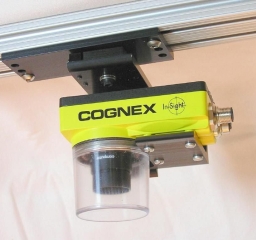
Click to enlarge pictures and drawings.
| |
Foveal FM3_2a Fine-Adjustment 2-Axis Camera Mount
-
Compatible with the
Cognex® In-Sight® 5100, 5400, 5600 and 9000 camera lines
-
Pan and Tilt Axes are
aligned with the optical center
of the imaging element,
making alignment easier.
-
Fine Adjustment
of
Pan and Tilt axes.
-
Individual axis lock down
makes adjustment easier,
more precise,
and
prevents accidental change.
-
Sturdy construction.
® "Cognex" and "In-Sight" are registered trademarks of Cognex Corporation.
| |
other cameras that fit the FM3_2a
|
Motivation
The
Foveal 2-Axis Fine_Adjustment Camera Mounts,
models FM1_2a and FM2_2a,
are designed to match common
machine vision camera mounting configurations.
But a customer expressed the need for something similar
that could easily handle
the unusual mounting screw holes in the
Cognex In-Sight 5000 and 9000 series cameras.
(Other cameras in the Cognex line can be mounted on the FM1_2a and/or FM2_2a mounts. See also the Cognex In-Sight 7000 Mount  ).
).
So we created the FM3_2a Fine-adjustment 2-Axis Mount.
It shares the fine-adjustment features and mounting plate options of the other
Foveal FMs (Fine-adjustment Mounts).
Because the FM3_2a is designed specifically
for these make and model mounts,
we optimized the placement of the Pan and Tilt Axes so they are centered on the
imaging element inside the camera body.
The Cognex model series supported include the 5000, 5100, 5400, 5600, 5700, 9000, 9902 and 9912
Note: the stainless steel versions of these cameras are not compatible with the FM3_2a mounts.
However, see the CACognex5000 Camera Adapter can be used with those camera bodies.
Also see our other mounts suitable for fm3_2a_Cognex_DataMan_470.html cameras:
Features
in common with all FM models
The 2-Axis Fine-Adjustment Camera Mounts
may be supported with the base down or the base up.
In either position, the plate the camera attaches to can be
either below or above the camera.
When coarse adjustments are unlocked,
there is sufficient friction to hold the camera in position.
Coarse position can be set by hand.
Fine adjustments are made using a hex wrench,
allowing for extremely fine positioning.
Independent adjustment of each axis
means each adjustment does not affect the other.
All adjustments and locking are made with a single 3/32 inch hex wrench.
Reconfiguration is done with a 9/64 inch hex wrench.
Once the mount is locked, the camera does not move.
While not as robust as the Rigid Mounts,
the Fine-adjustment Mount
will work very well in applications where the mount will not be subjected
to extreme disturbances.
They are also suitable for mounting other types of instruments and sensors.
For more robust,
two- and three- axis mounts that feature fine adjustment and locking
of the pan, tilt, and roll axes, see the
Foveal 2- and 3-Axis Rigid Camera Mounts.
Specifications
Options

|
Finger Adjustment Knobs (FAK) Option
Prices and Delivery

|
|
When the need is not set it and forget it
but instead the mount frequently needs to be finely adjusted,
we offer knobs for the fine position adjustment screws.
|

|
Lock Nuts and Lock Washers (LNLW) Option
Prices and Delivery

|
If your mount will be subjected to high vibration,
extra lock nuts and lock washers might help.
LNLW Installation Manual

|

|
Extra Fine Adjustment (EFA) with lock nuts Option
Prices and Delivery

|
The normal change in the Pan or Tilt angle is bit more than
2 degrees per turn of the position screws.
Should you need a finer adjustment, this option provides
slightly less than 1 degree per turn.
While shown here with the PTD option (below),
EFA and PTD are separate options.
EFA Manual

|

|
Pan and Tilt Protractor Dials (PTD) Option
Prices and Delivery

|
|
We offer mounts with Protractor Dials on both
the Pan and Tilt Axes so the angles can be read out.
See the complete description at
Foveal Mounts with Pan and Tilt Protractor Dials.
|
Prices and Delivery
United State dollars
FOB New Jersey, United States
6.625% Sales Tax to customers in New Jersey
Call 973 822-2085
Questions? Call 973 822-2085
Photos, Dimensional Drawings, CAD Files
Dimensions in inches.
Mounting Plate Options
There are four mounting plate options for the FM mounts.
|
no mounting plate
|
The pan pivot has two 8-32 threaded holes in it.
|
|
-SMP3
|
Square Mounting Plate suitable for general mounting to flat surfaces.
|
|
-RMP
|
Rectangular Mounting Plate for general mounting or T-Slot framing
systems. †
|
|
-LMP
|
L-bracket Mounting Plate specifically for T-Slot framing systems.
†
|
† For more information, see
Foveal Mounts - T-Slot Mounting Plates.
3 x 3 inch
Square Mounting Plate
-SMP3
|
|
5 x 2 inch
Rectangular Mounting Plate
-RMP
|
|
L-bracket Mounting Plate
-LMP
|

|
|

|
FM3_2a-RMP
mounted on T-Slot frame
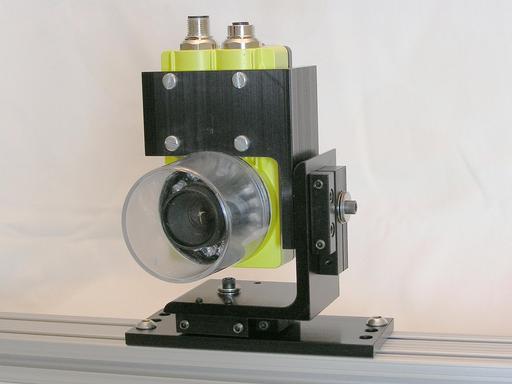
|
|

|
FM3_2a-LMP
mounted on T-Slot frame
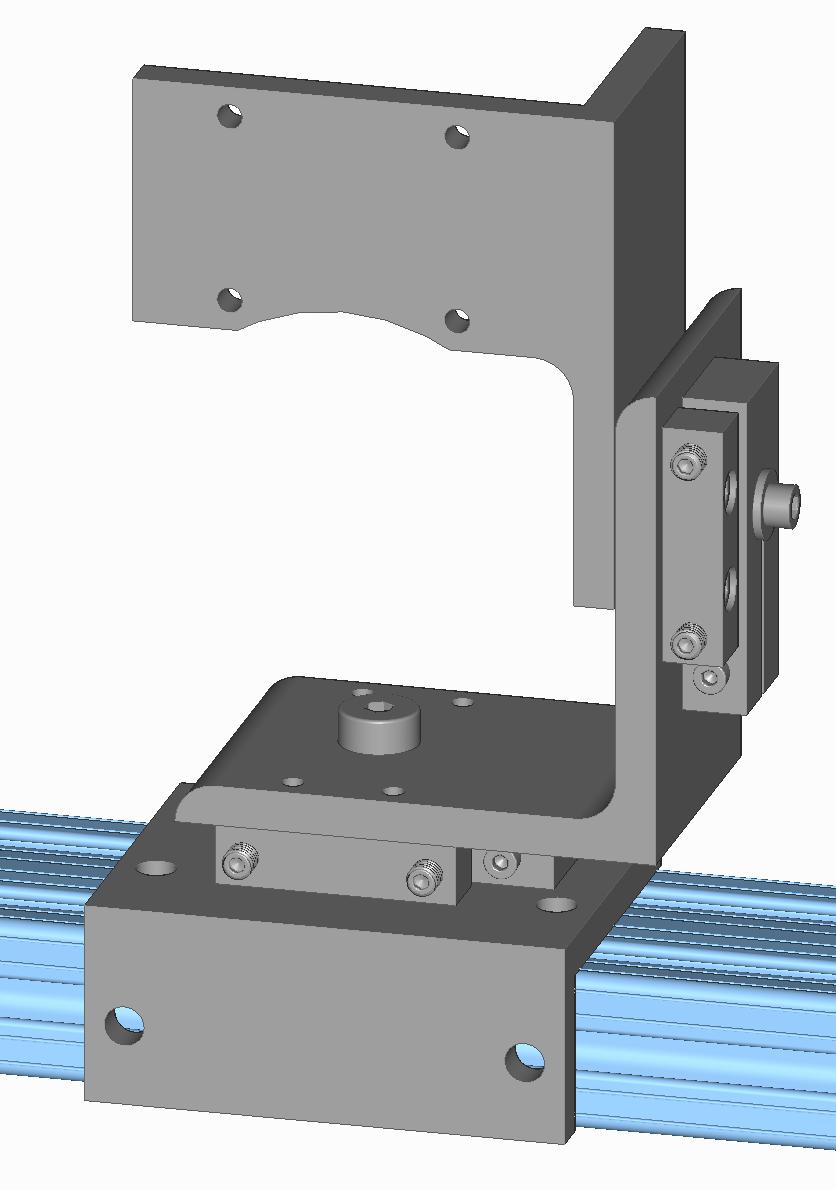
|
|
Click to enlarge pictures and drawings.
|
See CAD files Above

|
Camera Mounting Alternatives
Adjusting camera mounts can become tedious in tight or inconvenient
spaces.
We have made the Fine Mounts customer-configurable,
so alternative placements of the adjustment screws and the Tilt table
are possible.
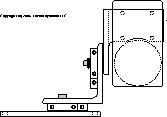
|
For example,
it may be more convenient to have the camera mounted away from the Pan
axis.
In particular, this allows the camera to look over around a corner or down over
an edge.
Note that in this configuration the Pan axis
does not
go through the optical center of the camera,
although the Tilt axis still does.
|
| Click to enlarge pictures and drawings. |
If you need to verify a particular configuration, please contact us.
Cognex In-Sight 7200 Mount
|
FM1_2a
and
FM2_2a
mounts work well with the
Cognex In-Site 7200 series
cameras
|

|
FM1_2a
FM1_2a
Full Description
|
These two mounts work well with these cameras.
Both Pan and Tilt axes
rotate near the optical center of the imaging element.
|
|
For more robust,
two- and three- axis mounts that feature fine adjustment and locking
of the pan, tilt, and roll axes, see the
Foveal 2- and 3-Axis Rigid Camera Mounts.
Contact Us
For information on purchasing
Foveal 2-Axis Fine Camera Mounts
please contact us ...
B & B Model Shop Services, Inc.
is a partner in the design and construction of the Foveal Fine Camera Mounts.
www.FovealMounts.com/fm3_2a_Cognex_5000.html Thu 01 Aug 2024 02:37:13 PM EDT based on 9.22
FM3_2a Mount for Cognex In-Sight 7000 series Cameras -- Foveal Systems
Foveal FM3_2a Mount
for Cognex In-Sight 7000 series cameras
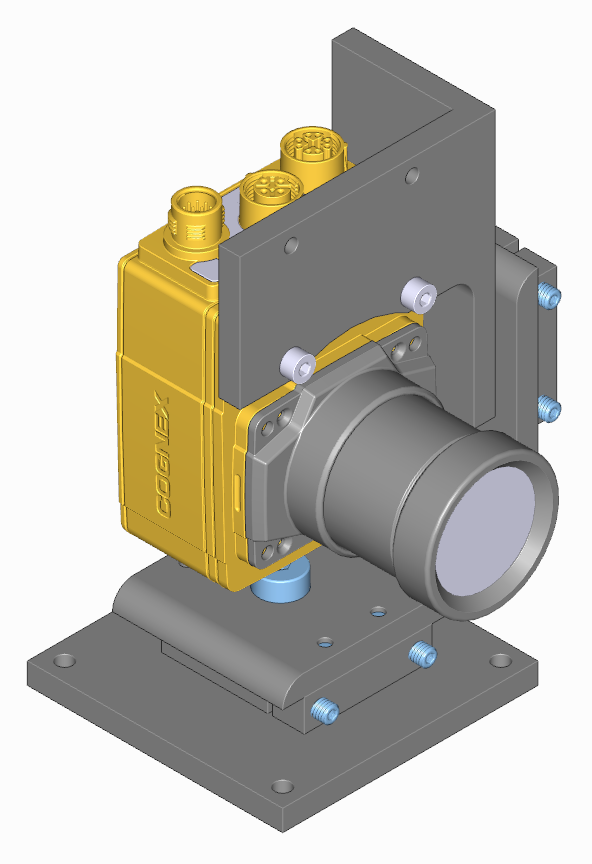
Click to enlarge pictures and drawings.
| |
Foveal FM3_2a Fine-Adjustment 2-Axis Camera Mount
-
Compatible with the
Cognex® In-Sight® 7000 camera line
including the
7600,
780x,
790x
-
Pan and Tilt Axes are
near the optical center
of the imaging element,
making alignment easier.
-
Fine Adjustment
of
Pan and Tilt axes.
-
Individual axis lock down
makes adjustment easier,
more precise,
and
prevents accidental change.
-
Sturdy construction.
-
Reconfigurable.
® "Cognex" and "In-Sight"
are registered trademarks of
Cognex Corporation.
| |
Foveal Mounts
for other
Cognex cameras
|
Motivation
The
Foveal 2-Axis Fine_Adjustment Camera Mounts,
models FM1_2a and FM2_2a,
are designed to match common
machine vision camera mounting configurations.
But a customer wanted something similar for the
Cognex In-Sight 7000 series cameras.
(Other cameras in the Cognex line can be mounted
on the FM1_2a and/or FM2_2a mounts.
See also the
Cognex In-Sight 7200 Mount
 below).
below).
So we created the FM3_2a Fine-adjustment 2-Axis Mount.
It shares the fine-adjustment features and mounting plate options of the other
Foveal FMs (Fine-adjustment Mounts).
Because the FM3_2a is designed specifically
for these make and model mounts,
we optimized the placement of the Pan and Tilt Axes so they are centered near
the imaging element's optical center.
Also see our other mounts suitable for other Cognex cameras:
Features
in common with all FM models
The 2-Axis Fine-Adjustment Camera Mounts
may be supported with the base down or the base up.
In either position, the plate the camera attaches to can be
either below or above the camera.
When coarse adjustments are unlocked,
there is sufficient friction to hold the camera in position.
Coarse position can be set by hand.
Fine adjustments are made using a hex wrench,
allowing for extremely fine positioning.
Independent adjustment of each axis
means each adjustment does not affect the other.
All adjustments and locking are made with a single 3/32 inch hex wrench.
Reconfiguration is done with a 9/64 inch hex wrench.
Once the mount is locked, the camera does not move.
While not as robust as the Rigid Mounts,
the Fine-adjustment Mount
will work very well in applications where the mount will not be subjected
to extreme disturbances.
They are also suitable for mounting other types of instruments and sensors.
For more robust,
two- and three- axis mounts that feature fine adjustment and locking
of the pan, tilt, and roll axes, see the
Foveal 2- and 3-Axis Rigid Camera Mounts.
Specifications
Options

|
Finger Adjustment Knobs (FAK) Option
Prices and Delivery

|
|
When the need is not set it and forget it
but instead the mount frequently needs to be finely adjusted,
we offer knobs for the fine position adjustment screws.
|

|
Lock Nuts and Lock Washers (LNLW) Option
Prices and Delivery

|
If your mount will be subjected to high vibration,
extra lock nuts and lock washers might help.
LNLW Installation Manual

|

|
Extra Fine Adjustment (EFA) with lock nuts Option
Prices and Delivery

|
The normal change in the Pan or Tilt angle is bit more than
2 degrees per turn of the position screws.
Should you need a finer adjustment, this option provides
slightly less than 1 degree per turn.
While shown here with the PTD option (below),
EFA and PTD are separate options.
EFA Manual

|

|
Pan and Tilt Protractor Dials (PTD) Option
Prices and Delivery

|
|
We offer mounts with Protractor Dials on both
the Pan and Tilt Axes so the angles can be read out.
See the complete description at
Foveal Mounts with Pan and Tilt Protractor Dials.
|
Prices and Delivery
United State dollars
FOB New Jersey, United States
6.625% Sales Tax to customers in New Jersey
Call 973 822-2085
Questions? Call 973 822-2085
Photos, Dimensional Drawings, CAD Files
Dimensions in inches.
Mounting Plate Options
There are four mounting plate options for the FM mounts.
|
no mounting plate
|
The pan pivot has two 8-32 threaded holes in it.
|
|
-SMP3
|
Square Mounting Plate suitable for general mounting to flat surfaces.
|
|
-RMP
|
Rectangular Mounting Plate for general mounting or T-Slot framing
systems. †
|
|
-LMP
|
L-bracket Mounting Plate specifically for T-Slot framing systems.
†
|
† For more information, see
Foveal Mounts - T-Slot Mounting Plates.
3 x 3 inch
Square Mounting Plate
-SMP3
|
|
5 x 2 inch
Rectangular Mounting Plate
-RMP
|
|
L-bracket Mounting Plate
-LMP
|

|
|

|
FM3_2a-RMP
mounted on T-Slot frame
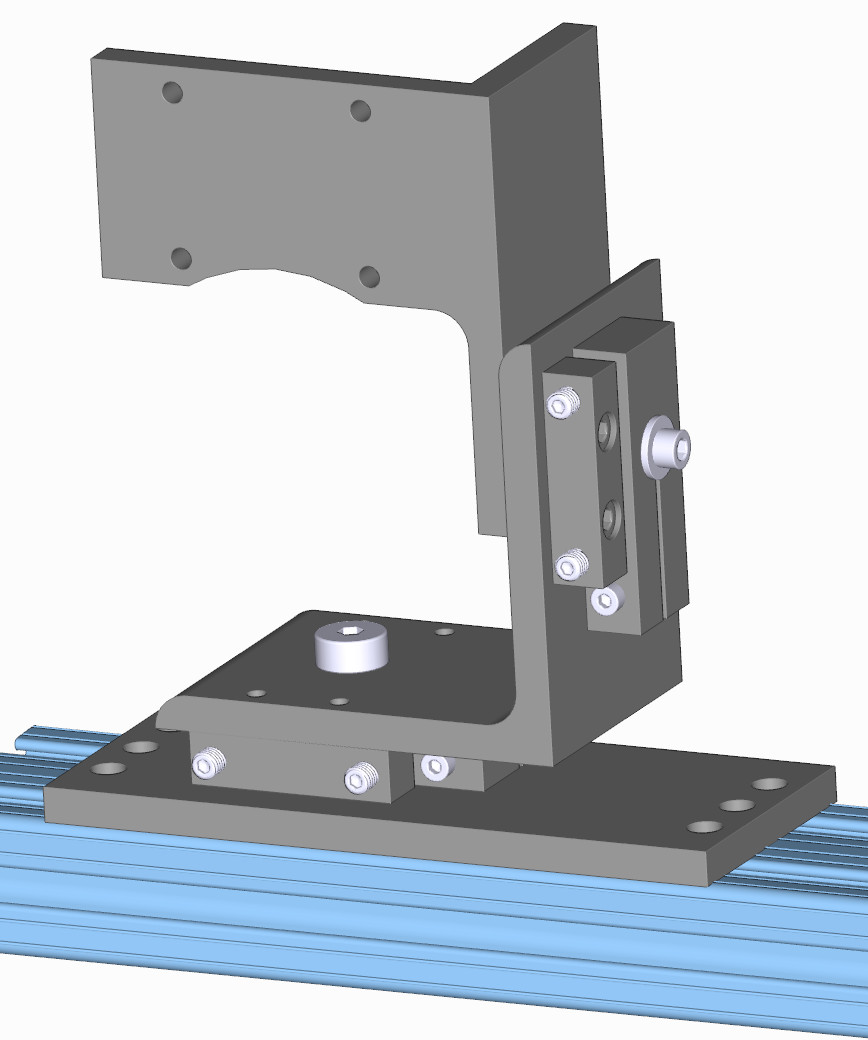
|
|

|
FM3_2a-LMP
mounted on T-Slot frame

|
|
Click to enlarge pictures and drawings.
|
See CAD files Above

|
Camera Mounting Alternatives
Adjusting camera mounts can become tedious in tight or inconvenient
spaces.
We have made the Fine Mounts customer-configurable,
so alternative placements of the adjustment screws and the Tilt table
are possible.

|
For example,
it may be more convenient to have the camera mounted away from the Pan
axis.
In particular, this allows the camera to look around a corner or down over
an edge.
Note that in this configuration the Pan axis
does not
go close to the optical center of the camera,
although the Tilt axis still does.
|
| Click to enlarge pictures and drawings. |
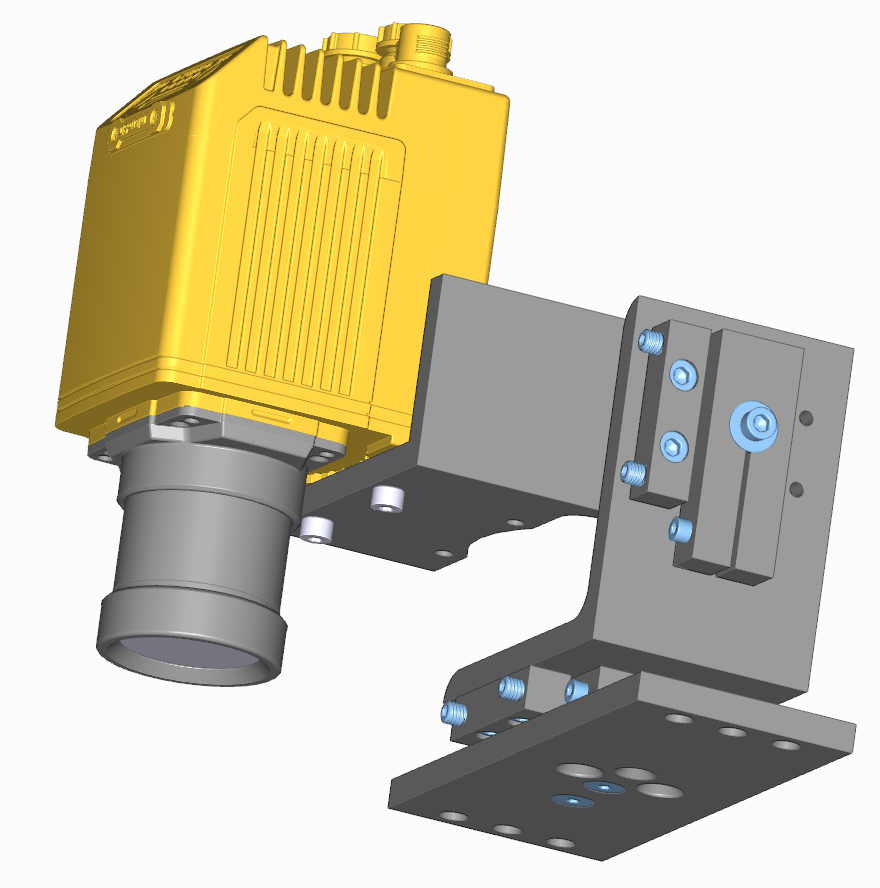
|
In this example, the camera can look down, or up,
from a position well outside the mounting plate footprint.
Note that both the Pan axis and Tilt axis
are far from the optical center of the camera.
|
| Click to enlarge pictures and drawings. |
If you need to verify a particular configuration, please contact us.
Cognex In-Sight 7200 Mount
|
FM1_2a
and
FM2_2a
mounts work well with the
Cognex In-Site 7200 series
cameras
|

|
FM1_2a
FM1_2a
Full Description
|
These two mounts work well with these cameras.
Both Pan and Tilt axes
rotate near the optical center of the imaging element.
|
|
For more robust,
two- and three- axis mounts that feature fine adjustment and locking
of the pan, tilt, and roll axes, see the
Foveal 2- and 3-Axis Rigid Camera Mounts.
Contact Us
For information on purchasing
Foveal 2-Axis Fine Camera Mounts
please contact us ...
B & B Model Shop Services, Inc.
is a partner in the design and construction of the Foveal Fine Camera Mounts.
www.FovealMounts.com/fm3_2a_Cognex_In-Sight_7000.html Thu 01 Aug 2024 02:37:08 PM EDT based on 9.2
FM2_2a Mount for Cognex 7200 Camera -- Foveal Systems
Foveal Fine-adjustment 2-axis Mount
for Cognex In-Sight 7200 cameras
NOTE: the Cognex In-Sight 7200 camera is discontinued.
|
NOTE: the Cognex In-Sight 7200 camera is discontinued.
|
|
Both the
Foveal FM1_2a
and
FM2_2a
Fine-Adjustment 2-Axis Camera Mounts
closely match the mounting geometry of the
Cognex® In-Sight® 7200 Camera.
They provide
-
Fine Adjustment
of
Pan and Tilt axes.
-
Individual axis lock down
makes adjustment easier,
more precise,
and
prevents accidental change.
-
Sturdy construction.
® "Cognex" and "In-Sight" are registered trademarks of
Cognex Corporation.
|

|
|
Cognex In-Sight 7200 camera
on FM2_2a mount
|
|
Click to enlarge pictures and drawings.
|
Motivation
The
Foveal 2-Axis Fine_Adjustment Camera Mounts,
models FM1_2a and FM2_2a,
are designed to match common
machine vision camera mounting configurations.
While Foveal Fine-adjustment 2-Axis Mounts
are general purpose in nature,
they happen to closely match the mounting geometry of the Cognex In-Sight 7200
camera.
Note that the FM1_2a and FM2_2a
are not designed specifically
for this make and model mount.
Therefore,
the Pan Axis and the Tilt Axis are not centered on the Optical Axis of
the imaging element inside the camera body.
They are close, about 5 millimeters offset, but not dead on.
Also see our other mounts suitable for other Cognex cameras:
Features
in common with all FM models
The 2-Axis Fine-Adjustment Camera Mounts
may be supported with the base down or the base up.
In either position, the plate the camera attaches to can be
either below or above the camera.
When coarse adjustments are unlocked,
there is sufficient friction to hold the camera in position.
Coarse position can be set by hand.
Fine adjustments are made using a hex wrench,
allowing for extremely fine positioning.
Independent adjustment of each axis
means each adjustment does not affect the other.
All adjustments and locking are made with a single 3/32 inch hex wrench.
Reconfiguration is done with a 9/64 inch hex wrench.
Once the mount is locked, the camera does not move.
And the mounts are highly reconfigurable.
Options

|
Finger Adjustment Knobs (FAK) Option
Prices and Delivery

|
|
When the need is not set it and forget it
but instead the mount frequently needs to be finely adjusted,
we offer knobs for the fine position adjustment screws.
|

|
Lock Nuts and Lock Washers (LNLW) Option
Prices and Delivery

|
If your mount will be subjected to high vibration,
extra lock nuts and lock washers might help.
LNLW Installation Manual

|

|
Extra Fine Adjustment (EFA) with lock nuts Option
Prices and Delivery

|
The normal change in the Pan or Tilt angle is bit more than
2 degrees per turn of the position screws.
Should you need a finer adjustment, this option provides
slightly less than 1 degree per turn.
While shown here with the PTD option (below),
EFA and PTD are separate options.
EFA Manual

|

|
Pan and Tilt Protractor Dials (PTD) Option
Prices and Delivery

|
|
We offer mounts with Protractor Dials on both
the Pan and Tilt Axes so the angles can be read out.
See the complete description at
Foveal Mounts with Pan and Tilt Protractor Dials.
|
Prices and Delivery
United States dollars
FOB New Jersey, United States
6.625% Sales Tax to customers in New Jersey
Call 973 822-2085
The mounts below are particularly well suited for the Cognex 7200 cameras.
There are many more models.
Click Here for the complete line of
Foveal Fine-adjustment Mounts.
Questions? Call 973 822-2085
Configuration Details
when mounting the Cognex In-Sight 7200 camera
|
mounting Cognex IS7200 Camera
to FM1_2a Inner-L
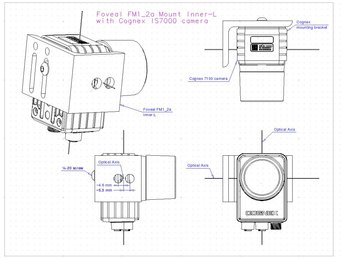
|
mounting Cognex IS7200 Camera
to FM2_2a Inner-L

|
| Click to enlarge pictures and drawings. |
|
What are the differences between the FM1_2a and the FM2_2a?
First, the position and spacing of the two slots for the camera mounting
screws are not the same.
In the FM1_2a, one of the slots is centered over the Pan pivot.
In the FM2_2a, the Pan pivot centerline goes between the two slots.
Second, in the FM1_2a, the slots are three-quarters of an inch apart.
In the FM2_2a, the slots are 20 millimeters apart.
The FM1_2a works well with Cognex IS7200's mounting bracket because
the mount has a 1/4 inch slot that
matches the bracket's 1/4-20 threaded hole.
The FM2_2a works well with Cognex IS7200's mounting bracket because
the mount has two 6 mm slots that
match the bracket's two M6 threaded holes.
The choice is yours.
|
CAD files STEP format
FM1_2a-LMP-CognexIS7200.stp
FM1_2a-RMP-CognexIS7200.stp
FM1_2a-SMP3-CognexIS7200.stp
|
CAD files STEP format
FM2_2a-LMP-CognexIS7200.stp
FM2_2a-RMP-CognexIS7200.stp
FM2_2a-SMP3-CognexIS7200.stp
|
See the Fine Adjustment Mount page for all the
features and options available in the
FM1_2a
and
FM2_2a
mounts.
Mounting Plate Options
There are four mounting plate options for the FM mounts.
|
no mounting plate
|
The pan pivot has two 8-32 threaded holes in it.
|
|
-SMP3
|
Square Mounting Plate suitable for general mounting to flat surfaces.
|
|
-RMP
|
Rectangular Mounting Plate for general mounting or T-Slot framing
systems. †
|
|
-LMP
|
L-bracket Mounting Plate specifically for T-Slot framing systems.
†
|
† For more information, see
Foveal Mounts - T-Slot Mounting Plates.
3 x 3 inch
Square Mounting Plate
-SMP3
|
|
5 x 2 inch
Rectangular Mounting Plate
-RMP
|
|
L-bracket Mounting Plate
-LMP
|

|
|

|
FM1_2a-RMP
mounted on T-Slot frame

|
|

|
FM1_2a-LMP
mounted on T-Slot frame

|
|
Click to enlarge pictures and drawings.
|
See CAD files Above

|
Camera Mounting Alternatives
Adjusting camera mounts can become tedious in tight or inconvenient
spaces.
We have made the Fine Mounts customer-configurable,
so alternative placements of the adjustment screws are possible.

|
For example,
it may be more convenient to have the pan and tilt
coarse- and fine-adjustment screws
available from the back of the mount.
As this drawing shows, they can be moved.
(Moving the pan and tilt screws are independent operations.
We do not know why one would want to, but they can be on opposite sides.)
|

|
Note that these mounts can be configured with the tilt-axis L-bracket raised
above the pivot.
In this position, a small camera can be hung above the pan axis.
Also, the tilt axis locks can be repositioned so the tilt L-bracket hangs
outside the pan-axis base.
This can accommodate larger cameras and
a wider selection of tilt positions.
|
| Click to enlarge pictures and drawings. |

|
Here are some examples with small- and medium-sized cameras.
|

|
Note also that there is an alternate pivot point on the tilt L-bracket,
offset 0.5 inch.
In this position, even larger cameras can be accommodated.
|
| Click to enlarge pictures and drawings. |

|
Here are some examples with medium- and large-sized cameras,
and examples where the camera needs to be lifted a well above the base of the
mount.
|

|
Also, many cameras have mounting screws on top of the case,
which means they can be hung from the top directly.
|
| Click to enlarge pictures and drawings. |

|
One customer needed to mount the camera from the rear.
|

|
And there are a few cameras where the mounting screw is on the side.
The pan adjustment, which normally changes the pan angle now changes tilt,
and the former tilt adjustment changes the pan angle.
|
| Click to enlarge pictures and drawings. |
If you need to verify a particular configuration, please contact us.
For a more robust,
three axis mount that features fine adjustment and locking
of the pan, tilt, and roll axes, see the
Foveal 3-Axis Rigid Camera Mount.
Cognex Specific Mount
|
Specialized Design
for
Cognex 5100/5400 series
cameras
|

|
FM3_2a
Full Description
|
Customized to the special mounting holes
on these cameras.
Both Pan and Tilt axes
rotate around the optical center of the imaging element.
|
|
For more robust,
two- and three- axis mounts that feature fine adjustment and locking
of the pan, tilt, and roll axes, see the
Foveal 2- and 3-Axis Rigid Camera Mounts.
Contact Us
For information on purchasing
Foveal 2-Axis Fine Camera Mounts
please Contact us ...
B & B Model Shop Services, Inc.
is a partner in the design and construction of the Foveal Fine Camera Mounts.
www.FovealMounts.com/fm_Cognex_7200.html Thu 01 Aug 2024 02:37:22 PM EDT based on 9.11
FM3_2a Mount for Cognex In-Sight 9900 series Cameras -- Foveal Systems
Foveal FM3_2a Mount
for Cognex In-Sight 9900 series cameras

Click to enlarge pictures and drawings.
| |
Foveal FM3_2a Fine-Adjustment 2-Axis Camera Mount
-
Compatible with the
Cognex® In-Sight® 9900 camera line
including the
9902
and
9912.
-
Pan and Tilt Axes are
near the optical center
of the imaging element,
making alignment easier.
-
Fine Adjustment
of
Pan and Tilt axes.
-
Individual axis lock down
makes adjustment easier,
more precise,
and
prevents accidental change.
-
Sturdy construction.
-
Reconfigurable.
® "Cognex" and "In-Sight"
and "DataMan"
are registered trademarks of
Cognex Corporation.
| |
Foveal Mounts
for other
Cognex cameras
|
Motivation
The
Foveal 2-Axis Fine_Adjustment Camera Mounts,
models FM1_2a and FM2_2a,
are designed to match common
machine vision camera mounting configurations.
But a customer wanted something similar for the
Cognex In-Sight 9900 series cameras.
(Other cameras in the Cognex line can be mounted
on the FM1_2a and/or FM2_2a mounts.
See also the
Cognex In-Sight 7200 Mount
 below).
below).
So we created the FM3_2a Fine-adjustment 2-Axis Mount.
It shares the fine-adjustment features and mounting plate options of the other
Foveal FMs (Fine-adjustment Mounts).
Because the FM3_2a is designed specifically
for these make and model mounts,
we optimized the placement of the Pan and Tilt Axes so they are centered near
the imaging element's optical center.
Also see our other mounts suitable for other Cognex cameras:
Features
in common with all FM models
The 2-Axis Fine-Adjustment Camera Mounts
may be supported with the base down or the base up.
In either position, the plate the camera attaches to can be
either below or above the camera.
When coarse adjustments are unlocked,
there is sufficient friction to hold the camera in position.
Coarse position can be set by hand.
Fine adjustments are made using a hex wrench,
allowing for extremely fine positioning.
Independent adjustment of each axis
means each adjustment does not affect the other.
All adjustments and locking are made with a single 3/32 inch hex wrench.
Reconfiguration is done with a 9/64 inch hex wrench.
Once the mount is locked, the camera does not move.
While not as robust as the Rigid Mounts,
the Fine-adjustment Mount
will work very well in applications where the mount will not be subjected
to extreme disturbances.
They are also suitable for mounting other types of instruments and sensors.
For more robust,
two- and three- axis mounts that feature fine adjustment and locking
of the pan, tilt, and roll axes, see the
Foveal 2- and 3-Axis Rigid Camera Mounts.
Specifications
Options

|
Finger Adjustment Knobs (FAK) Option
Prices and Delivery

|
|
When the need is not set it and forget it
but instead the mount frequently needs to be finely adjusted,
we offer knobs for the fine position adjustment screws.
|

|
Lock Nuts and Lock Washers (LNLW) Option
Prices and Delivery

|
If your mount will be subjected to high vibration,
extra lock nuts and lock washers might help.
LNLW Installation Manual

|

|
Extra Fine Adjustment (EFA) with lock nuts Option
Prices and Delivery

|
The normal change in the Pan or Tilt angle is bit more than
2 degrees per turn of the position screws.
Should you need a finer adjustment, this option provides
slightly less than 1 degree per turn.
While shown here with the PTD option (below),
EFA and PTD are separate options.
EFA Manual

|

|
Pan and Tilt Protractor Dials (PTD) Option
Prices and Delivery

|
|
We offer mounts with Protractor Dials on both
the Pan and Tilt Axes so the angles can be read out.
See the complete description at
Foveal Mounts with Pan and Tilt Protractor Dials.
|
Prices and Delivery
United State dollars
FOB New Jersey, United States
6.625% Sales Tax to customers in New Jersey
Call 973 822-2085
Questions? Call 973 822-2085
Photos, Dimensional Drawings, CAD Files
Dimensions in inches.
Mounting Plate Options
There are four mounting plate options for the FM mounts.
|
no mounting plate
|
The pan pivot has two 8-32 threaded holes in it.
|
|
-SMP3
|
Square Mounting Plate suitable for general mounting to flat surfaces.
|
|
-RMP
|
Rectangular Mounting Plate for general mounting or T-Slot framing
systems. †
|
|
-LMP
|
L-bracket Mounting Plate specifically for T-Slot framing systems.
†
|
† For more information, see
Foveal Mounts - T-Slot Mounting Plates.
3 x 3 inch
Square Mounting Plate
-SMP3
|
|
5 x 2 inch
Rectangular Mounting Plate
-RMP
|
|
L-bracket Mounting Plate
-LMP
|

|
|

|
FM3_2a-RMP
mounted on T-Slot frame

|
|

|
FM3_2a-LMP
mounted on T-Slot frame

|
|
Click to enlarge pictures and drawings.
|
See CAD files Above

|
Camera Mounting Alternatives
Adjusting camera mounts can become tedious in tight or inconvenient
spaces.
We have made the Fine Mounts customer-configurable,
so alternative placements of the adjustment screws and the Tilt table
are possible.

|
For example,
it may be more convenient to have the camera mounted away from the Pan
axis.
In particular, this allows the camera to look around a corner or down over
an edge.
Note that in this configuration the Pan axis
does not
go close to the optical center of the camera,
although the Tilt axis still does.
|
| Click to enlarge pictures and drawings. |

|
In this example, the camera can look down, or up,
from a position well outside the mounting plate footprint.
Note that both the Pan axis and Tilt axis
are far from the optical center of the camera.
|
| Click to enlarge pictures and drawings. |
If you need to verify a particular configuration, please contact us.
Cognex In-Sight 7200 Mount
|
FM1_2a
and
FM2_2a
mounts work well with the
Cognex In-Site 7200 series
cameras
|

|
FM1_2a
FM1_2a
Full Description
|
These two mounts work well with these cameras.
Both Pan and Tilt axes
rotate near the optical center of the imaging element.
|
|
For more robust,
two- and three- axis mounts that feature fine adjustment and locking
of the pan, tilt, and roll axes, see the
Foveal 2- and 3-Axis Rigid Camera Mounts.
Contact Us
For information on purchasing
Foveal 2-Axis Fine Camera Mounts
please contact us ...
B & B Model Shop Services, Inc.
is a partner in the design and construction of the Foveal Fine Camera Mounts.
www.FovealMounts.com/fm3_2a_Cognex_In-Sight_9900.html Thu 01 Aug 2024 02:37:11 PM EDT based on 9.1
FM3_2a Mount for Cognex DataMan 470 series Cameras -- Foveal Systems
Foveal FM3_2a Mount
for Cognex DataMan 470 series cameras
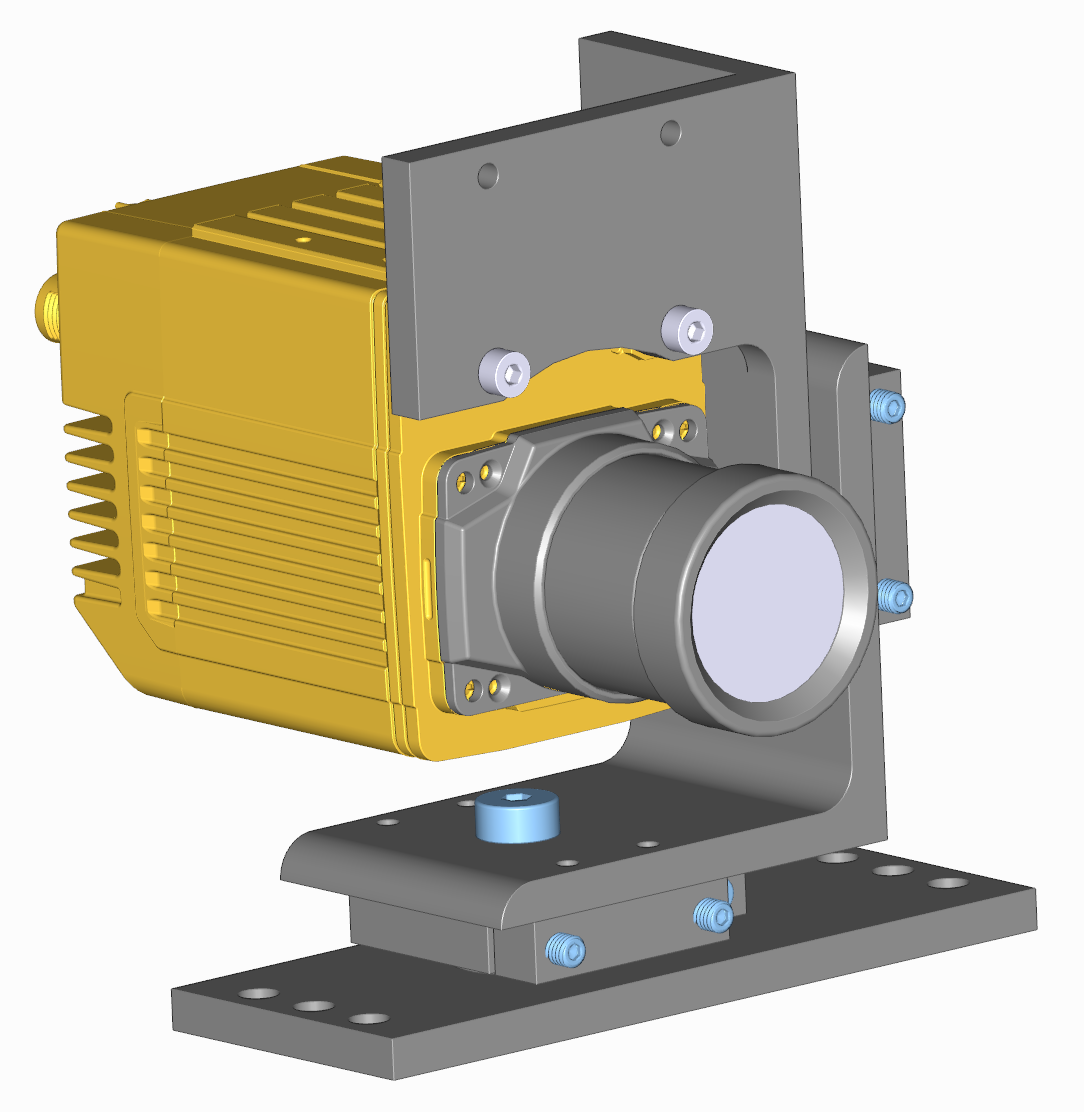
Click to enlarge pictures and drawings.
| |
Foveal FM3_2a Fine-Adjustment 2-Axis Camera Mount
-
Compatible with the
Cognex® DataMan® 470 camera line
-
Pan and Tilt Axes are
near the optical center
of the imaging element,
making alignment easier.
-
Fine Adjustment
of
Pan and Tilt axes.
-
Individual axis lock down
makes adjustment easier,
more precise,
and
prevents accidental change.
-
Sturdy construction.
-
Reconfigurable.
® "Cognex" and "DataMan"
are registered trademarks of
Cognex Corporation.
| |
Foveal Mounts
for other
Cognex cameras
|
Motivation
The
Foveal 2-Axis Fine_Adjustment Camera Mounts,
models FM1_2a and FM2_2a,
are designed to match common
machine vision camera mounting configurations.
But a customer wanted something similar for the
Cognex DataMan 470 series cameras.
(Other cameras in the Cognex line can be mounted
on the FM1_2a and/or FM2_2a mounts.
See also the
Cognex In-Sight 7200 Mount
 below).
below).
So we created the FM3_2a Fine-adjustment 2-Axis Mount.
It shares the fine-adjustment features and mounting plate options of the other
Foveal FMs (Fine-adjustment Mounts).
Because the FM3_2a is designed specifically
for these make and model mounts,
we optimized the placement of the Pan and Tilt Axes so they are centered near
the imaging element's optical center.
Also see our other mounts suitable for other Cognex cameras:
Features
in common with all FM models
The 2-Axis Fine-Adjustment Camera Mounts
may be supported with the base down or the base up.
In either position, the plate the camera attaches to can be
either below or above the camera.
When coarse adjustments are unlocked,
there is sufficient friction to hold the camera in position.
Coarse position can be set by hand.
Fine adjustments are made using a hex wrench,
allowing for extremely fine positioning.
Independent adjustment of each axis
means each adjustment does not affect the other.
All adjustments and locking are made with a single 3/32 inch hex wrench.
Reconfiguration is done with a 9/64 inch hex wrench.
Once the mount is locked, the camera does not move.
While not as robust as the Rigid Mounts,
the Fine-adjustment Mount
will work very well in applications where the mount will not be subjected
to extreme disturbances.
They are also suitable for mounting other types of instruments and sensors.
For more robust,
two- and three- axis mounts that feature fine adjustment and locking
of the pan, tilt, and roll axes, see the
Foveal 2- and 3-Axis Rigid Camera Mounts.
Specifications
Options

|
Finger Adjustment Knobs (FAK) Option
Prices and Delivery

|
|
When the need is not set it and forget it
but instead the mount frequently needs to be finely adjusted,
we offer knobs for the fine position adjustment screws.
|

|
Lock Nuts and Lock Washers (LNLW) Option
Prices and Delivery

|
If your mount will be subjected to high vibration,
extra lock nuts and lock washers might help.
LNLW Installation Manual

|

|
Extra Fine Adjustment (EFA) with lock nuts Option
Prices and Delivery

|
The normal change in the Pan or Tilt angle is bit more than
2 degrees per turn of the position screws.
Should you need a finer adjustment, this option provides
slightly less than 1 degree per turn.
While shown here with the PTD option (below),
EFA and PTD are separate options.
EFA Manual

|

|
Pan and Tilt Protractor Dials (PTD) Option
Prices and Delivery

|
|
We offer mounts with Protractor Dials on both
the Pan and Tilt Axes so the angles can be read out.
See the complete description at
Foveal Mounts with Pan and Tilt Protractor Dials.
|
Prices and Delivery
United State dollars
FOB New Jersey, United States
6.625% Sales Tax to customers in New Jersey
Call 973 822-2085
Questions? Call 973 822-2085
Photos, Dimensional Drawings, CAD Files
Dimensions in inches.
Mounting Plate Options
There are four mounting plate options for the FM mounts.
|
no mounting plate
|
The pan pivot has two 8-32 threaded holes in it.
|
|
-SMP3
|
Square Mounting Plate suitable for general mounting to flat surfaces.
|
|
-RMP
|
Rectangular Mounting Plate for general mounting or T-Slot framing
systems. †
|
|
-LMP
|
L-bracket Mounting Plate specifically for T-Slot framing systems.
†
|
† For more information, see
Foveal Mounts - T-Slot Mounting Plates.
3 x 3 inch
Square Mounting Plate
-SMP3
|
|
5 x 2 inch
Rectangular Mounting Plate
-RMP
|
|
L-bracket Mounting Plate
-LMP
|

|
|

|
FM3_2a-RMP
mounted on T-Slot frame

|
|

|
FM3_2a-LMP
mounted on T-Slot frame

|
|
Click to enlarge pictures and drawings.
|
See CAD files Above

|
Camera Mounting Alternatives
Adjusting camera mounts can become tedious in tight or inconvenient
spaces.
We have made the Fine Mounts customer-configurable,
so alternative placements of the adjustment screws and the Tilt table
are possible.

|
For example,
it may be more convenient to have the camera mounted away from the Pan
axis.
In particular, this allows the camera to look around a corner or down over
an edge.
Note that in this configuration the Pan axis
does not
go close to the optical center of the camera,
although the Tilt axis still does.
|
| Click to enlarge pictures and drawings. |

|
In this example, the camera can look down, or up,
from a position well outside the mounting plate footprint.
Note that both the Pan axis and Tilt axis
are far from the optical center of the camera.
|
| Click to enlarge pictures and drawings. |
If you need to verify a particular configuration, please contact us.
Cognex In-Sight 7200 Mount
|
FM1_2a
and
FM2_2a
mounts work well with the
Cognex In-Site 7200 series
cameras
|

|
FM1_2a
FM1_2a
Full Description
|
These two mounts work well with these cameras.
Both Pan and Tilt axes
rotate near the optical center of the imaging element.
|
|
For more robust,
two- and three- axis mounts that feature fine adjustment and locking
of the pan, tilt, and roll axes, see the
Foveal 2- and 3-Axis Rigid Camera Mounts.
Contact Us
For information on purchasing
Foveal 2-Axis Fine Camera Mounts
please contact us ...
B & B Model Shop Services, Inc.
is a partner in the design and construction of the Foveal Fine Camera Mounts.
www.FovealMounts.com/fm3_2a_Cognex_DataMan_470.html Thu 01 Aug 2024 02:37:05 PM EDT based on 9.3
FM3_2a Mount for Matrox GatorEye Cameras -- Foveal Systems
Foveal FM3_2a Mount
for Matrox GatorEye cameras

Click to enlarge pictures and drawings.
| |
Foveal FM3_2a Fine-Adjustment 2-Axis Camera Mount
-
Compatible with the
Matrox® GatorEye cameras.
-
Pan and Tilt Axes are
aligned with the optical center
of the imaging element,
making alignment easier.
-
Fine Adjustment
of
Pan and Tilt axes.
-
Individual axis lock down
makes adjustment easier,
more precise,
and
prevents accidental change.
-
Sturdy construction.
® "Matrox" is a registered trademark of Matrox Electronic Systems Ltd..
| |
other cameras that fit the FM3_2a
|
Motivation
The
Foveal 2-Axis Fine_Adjustment Camera Mounts,
models FM1_2a and FM2_2a,
are designed to match common
machine vision camera mounting configurations.
But a customer expressed the need for something similar
that could easily handle
the unusual mounting screw holes in the
Matrox GatorEye cameras.
So we created the FM3_2a Fine-adjustment 2-Axis Mount.
It shares the fine-adjustment features and mounting plate options of the other
Foveal FMs (Fine-adjustment Mounts).
Because the FM3_2a is designed specifically
for these make and model mounts,
we optimized the placement of the Pan and Tilt Axes so they are centered on the
imaging element inside the camera body.
Features
in common with all FM models
The 2-Axis Fine-Adjustment Camera Mounts
may be supported with the base down or the base up.
In either position, the plate the camera attaches to can be
either below or above the camera.
When coarse adjustments are unlocked,
there is sufficient friction to hold the camera in position.
Coarse position can be set by hand.
Fine adjustments are made using a hex wrench,
allowing for extremely fine positioning.
Independent adjustment of each axis
means each adjustment does not affect the other.
All adjustments and locking are made with a single 3/32 inch hex wrench.
Reconfiguration is done with a 9/64 inch hex wrench.
Once the mount is locked, the camera does not move.
While not as robust as the Rigid Mounts,
the Fine-adjustment Mount
will work very well in applications where the mount will not be subjected
to extreme disturbances.
They are also suitable for mounting other types of instruments and sensors.
For more robust,
two- and three- axis mounts that feature fine adjustment and locking
of the pan, tilt, and roll axes, see the
Foveal 2- and 3-Axis Rigid Camera Mounts.
Specifications
Options

|
Finger Adjustment Knobs (FAK) Option
Prices and Delivery

|
|
When the need is not set it and forget it
but instead the mount frequently needs to be finely adjusted,
we offer knobs for the fine position adjustment screws.
|

|
Lock Nuts and Lock Washers (LNLW) Option
Prices and Delivery

|
If your mount will be subjected to high vibration,
extra lock nuts and lock washers might help.
LNLW Installation Manual

|

|
Extra Fine Adjustment (EFA) with lock nuts Option
Prices and Delivery

|
The normal change in the Pan or Tilt angle is bit more than
2 degrees per turn of the position screws.
Should you need a finer adjustment, this option provides
slightly less than 1 degree per turn.
While shown here with the PTD option (below),
EFA and PTD are separate options.
EFA Manual

|

|
Pan and Tilt Protractor Dials (PTD) Option
Prices and Delivery

|
|
We offer mounts with Protractor Dials on both
the Pan and Tilt Axes so the angles can be read out.
See the complete description at
Foveal Mounts with Pan and Tilt Protractor Dials.
|
Prices and Delivery
United State dollars
FOB New Jersey, United States
6.625% Sales Tax to customers in New Jersey
Call 973 822-2085
Questions? Call 973 822-2085
Photos, Dimensional Drawings, CAD Files
Dimensions in inches.
Mounting Plate Options
There are four mounting plate options for the FM mounts.
|
no mounting plate
|
The pan pivot has two 8-32 threaded holes in it.
|
|
-SMP3
|
Square Mounting Plate suitable for general mounting to flat surfaces.
|
|
-RMP
|
Rectangular Mounting Plate for general mounting or T-Slot framing
systems. †
|
|
-LMP
|
L-bracket Mounting Plate specifically for T-Slot framing systems.
†
|
† For more information, see
Foveal Mounts - T-Slot Mounting Plates.
3 x 3 inch
Square Mounting Plate
-SMP3
|
|
5 x 2 inch
Rectangular Mounting Plate
-RMP
|
|
L-bracket Mounting Plate
-LMP
|

|
|

|
FM3_2a-RMP
mounted on T-Slot frame

|
|

|
FM3_2a-LMP
mounted on T-Slot frame

|
|
Click to enlarge pictures and drawings.
|
See CAD files Above

|
Camera Mounting Alternatives
Adjusting camera mounts can become tedious in tight or inconvenient
spaces.
We have made the Fine Mounts customer-configurable,
so alternative placements of the adjustment screws and the Tilt table
are possible.

|
For example,
it may be more convenient to have the camera mounted away from the Pan
axis.
In particular, this allows the camera to look over around a corner or down over
an edge.
Note that in this configuration the Pan axis
does not
go through the optical center of the camera,
although the Tilt axis still does.
|
| Click to enlarge pictures and drawings. |
If you need to verify a particular configuration, please contact us.
Contact Us
For information on purchasing
Foveal 2-Axis Fine Camera Mounts
please contact us ...
B & B Model Shop Services, Inc.
is a partner in the design and construction of the Foveal Fine Camera Mounts.
www.FovealMounts.com/fm3_2a_Matrox_GatorEye.html Thu 01 Aug 2024 02:37:16 PM EDT based on 9.22
FM3_2a Mount for Matrox Iris GT Cameras -- Foveal Systems
Foveal FM3_2a Mount
for Matrox Iris GT cameras
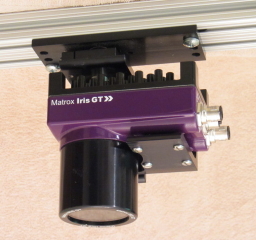
Click to enlarge pictures and drawings.
| |
Foveal FM3_2a Fine-Adjustment 2-Axis Camera Mount
-
Compatible with the
Matrox® Iris GT cameras
-
Pan and Tilt Axes are
aligned with the optical center
of the imaging element,
making alignment easier.
-
Fine Adjustment
of
Pan and Tilt axes.
-
Individual axis lock down
makes adjustment easier,
more precise,
and
prevents accidental change.
-
Sturdy construction.
® "Matrox" is a registered trademark of Matrox Electronic Systems Ltd..
| |
other cameras that fit the FM3_2a
|
Motivation
The
Foveal 2-Axis Fine_Adjustment Camera Mounts,
models FM1_2a and FM2_2a,
are designed to match common
machine vision camera mounting configurations.
But a customer expressed the need for something similar
that could easily handle
the unusual mounting screw holes in the
Matrox Iris GT cameras.
So we created the FM3_2a Fine-adjustment 2-Axis Mount.
It shares the fine-adjustment features and mounting plate options of the other
Foveal FMs (Fine-adjustment Mounts).
Because the FM3_2a is designed specifically
for these make and model mounts,
we optimized the placement of the Pan and Tilt Axes so they are centered on the
imaging element inside the camera body.
Features
in common with all FM models
The 2-Axis Fine-Adjustment Camera Mounts
may be supported with the base down or the base up.
In either position, the plate the camera attaches to can be
either below or above the camera.
When coarse adjustments are unlocked,
there is sufficient friction to hold the camera in position.
Coarse position can be set by hand.
Fine adjustments are made using a hex wrench,
allowing for extremely fine positioning.
Independent adjustment of each axis
means each adjustment does not affect the other.
All adjustments and locking are made with a single 3/32 inch hex wrench.
Reconfiguration is done with a 9/64 inch hex wrench.
Once the mount is locked, the camera does not move.
While not as robust as the Rigid Mounts,
the Fine-adjustment Mount
will work very well in applications where the mount will not be subjected
to extreme disturbances.
They are also suitable for mounting other types of instruments and sensors.
For more robust,
two- and three- axis mounts that feature fine adjustment and locking
of the pan, tilt, and roll axes, see the
Foveal 2- and 3-Axis Rigid Camera Mounts.
Specifications
Options

|
Finger Adjustment Knobs (FAK) Option
Prices and Delivery

|
|
When the need is not set it and forget it
but instead the mount frequently needs to be finely adjusted,
we offer knobs for the fine position adjustment screws.
|

|
Lock Nuts and Lock Washers (LNLW) Option
Prices and Delivery

|
If your mount will be subjected to high vibration,
extra lock nuts and lock washers might help.
LNLW Installation Manual

|

|
Extra Fine Adjustment (EFA) with lock nuts Option
Prices and Delivery

|
The normal change in the Pan or Tilt angle is bit more than
2 degrees per turn of the position screws.
Should you need a finer adjustment, this option provides
slightly less than 1 degree per turn.
While shown here with the PTD option (below),
EFA and PTD are separate options.
EFA Manual

|

|
Pan and Tilt Protractor Dials (PTD) Option
Prices and Delivery

|
|
We offer mounts with Protractor Dials on both
the Pan and Tilt Axes so the angles can be read out.
See the complete description at
Foveal Mounts with Pan and Tilt Protractor Dials.
|
Prices and Delivery
United State dollars
FOB New Jersey, United States
6.625% Sales Tax to customers in New Jersey
Call 973 822-2085
Questions? Call 973 822-2085
Photos, Dimensional Drawings, CAD Files
Dimensions in inches.
Mounting Plate Options
There are four mounting plate options for the FM mounts.
|
no mounting plate
|
The pan pivot has two 8-32 threaded holes in it.
|
|
-SMP3
|
Square Mounting Plate suitable for general mounting to flat surfaces.
|
|
-RMP
|
Rectangular Mounting Plate for general mounting or T-Slot framing
systems. †
|
|
-LMP
|
L-bracket Mounting Plate specifically for T-Slot framing systems.
†
|
† For more information, see
Foveal Mounts - T-Slot Mounting Plates.
3 x 3 inch
Square Mounting Plate
-SMP3
|
|
5 x 2 inch
Rectangular Mounting Plate
-RMP
|
|
L-bracket Mounting Plate
-LMP
|

|
|

|
FM3_2a-RMP
mounted on T-Slot frame

|
|

|
FM3_2a-LMP
mounted on T-Slot frame

|
|
Click to enlarge pictures and drawings.
|
See CAD files Above

|
Camera Mounting Alternatives
Adjusting camera mounts can become tedious in tight or inconvenient
spaces.
We have made the Fine Mounts customer-configurable,
so alternative placements of the adjustment screws and the Tilt table
are possible.

|
For example,
it may be more convenient to have the camera mounted away from the Pan
axis.
In particular, this allows the camera to look over around a corner or down over
an edge.
Note that in this configuration the Pan axis
does not
go through the optical center of the camera,
although the Tilt axis still does.
|
| Click to enlarge pictures and drawings. |
If you need to verify a particular configuration, please contact us.
Contact Us
For information on purchasing
Foveal 2-Axis Fine Camera Mounts
please contact us ...
B & B Model Shop Services, Inc.
is a partner in the design and construction of the Foveal Fine Camera Mounts.
www.FovealMounts.com/fm3_2a_Matrox_Iris_GT.html Thu 01 Aug 2024 02:37:19 PM EDT based on 9.22
FM3_2a Mount for Cognex 5000 & Matrox GatorEye, Iris GT Cameras -- Foveal Systems
Foveal FM3_2a Fine-adjustment 2-axis Mount
for Cognex In-Sight 5000 series cameras
and the Matrox GatorEye, Iris GT cameras
Foveal FM3_2a Fine-Adjustment 2-Axis Camera Mount
-
Specially designed
for the
Cognex® In-Sight® 5100
and
5400 camera lines
and the
Matrox® GatorEye and Iris GT cameras.
-
Pan and Tilt Axes are
aligned with the optical center
of the imaging element,
making alignment easier.
-
Fine Adjustment
of
Pan and Tilt axes.
-
Individual axis lock down
makes adjustment easier,
more precise,
and
prevents accidental change.
-
Sturdy construction.
® "Cognex" and "In-Sight" are registered trademarks of
Cognex Corporation.
® "Matrox" is a registered trademark of
Matrox Electronic Systems Ltd..
|
Click a picture to see the full details
of the FM3_2a mount used with that camera.

Cognex In-Sight 5100 camera
|

Matrox GatorEye camera
|

Matrox Iris GT camera
|
With the new layout of the Cognex In-Sight 5000 series,
there was no compatible camera mount
on the market.
Foveal Systems came
out with a competent camera mount that meets my needs.
Thanks Foveal.
|
Robert T. Couture
4th Vector Technologies
|
Motivation
The
Foveal 2-Axis Fine_Adjustment Camera Mounts,
models FM1_2a and FM2_2a,
are designed to match common
machine vision camera mounting configurations.
But a customer expressed the need for something similar
that could easily handle
the unusual mounting screw holes in the
Cognex
In-Sight 5100 and 5400 cameras.
So we created the FM3_2a Fine-adjustment 2-Axis Mount.
It shares the fine-adjustment features and mounting plate options of the other
Foveal FMs (Fine-adjustment Mounts).
The Cognex model series supported include
5000,
5100,
5400,
5600,
and
5700.
Other cameras in the Cognex line can be mounted on the
FM1_2a and/or FM2_2a mounts.
The
Matrox
GatorEye and Iris GT cameras also mount on the FM3_2a
Because the FM3_2a is designed specifically
for these make and model mounts,
we optimized the placement of the Pan and Tilt Axes so they are centered on the
imaging element inside the camera body.
Features
in common with all FM models
The 2-Axis Fine-Adjustment Camera Mounts
may be supported with the base down or the base up.
In either position, the plate the camera attaches to can be
either below or above the camera.
When coarse adjustments are unlocked,
there is sufficient friction to hold the camera in position.
Coarse position can be set by hand.
Fine adjustments are made using a hex wrench,
allowing for extremely fine positioning.
Independent adjustment of each axis
means each adjustment does not affect the other.
All adjustments and locking are made with a single 3/32 inch hex wrench.
Reconfiguration is done with a 9/64 inch hex wrench.
Once the mount is locked, the camera does not move.
While not as robust as the Rigid Mounts,
the Fine-adjustment Mount
will work very well in applications where the mount will not be subjected
to extreme disturbances.
They are also suitable for mounting other types of instruments and sensors.
For more robust,
two- and three- axis mounts that feature fine adjustment and locking
of the pan, tilt, and roll axes, see the
Foveal 2- and 3-Axis Rigid Camera Mounts.
Contact Us
For information on purchasing
Foveal 2-Axis Fine Camera Mounts
please contact us ...
B & B Model Shop Services, Inc.
is a partner in the design and construction of the Foveal Fine Camera Mounts.
www.FovealMounts.com/fm3_2a.html 2020/12/15 21:26:52 9.7
Foveal Mounts with Pan and Tilt Finger Adjustment Knobs

|
Foveal Mounts
with
Pan and Tilt
Finger Adjustment Knobs
|

|

Click pictures to enlarge.
| |
Easily Set the Pan and Tilt Angles without Tools
Ideal for frequent adjustment!
The
Foveal Mounts with Pan and Tilt Finger Adjustment Knobs
feature:
-
The Knobs
can be repositioned
to either the front or back side of the mount.
-
Individual axis lock down
making adjustment easier and more precise,
and
preventing accidental change.
-
Sturdy construction.
|
|

|
Motivation
A customer wanted a
Foveal Fine-adjustment Mount
that could be easily reset without using the hex-key tool that is normally
necessary.
"In this application we need to make minor adjustment
of the pan and tilt position frequently.
Doing that using a tool is inconvenient."
So we now offer both the Fine-adjustment Mounts
and the Rigid Mounts
with Finger Adjustment Knobs
on the Pan and Tilt Axes.
Features
The Finger Adjustment Knobs
(FAK)
option
is available on all Foveal Mounts:
and share all their features,
plus the added ability to
make small adjustments to the Pan and Tilt angles by hand.
For information on purchasing
Foveal Mounts
please contact us ...
B & B Model Shop Services, Inc.
is a partner in the design and construction of the Foveal Mounts.
www.FovealMounts.com/fingeradjustmentknob.html 2016/03/20 19:06:12 9.4
Foveal Mounts with Pan and Tilt Protractor Dials -- Foveal Systems

|
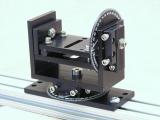
|
Foveal Mounts
with Pan and Tilt Protractor Dials
|

|

|
Set the Pan and Tilt Angles to the Nearest Degree
Ideal for resetting to known positions!!!
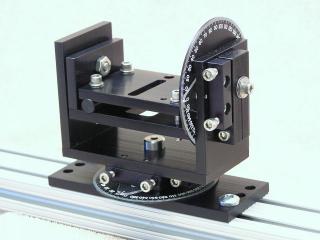
Click pictures and drawings to enlarge.
| |
The
Foveal Mounts with Pan and Tilt Angle Protractors
for small-to-medium-to-large sized "box" cameras feature:
-
Read Out Pan and Tilt Angles
to the nearest degree.
-
The Protractor Dials
can be repositioned to the 4 quadrants;
0, 90, 180, and 270 degrees.
-
The Indexes
can be repositioned
to either the front or back side of the mount.
-
Fine Adjustment
of all axes.
-
Individual axis lock down
making adjustment easier and more precise,
and
preventing accidental change.
-
Sturdy construction.
 See-through indexes.
See-through indexes.
|
Motivation
A customer wanted a
Foveal Fine-adjustment Mount
that could be easily reset to specific positions.
"We want the operator to dial it in to the approximate position, say a degree
or so, and then tweak it using the camera monitor."
We now offer both the Fine-adjustment Mounts
and the Rigid Mounts
with Protractor Dials
on the Pan and Tilt Axes, so the angles can be read out.
The addition of the Pan Dial raises the mount 1/16 inch.
Features
These mounts are identical to their cousins:
and share all their features,
plus the added ability to
read the Pan and Tilt angles to the nearest degree.
Specifications, CAD Files
Each of the Pan and Tilt Protractor Dial mounts is virtually identical to its
dial-less cousin.
As can be seen in these photographs,
the 3-inch diameter Tilt Protractor Dial
is 1 inch wider than the 2-inch wide camera platform
and 1 inch wider than
the 2-inch wide Rectangular and L-bracket Mounting Plates.
Also, the Pan Protractor Dial raises the mount 1/16 inch more above the base
plate.
Prices and Delivery
United States dollars
FOB New Jersey, United States
6.625% Sales Tax to customers in New Jersey
Call 973 822-2085
Dimensional Drawings
Dimensions in inches.
|
Model FM1_2a_PTD-SMP3 with Square Mounting Plate

Click drawing to enlarge.
|
Model FM2_2a_PTD-SMP3 with Square Mounting Plate

Click drawing to enlarge.
|
|
What are the differences between the FM1_2a_PTD and the FM2_2a_PTD?
First, the position and spacing of the two slots for the camera mounting
screws are not the same.
In the FM1_2a_PTD, one of the slots is centered over the Pan pivot.
In the FM2_2a_PTD, the Pan pivot centerline goes between the two slots.
Second, in the FM1_2a_PTD, the slots are three-quarters of an inch apart.
In the FM2_2a_PTD, the slots are 20 millimeters apart.
The FM1_2a_PTD works well with most cameras with 1/4-20 mounting sockets.
The FM2_2a_PTD works well with some cameras with M6 metric mounting sockets.
Of course, you can drill the anodized aluminum or
create an adaptor plate.
Or call us and we can discuss a custom design
to match your specific needs.
|
|
Model FM3_2a_PTD-SMP3 with Square Mounting Plate

|
| Click drawing to enlarge. |
Mounting Plate Options
These are mounting plate options for the PTD mounts.
|
no mounting plate
|
The pan pivot has two 8-32 or 10-32 threaded holes in it.
Please call for more information.
|
| |
|
|
Square Mounting Plate suitable for general mounting to flat surfaces.
|
|
-SMP3
|
• 3 x 3 inches for FM and RM1 mounts.
|
|
-SMP4
|
• 4.75 x 4.75 inches for RM2 and RM3 mounts.
|
| |
|
-RMP
|
Rectangular Mounting Plate for general mounting or T-Slot framing
systems. †
|
|
-LMP
|
L-bracket Mounting Plate specifically for T-Slot framing systems.
†
|
† For more information, see
Foveal Mounts - T-Slot Mounting Plates.
3 x 3 inch
Square Mounting Plate
|
4.75 x 4.75 inch
Square Mounting Plate
|
5 x 2 inch
Rectangular Mounting Plate
|
Rectangular Mounting Plate
mounted on T-Slot frame
|
L-bracket Mounting Plate
|

|

|

|

|

|
Camera Mounting Alternatives
Please note that the Pan Protractor Dial is always
between the tilt table support and the tilt table.
Most Foveal Mounts can be reassembled into several different
configurations.
See the
Fine-adjustment Mount
and
2- and 3-Axis Rigid Camera Mount
web pages for examples.
In the case of the FM (Fine-adjustment Mounts) with Pan and Tilt Dials,
the configurations that would have the tilt table hanging outside
the tilt table support are not possible as delivered.
We can provide that configuration as a special order.
If you need to verify a particular configuration, please contact us.
For information on purchasing
Foveal Mounts
please contact us ...
B & B Model Shop Services, Inc.
is a partner in the design and construction of the Foveal Mounts.
www.FovealMounts.com/dial_mount.html Thu 01 Aug 2024 02:36:54 PM EDT based on 9.21
Foveal Camera Mounts
T-Slot Mounting Plates
Ideal for Use with T-Slot Extrusion Framing Systems
|
FM1_2a-RMP
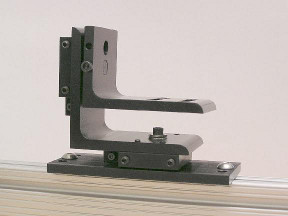
|
|
The Rectangular and L-bracket mounting plates for the
Foveal FM (Fine-adjustment) Mounts
and RM (Rigid) Mounts
are ideal for use with
T-Slot Extrusion Framing Systems.
-
Easy attachment and positioning.
-
Preserve full adjustment ranges.
|
RM1_3a-LMP
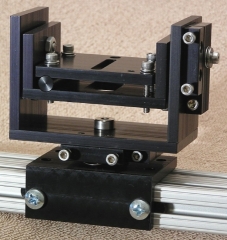
|
| Click to enlarge pictures and drawings. |
Motivation
T-Slot extrusion framing systems
 are frequently used in machine vision applications,
and our customers asked for mounting plates designed for some of the most
popular configurations.
are frequently used in machine vision applications,
and our customers asked for mounting plates designed for some of the most
popular configurations.
If you have other needs, please let us know.
973 822-2085
Features
|
Rectangular Mounting Plate
|
|
FM1_2a-RMP
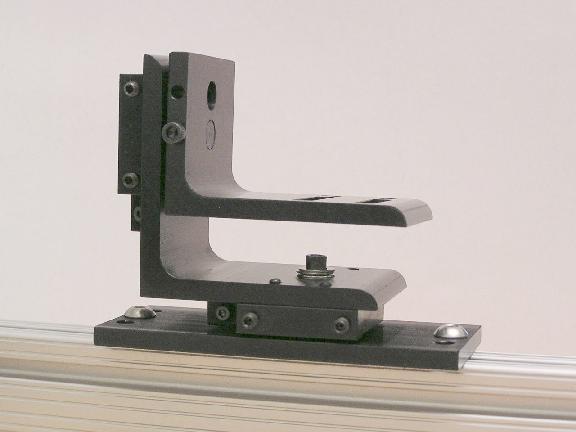
|
RM1_3a-RMP
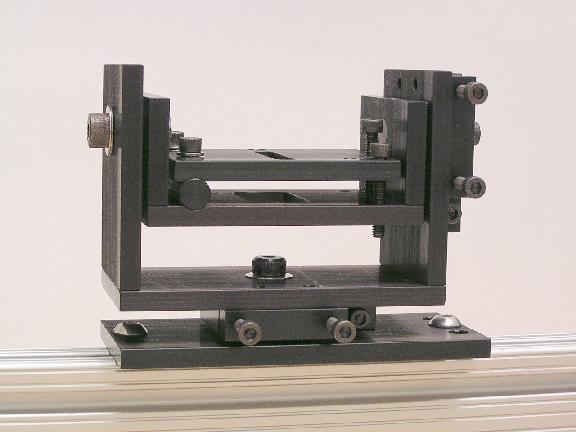
|
FM3_2a-RMP

|
Click to enlarge pictures and drawings.
|
| |
|
Centers on single-slot . . .
|
. . . and dual-slot frames.
|
|
|
L-bracket Mounting Plate
|
FM1_2a-LMP
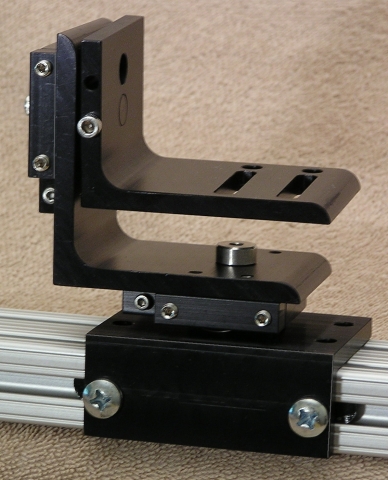
|
RM1_3a-LMP
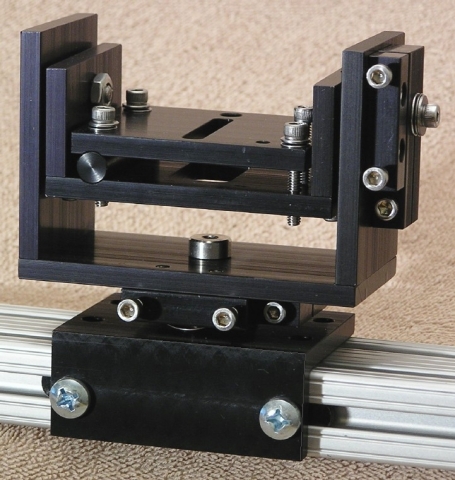
|
FM1_2a-LMP x 3
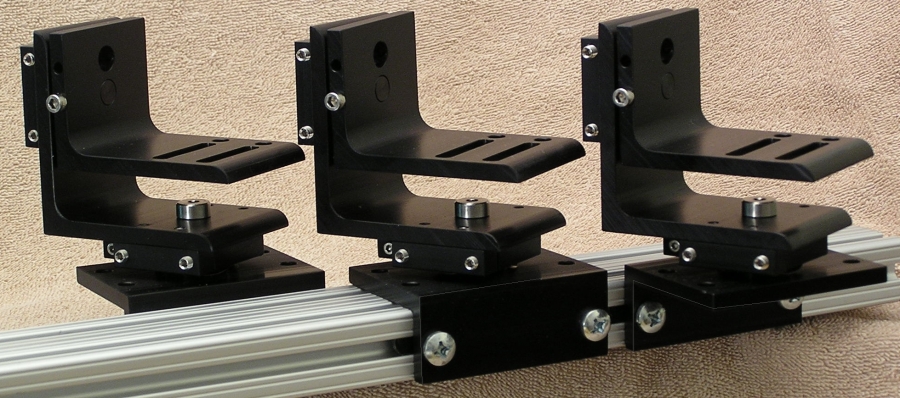
|
|
|
Mounting screws can be on the side of the frame,
instead of on top.
|
Accommodates complex and cramped camera placements.
|
|
Prices
| Models |
Price List |
FM1_2a
FM2_2a
|
Fine-adjustment Mounts
|
Click Here
|
|
FM3_2a
|
Mounts for Cognex 5000 series
and Matrox GatorEye, Iris GT
cameras
|
Click Here
|
FM3mm_2a
FM4mm_2a
FM5mm_2a
FM6mm_2a
|
Fine-adjustment Mounts for cameras using
3mm, 4mm, 5mm and 6mm metric mounting slots.
|
Click Here
|
|
RM1
|
small Rigid Mounts
|
Click Here
|
|
RM2 and RM3
|
medium and large Rigid Mounts
|
Click Here
|
Call 973 822-2085
Dimensional Drawings
Dimensions in inches.
|
Square Mounting Plate
SMP3
3 x 3 inch
Not used with T-slot systems.
Used with FM and RM1 mounts.
|
Rectangular Mounting Plate
RMP
5 x 2 inch
Used with FM mounts.
|
L-bracket Mounting Plate
LMP
Used with FM and RM1 mounts.
|

|

Note the Center of Rotation is not in the center of the RMP.
|

|
| Click to enlarge pictures and drawings. |
|
Square Mounting Plate
SMP4
4.75 x 4.75 inch
Not used with T-slot systems.
Used with RM2 and RM3 mounts.
|
Rectangular Mounting Plate
RMP
5 x 2 inch
Used with RM1, RM2 and RM3 mounts.
|
L-bracket Mounting Plate
LMP
Used with RM2 and RM3 mounts.
|
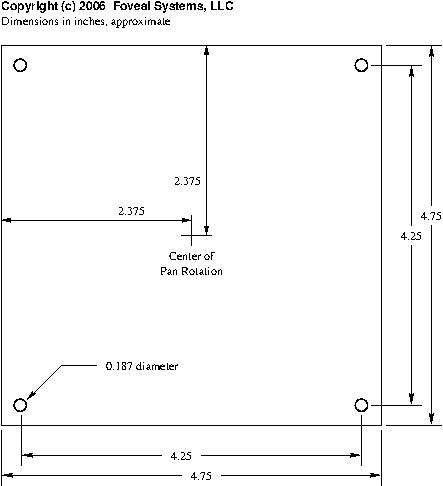
|
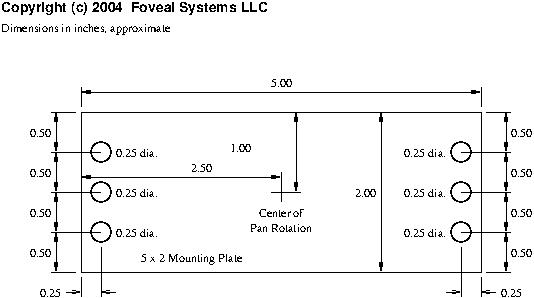
Note the Center of Rotation is in the center of the RMP.
|
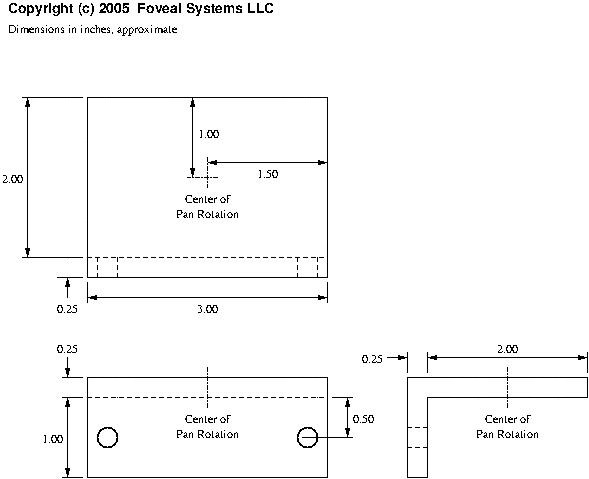
|
| Click to enlarge pictures and drawings. |
Contact Us
For information on purchasing
Foveal 2-Axis Fine Camera Mounts
please contact us ...
B & B Model Shop Services, Inc.
is a partner in the design and construction of the Foveal Fine Camera Mounts.
www.FovealMounts.com/fm_tslot.html Thu 01 Aug 2024 02:37:23 PM EDT based on 9.6
Camera Adapter for Cognex 5000 Camera -- Foveal Systems
Camera Adapter for Cognex 5000 Camera
used with the
Foveal RM2 2-axis and 3-axis Camera Mount
Supports the Cognex 5000 Camera on a 2-axis or 3-axis Mount
Easy removal and replacement of the camera
without changing Pan, Tilt or Roll setting!
The
Foveal
CACognex5000
Camera Adapter
was designed for a customer who wanted to mount a
Cognex 5000 camera on a 3-axis mount.
It also works well with the Cognex stainless steel cameras.
The adapter mounts to the Roll Plate of the
Foveal
RM2_3a
mount.
Our design:
-
Holds the camera firmly.
-
Allows for easy removal and replacement of the camera
without disturbing the Pan, Tilt and Roll settings!
In some cases, minor tweaking of the settings may be necessary.
Click to enlarge pictures and drawings.
| |
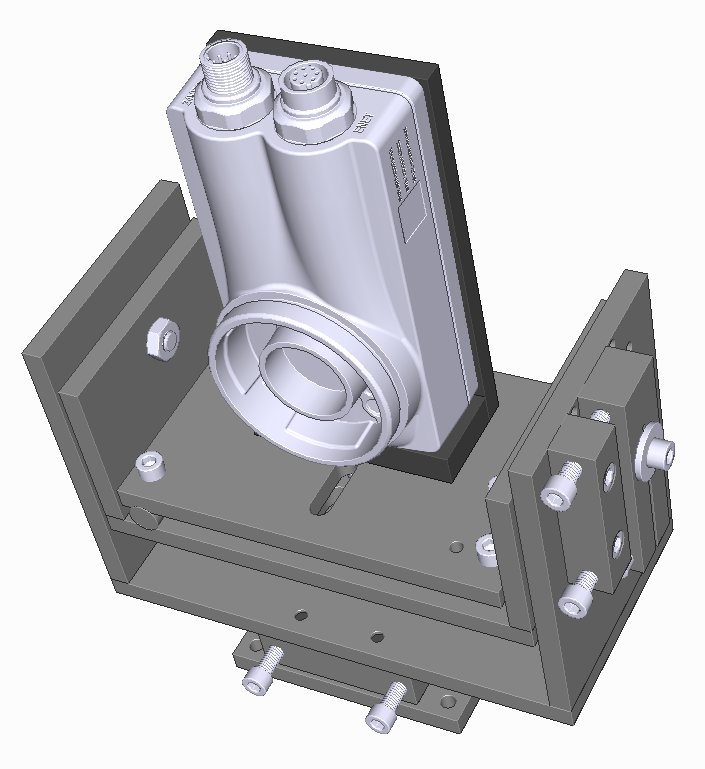
RM2_3a_SMP4
3 axis mount with
the CACognex5000 adapter
and a
Cognex 5000
stainless steel camera
|
Also see our other mounts suitable for Cognex cameras:
Prices and Delivery
United States dollars
FOB New Jersey, United States
6.625% Sales Tax to customers in New Jersey
Call 973 822-2085
Questions? Call 973 822-2085
Dimensional Drawings, CAD Files
Camera Adapter for Cognex 5000 series Cameras
used with the
Foveal RM2 2-axis and 3-axis Camera Mounts
www.FovealMounts.com/camera_adapter_Cognex.html 2020/12/15 21:26:52 9.5
Camera Adapter for Dalsa Piranha P3 Cameras -- Foveal Systems
Camera Adapter for Dalsa Piranha P2 and P3 Cameras
used with Foveal RM2 Rigid Camera Mounts
Firm Support of some Dalsa Piranha P2 and P3 Cameras
Easy removal and replacement of the camera
without changing Pan, Tilt or Roll setting!!!
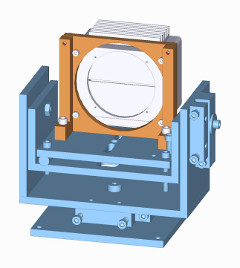
RM2_3a_CADalsaP2-SMP4
3 axis mount
with Dalsa P2-4x-xxx40
| |
The
Foveal
CADalsaP2
Camera Adapter
was designed for a customer wanted to mount a
Teledyne Dalsa Piranha 2 P2-4x-xxx40 camera on a
Foveal RM2_3a mount.
Our design:
-
Holds the camera firmly.
-
Allows for easy removal and replacement of the camera
without disturbing the Pan, Tilt and Roll settings!!!
In some cases, minor tweaking of the settings may be necessary.
-
Can be used with
some of the Dalsa P2 cameras.
- P2-4K-xxx40 (7 μm) Standard
- P2-6K-xxx40 (7 μm) Standard
- P2-8K-xxx40 (7 μm) Standard
- P2-2K-xxx40 (10 μm)
- P2-4K-xxx40 (10 μm)
Please call before ordering!!!
Click to enlarge pictures and drawings.
|

RM2_3a_CADalsaP3-SMP4
3 axis mount
with Dalsa P3-80
| |

RM2_2a_CADalsaP3-LMP
2 axis mount
with Dalsa P3-87 (wireframe)
| |
The
Foveal
CADalsaP3
Camera Adapter
was designed for a customer wanted to mount a
Teledyne Dalsa Piranha 3 P3-80 camera on a
Foveal RM2_3a mount.
Our design:
-
Holds the camera firmly.
-
Allows for easy removal and replacement of the camera
without disturbing the Pan, Tilt and Roll settings!!!
In some cases, minor tweaking of the settings may be necessary.
-
Can be reconfigured and used with
either the
Dalsa P3-80 or P3-87 camera.
But not all P3 models!!!
Please call before ordering!!!
Click to enlarge pictures and drawings.
|
Prices and Delivery
United States dollars
FOB New Jersey, United States
6.625% Sales Tax to customers in New Jersey
Call 973 822-2085
Questions? Call 973 822-2085
Dimensional Drawings, CAD Files
CADalsaP2 Camera Adapter for Dalsa Piranah P2 cameras
CADalsaP3 Camera Adapter for some Dalsa Piranah P3 cameras
There are many configurations of the mounting holes on Dalsa cameras, even on
those which share the same product names, like "Piranah".
This Adapter has 3 mounting hole patterns that fit some Piranah models.
Call us and we can discuss your needs.
www.FovealMounts.com/camera_adapter_Dalsa.html 2020/12/15 21:26:52 9.15
Foveal Camera Mounts Contact Us

Contact Us
Foveal Systems E-mail, Privacy, and Advertising Policies
Any and all information that you provide to us is used only by
Foveal Systems LLC.
It will not be shared or sold.
Mike Bianchi
Founder
Foveal Systems LLC
Automatic Auditorium,
AutoAuditorium,
and
AutoAud
are licensed trademarks of
Telcordia Technologies, Inc.
Copyright © 2000 - 2024
Foveal Systems, LLC.
All rights reserved.
|
|
www.FovealMounts.com/fovealmounts_infoform.html 2023/02/10 18:20:57 9.4
Foveal Systems Home Page

The Center of Vision
Home Page
Foveal Systems, LLC
190 Loantaka Way
Madison NJ 07940-1910
+1 973 822-2085 Voice Fax by appointment
info@Foveal.com
http://www.Foveal.com (This page.)
http://www.AutoAuditorium.com
http://www.FovealMounts.com
Foveal develops and sells these products:
Foveal also sponsors
the Tour de Sol Reports.
The AutoAuditorium System
Foveal's
AutoAuditoriumTM System
is a fully automatic, multi-camera system for
televising auditorium presentations.
Once installed in an auditorium
or large meeting room, recording or telecasting any presentation given
in that room is as simple as turning on a switch and hitting RECORD.
There are no other operator controls.
All the shot selections, video
transitions, camera motion, focusing and zooming, are performed
automatically.
The result is often indistinguishable from a program
produced by a crew.
The system automatically tracks the lecturer (without that person
having to wear or carry any target or mechanism), automatically makes
video shot selections, and also automatically mixes audio from both
the stage and the audience.
The output of an AutoAuditorium session is base-band video and audio,
which can then be:
-
Recorded on video tape or DVD or Blu-ray.
-
Encoded as a digital recording.
-
Transmitted over broadcast or narrowcast media.
The AutoAuditorium system is distinguished by being:
-
Economical, both to install and to operate,
-
Unobtrusive, both to the person giving the presentation and
the audiences watching it,
-
Readily available.
The economy comes from the completely automatic operation of the
system which follows the person giving the talk and and selects which
of several images to show the remote audiences.
The design of the system is deliberately unobtrusive.
The person
giving a presentation and the local audience are not distracted by
bright lights, obvious cameras or television personnel.
Even people
who are nervous about ``being on television'' quickly forget the
cameras.
The system is permanently installed, and switching between normal
auditorium use and Automatic Auditorium use takes but a few minutes.
The Automatic Auditorium fills the gap between face-to-face video
teleconferencing and studio-based business television programming both
in terms of capabilities and economies.
Meetings too big to hold in
traditional video teleconferencing rooms fit naturally into a
Automatic Auditorium setting.
Productions not important enough or
complicated enough to justify the expense and the elaborate
capabilities of a television studio or a field production crew become
economical as Automatic Auditorium programs.
The system is ideally suited for any situation where a group of people
come into a room and watch a presentation give by someone on a stage
who uses projected visuals.
Some examples of such presentations are:
-
Distance Education
-
Group Collaboration
-
Sales Seminars
-
New Product Launches
-
Corporate Training
-
Regularly Scheduled Presentations
-
Impromptu Events
Foveal Machine Vision Camera Mounts
Derived from a need for a reliable mechanism to position a television camera
precisely in all three axes (pan, tilt, and roll),
and then lock those positions permanently,
we developed the
Foveal 3-Axis Rigid Camera Mount.
The mount has proved useful for applications other than AutoAuditorium Systems
and
other than mounting cameras and
so is available separately.
Some potential
customers of the 3-Axis Rigid Camera Mounts found they were too elaborate
for their applications.
So we created the
Foveal 2-Axis Fine-Adjustment Camera Mount.
It is a less expensive,
less robust,
two axis mount that features fine adjustment and locking
of the pan and tilt axes.
The product line has expanded to include some novel designs.
Foveal Machine Vision Camera Mounts
Foveal Sponsors the Tour de Sol Reports
Mike Bianchi,
founder of Foveal Systems,
is interested in electric vehicles.
From 1994 until the present he
has been documenting the American Tour de Sol
US Electric Vehicle Challenge in a series of Reports.
The name has changed some over the years,
but the intent has been pretty much the same,
namely to show that there are alternatives to gasoline and diesel fuels
in internal combustion engines for transportation.
The first American Tour de Sol in 1989 had all solar-powered vehicles.
Battery electric, hybrid-electric, and alternative
fueled vehicles have been added to the event over time.
The
Tour de Sol Reports
tell the stories of the vehicles and
the people and organizations which create them.
Automatic Auditorium, AutoAuditorium and AutoAud
are trademarks of
Telcordia Technologies
used under license.
Where does the name
FOVEAL
come from?
The fovea is the most sensitive part of the eye,
where we see with the greatest clarity.
The Foveal Systems' products are based on computer vision
technology, so . . .
Copyright © 2004
FOVEAL SYSTEMS LLC.
All rights reserved.
Foveal Systems: Michael Bianchi, Founder

The Center of Vision
Michael Bianchi
Founder
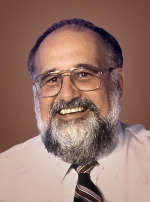 FOVEAL SYSTEMS LLC
is owned and operated by Michael Bianchi
in Madison, New Jersey.
It began operations in the fall of 1999.
FOVEAL SYSTEMS LLC
is owned and operated by Michael Bianchi
in Madison, New Jersey.
It began operations in the fall of 1999.
Foveal develops and sells the
AutoAuditoriumTM System,
a fully automatic, multi-camera system for
televising auditorium presentations,
which grew out of Bianchi's research at
Telcordia Technologies, Inc. (nee Bellcore).
Recording and broadcasting
auditorium presentations promoted collaboration
between Bellcore and its owners,
the former Bell System operating companies.
Foveal also sells
Foveal Camera Mounts,
designed and built by him and
Barry Vaning of
B & B Model Shop Services.
Prior to working in the Applied Research division of Telcordia,
Bianchi was at
Western Electric,
Bell Laboratories,
and
AT&T Information Systems,
developing
software management systems and
operations support systems.
He was one of the earliest users of the
UNIX Programmer's Workbench
and a proponent of the "software tools" approach to program development.
One of his personal interests is electric vehicles.
Although he now owns a 2008 Prius,
his day-to-day automobile for over 10 years was a
Solectria Force
and he was often the announcer and reporter for the
Northeast Sustainable Energy Association's
annual
American Tour de Sol Electric Vehicle Challenge
from 1995 until 2009.
The reports are available at
www.Foveal.com/Tour_de_Sol_Reports.html.
Automatic Auditorium, AutoAuditorium and AutoAud
are trademarks of
Telcordia Technologies
used under license.
Copyright © 2000-2014
FOVEAL SYSTEMS LLC.
All rights reserved.
The Tour de Sol Reports
The Tour de Sol Reports
From 1994 until 2006,
Mike Bianchi documented the
American Tour de Sol US Electric Vehicle Challenge
in a series of Reports.
The name changed some over the years,
but the intent was pretty much the same,
namely to show that there are alternatives to gasoline and diesel
fuels in internal combustion engines for transportation.
The first American Tour de Sol in 1989 had all solar-powered vehicles.
Battery electric, hybrid-electric, and alternative fueled vehicles have
been added to the event over time.
These Reports tell the stories
of the vehicles and the people and companies which create them.
The following are copyright Michael H. Bianchi. Permission to copy is
granted provided each Report is presented without modification
and this notice is attached. For other arrangements, contact me
at +1-973-822-2024 .
For more on the NESEA Tour de Sol, see the web page at
Official NESEA Tour de Sol information is available from the sponsor,
the Northeast Sustainable Energy Association (NESEA) at
413 774-6051 , and 50 Miles Street, Greenfield, MA 01301 , and
nesea@nesea.org . All media enquiries should be addressed NESEA.
ATdS Report 1994
ATdS Report 1995
ATdS Report 1996
ATdS Report 1997
ATdS Report 1998
ATdS Report 1999
ATdS Report 2000
TdS Report 2001
TdS Report 2002
Bill Moore of EVWorld.com asks Mike Bianchi about the
2003 Tour de Sol audio
TdS Report 2003
TdS Report 2004
TdS Report 2005
TdS Report 2006
21st Century Automotive Challenge 2007
21st Century Automotive Challenge 2008
1 Gallon Challenge 2009
The Last Molt and Emergence of a Monarch Butterfly
The Last Molt
and
Emergence
of a Monarch Butterfly
with titles and music
15 minutes 38 seconds
Loading jwplayer-7.0.3 . . .
The Last Molt
of a Monarch Butterfly
highlights; no music
3 minutes 3 seconds
Loading jwplayer-7.0.3 . . .
Emergence
of a Monarch Butterfly
highlights; no music
2 minutes 23 seconds
Loading jwplayer-7.0.3 . . .
www.AutoAuditorium.com/LastMolt.html 2018/04/25 22:26:47 9.7

 Classroom / Distance Learning Mash-Up Aids
Student Performance
Classroom / Distance Learning Mash-Up Aids
Student Performance







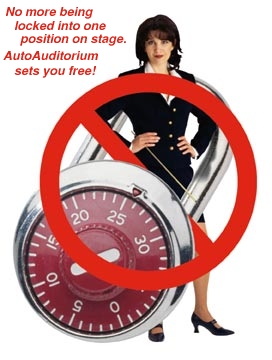








 Corporate Scenarios
Corporate Scenarios
 Hospital Scenarios
Hospital Scenarios
 Schools, Colleges, and Universities
Schools, Colleges, and Universities



 What You Get
What You Get AutoAuditorium Controller Hardware
AutoAuditorium Controller Hardware




















































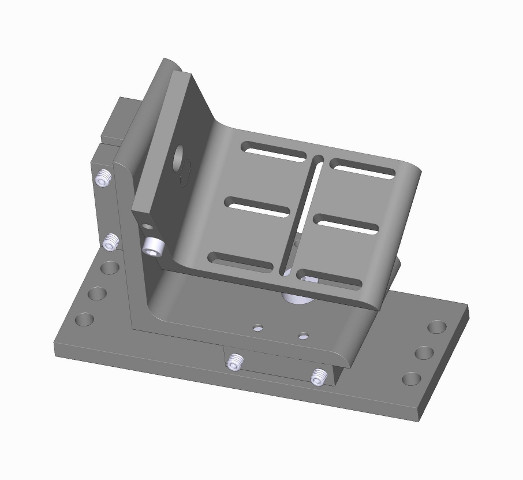







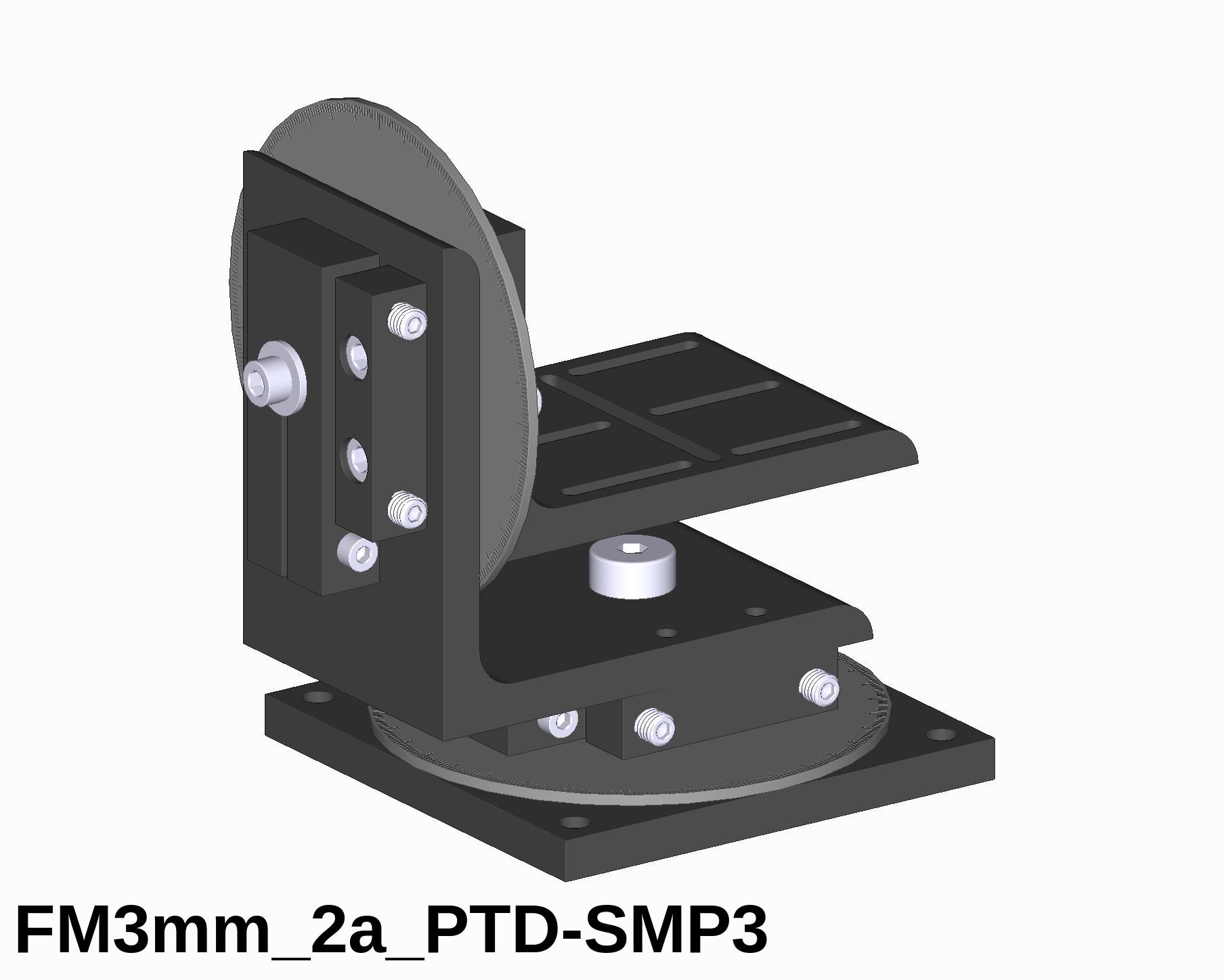







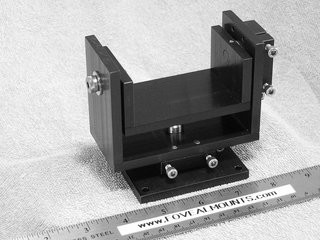

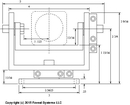

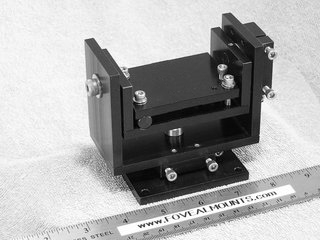


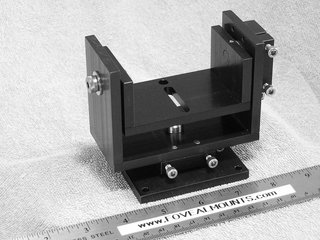

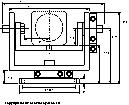
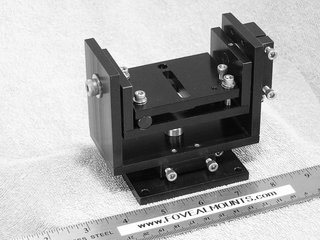

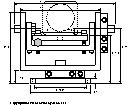






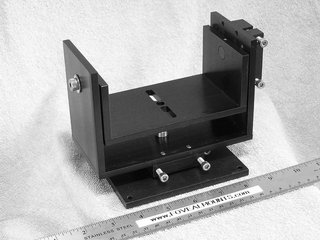

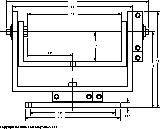

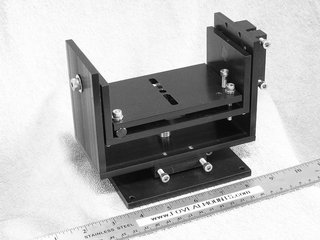
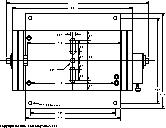
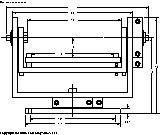

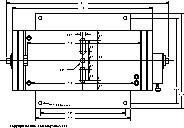
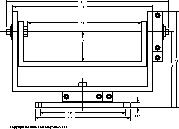
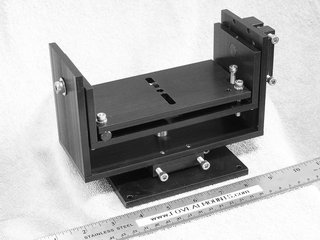
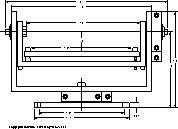
































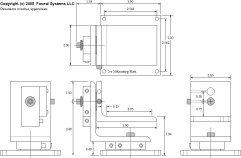









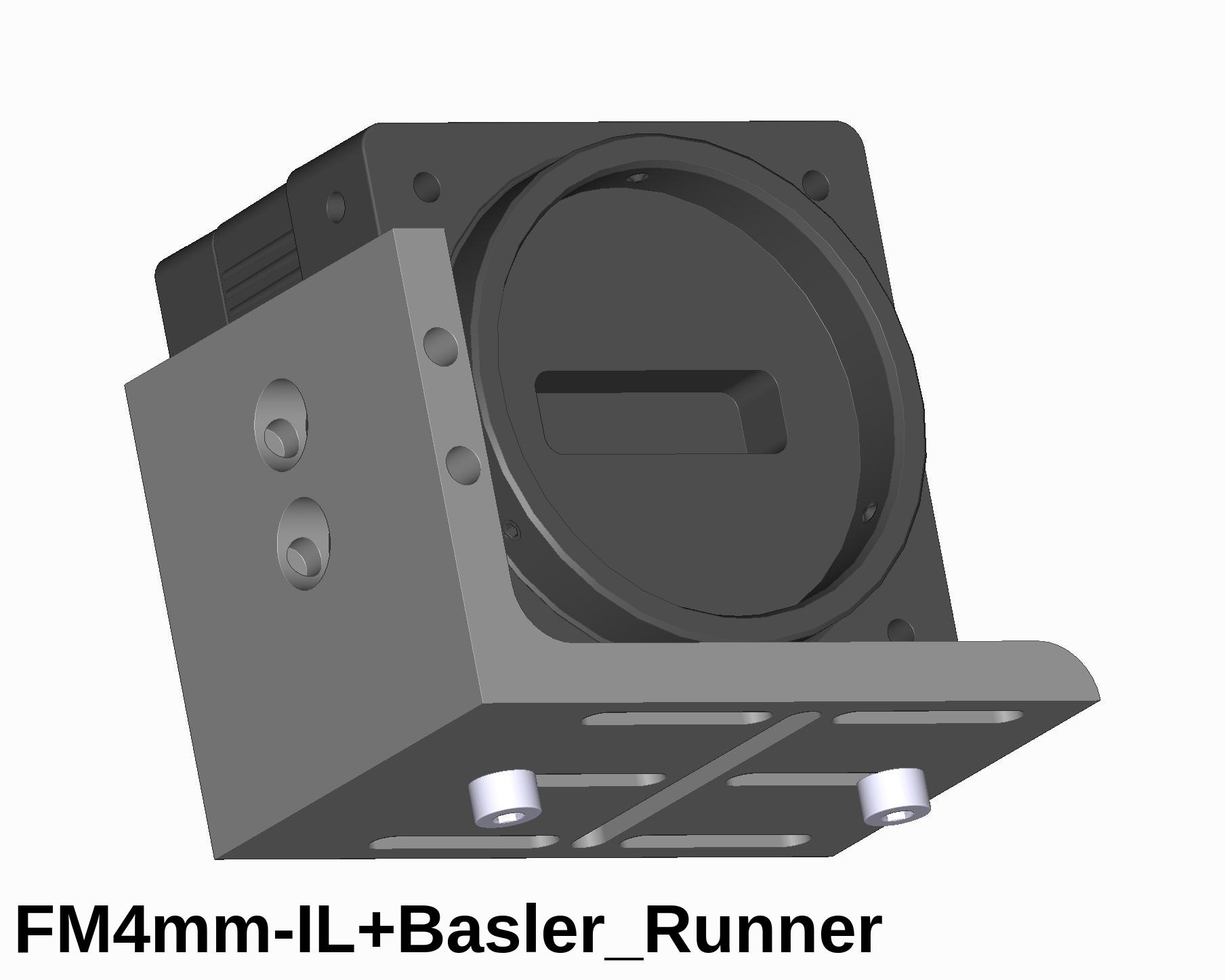
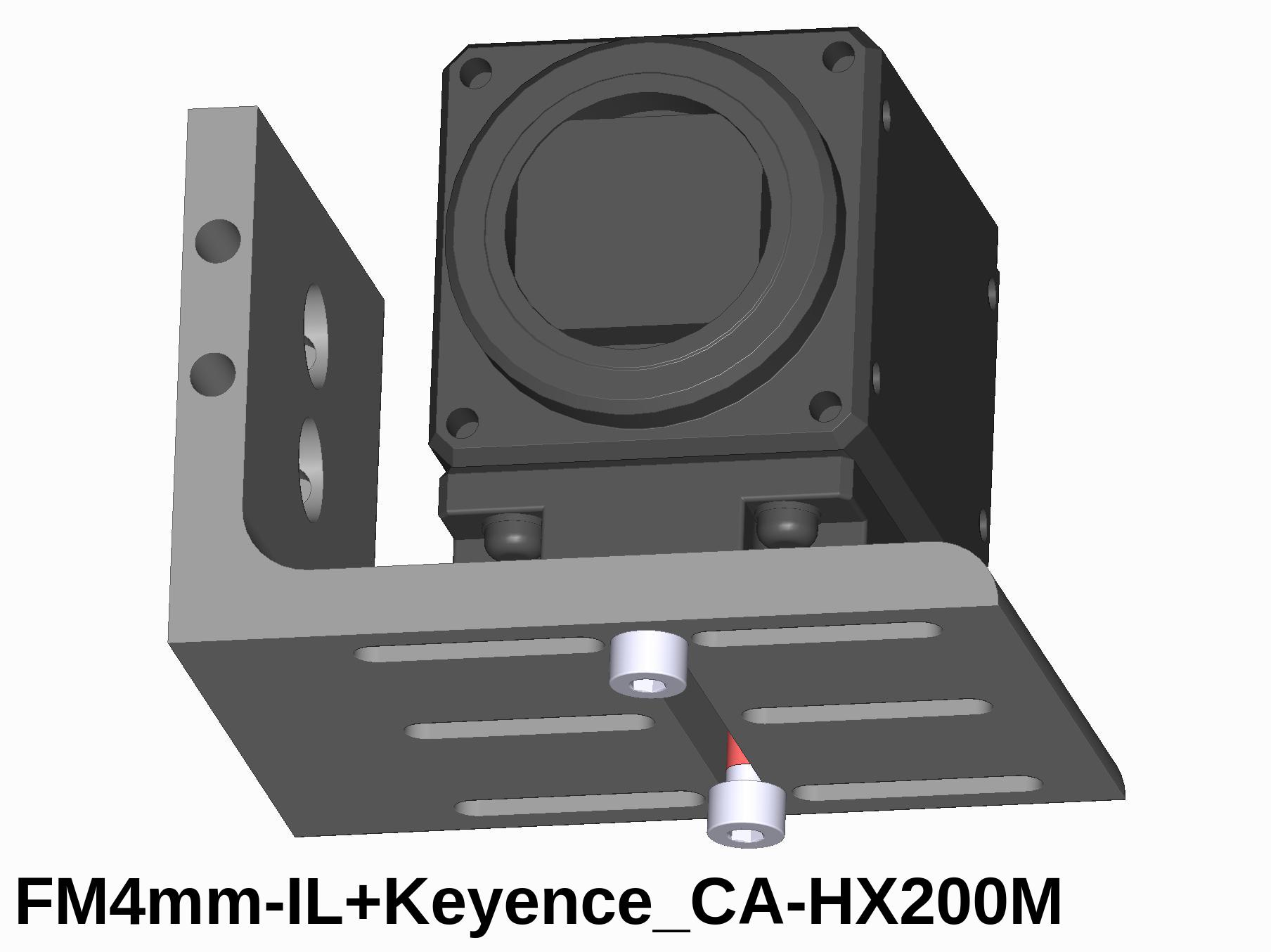
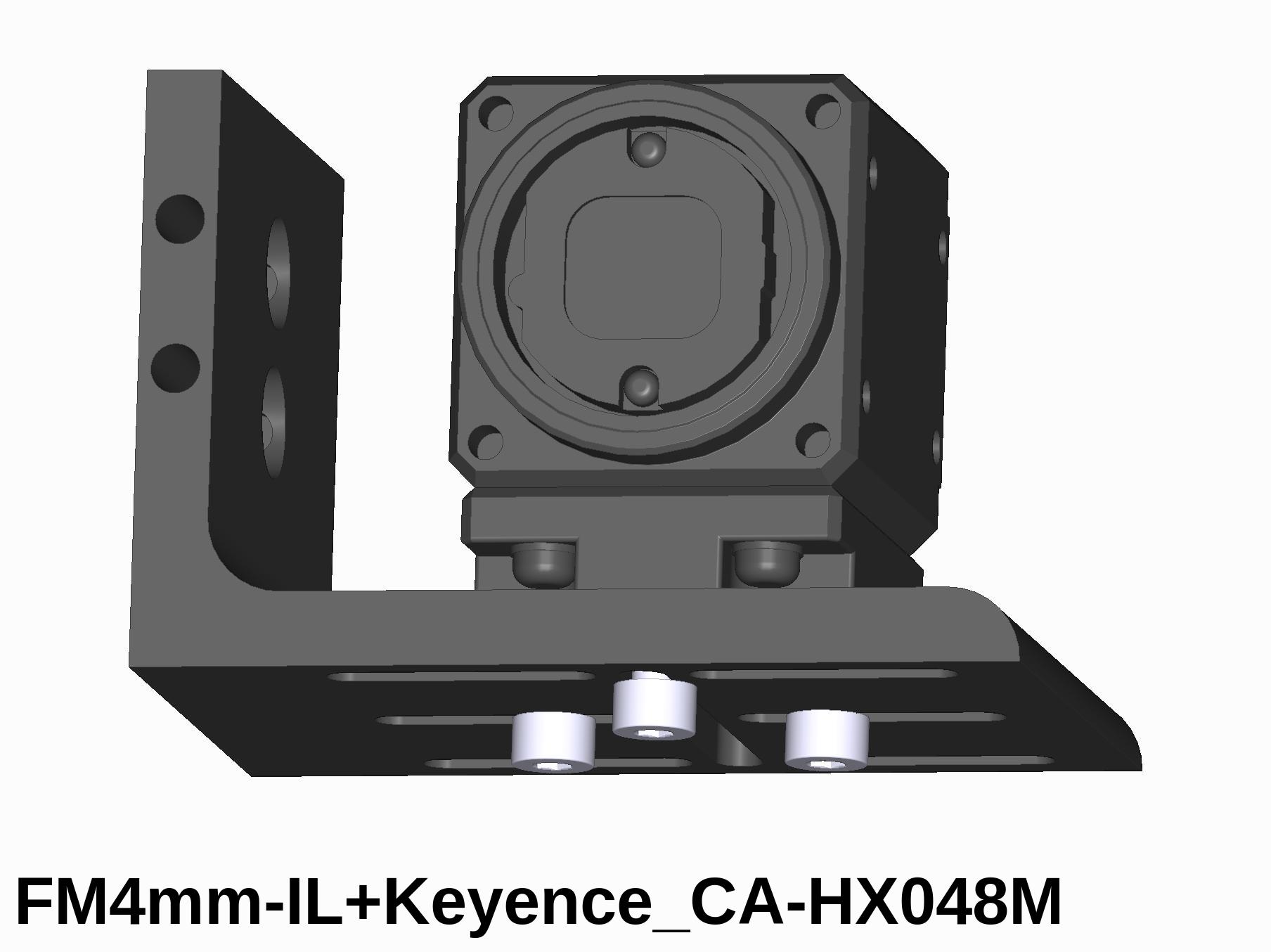
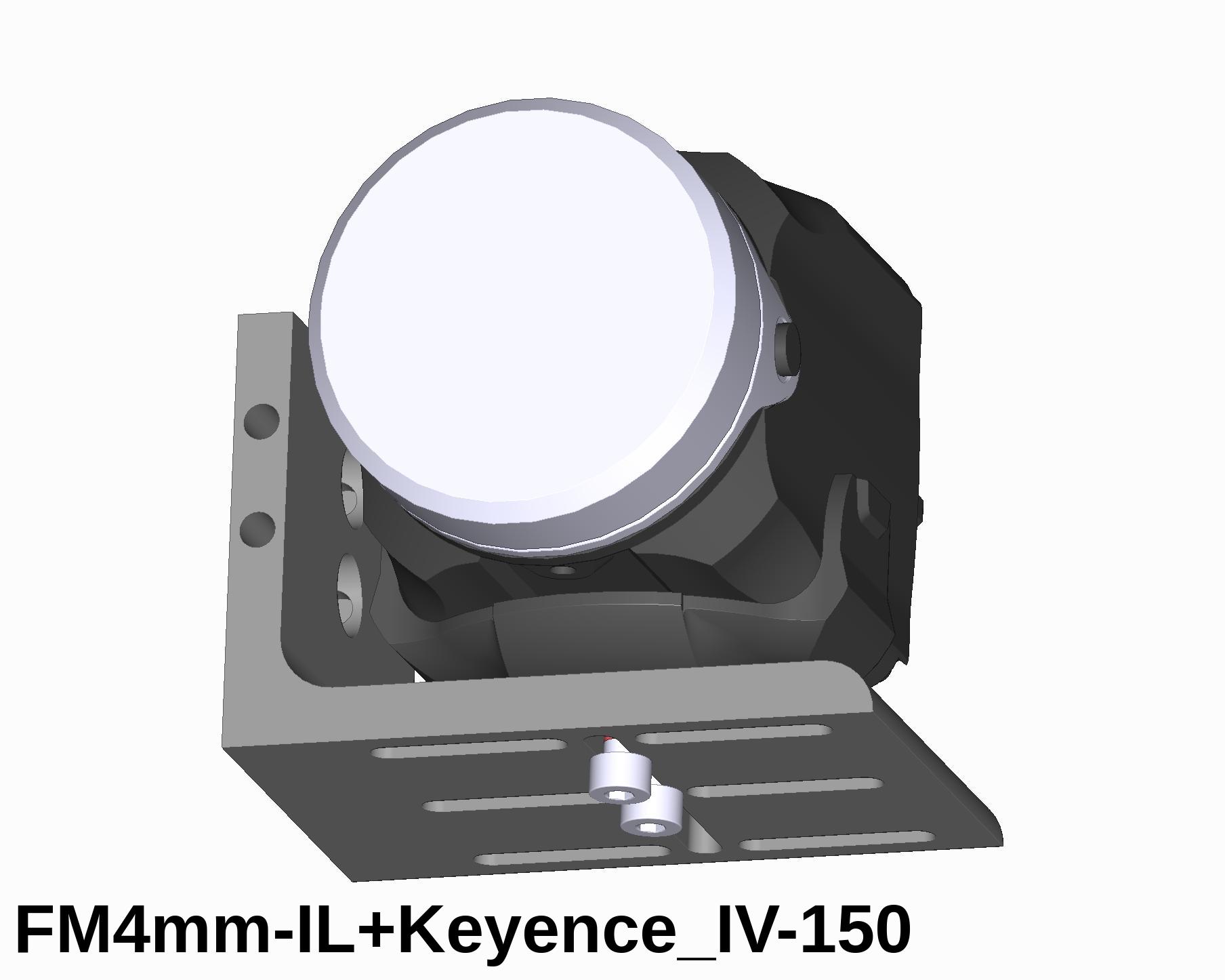
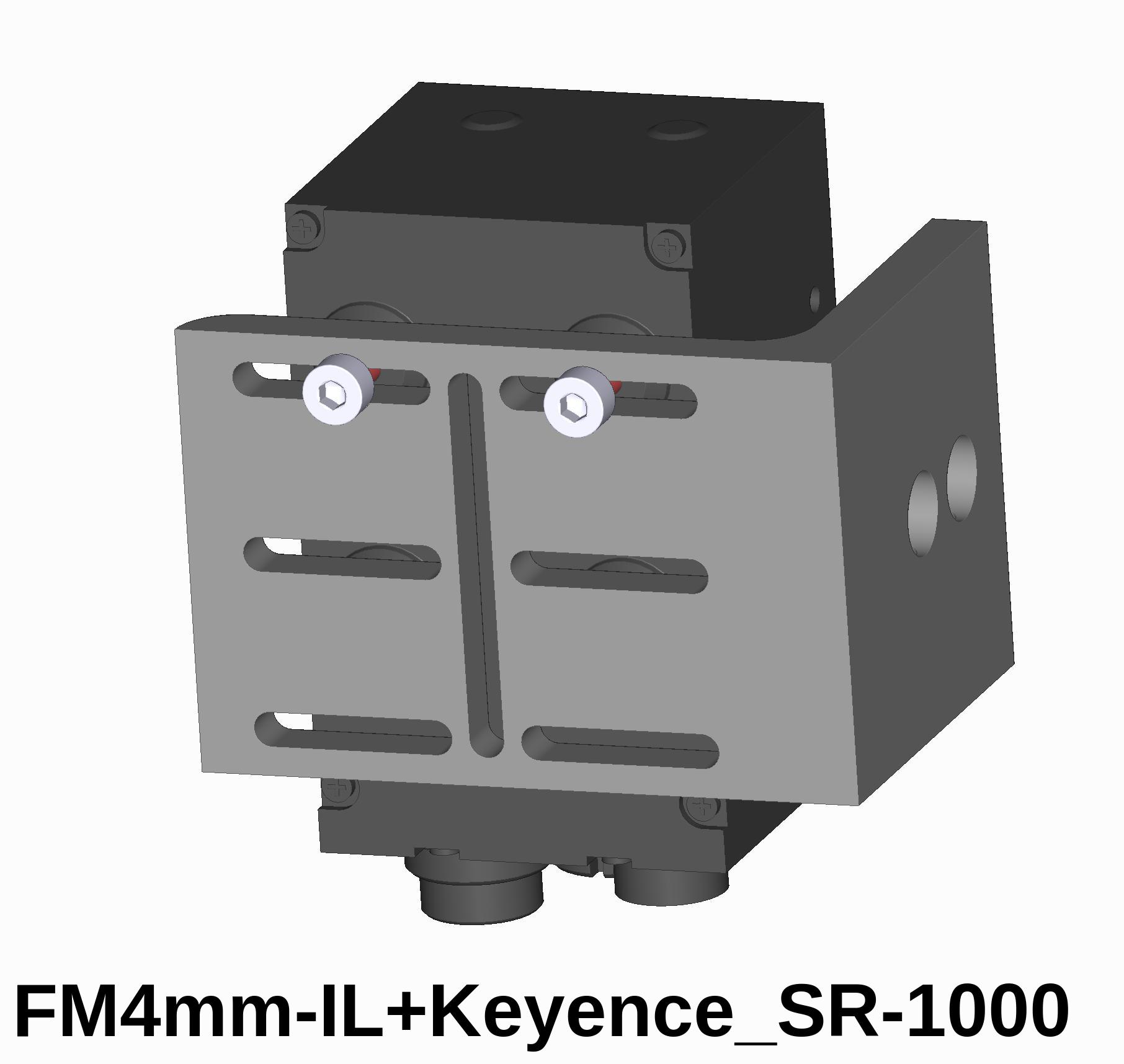


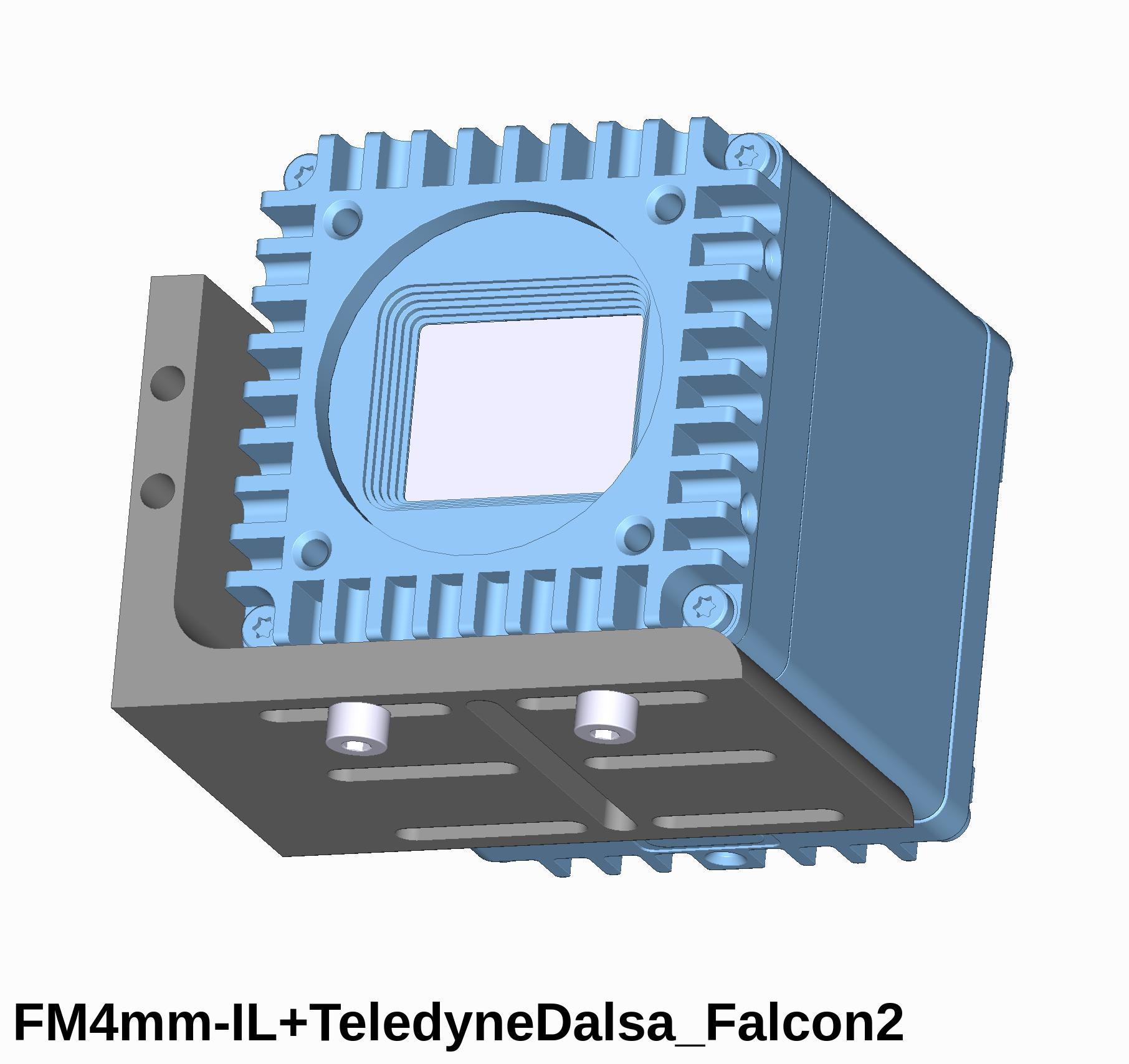




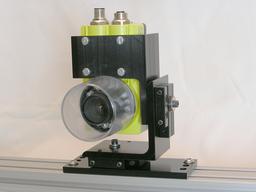
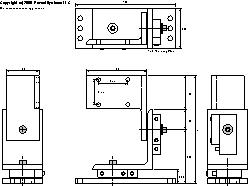






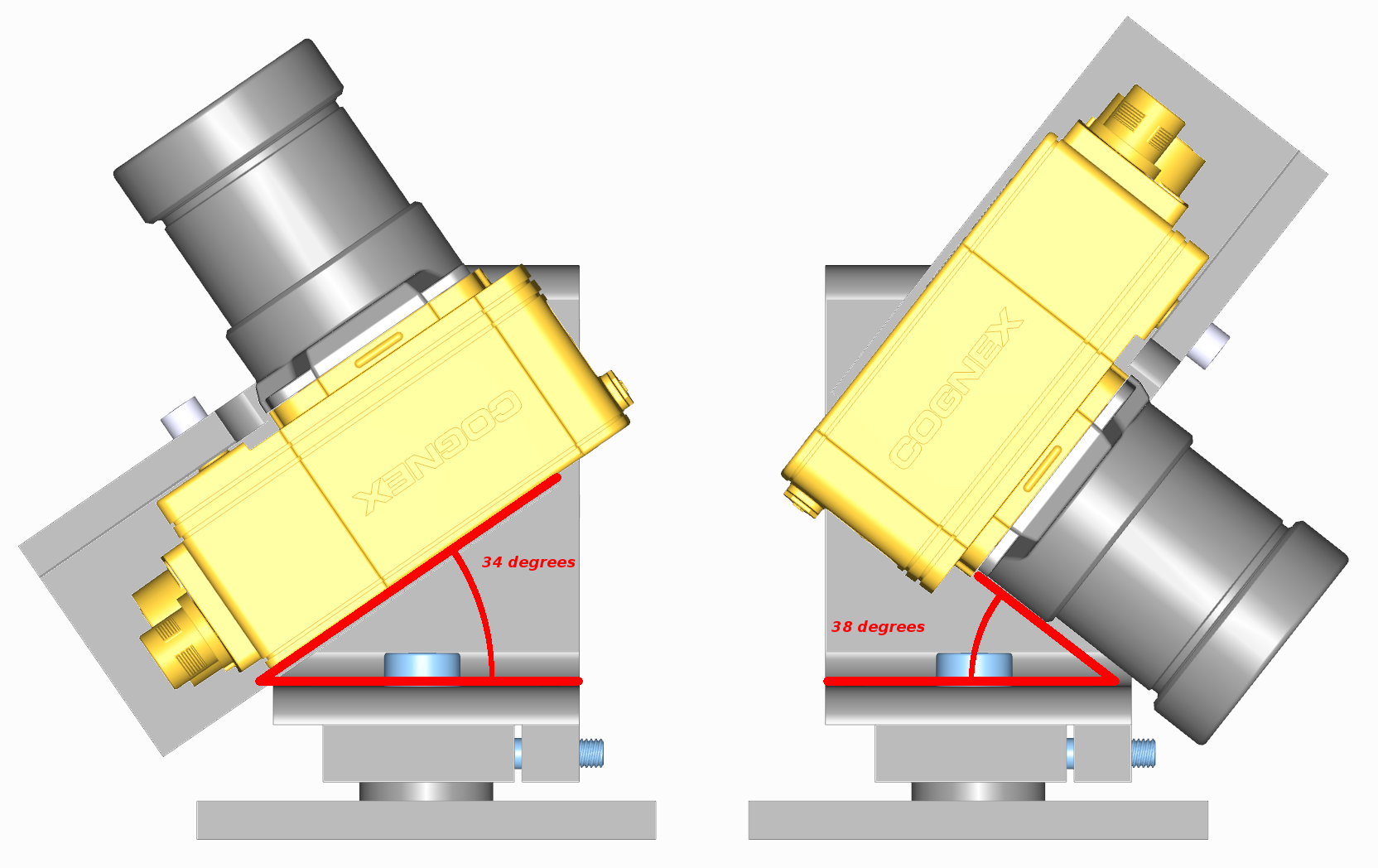






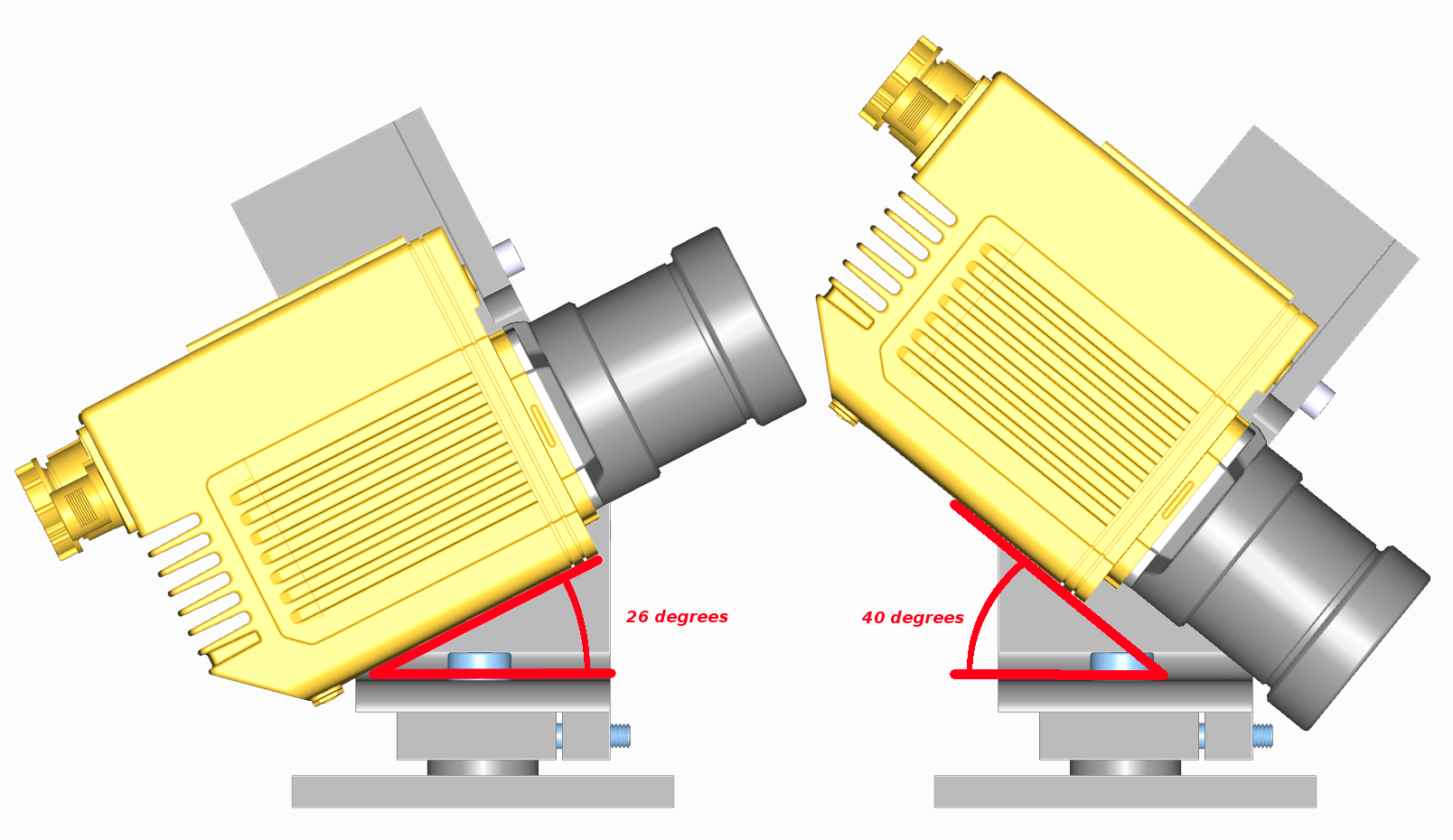


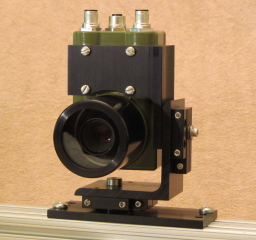


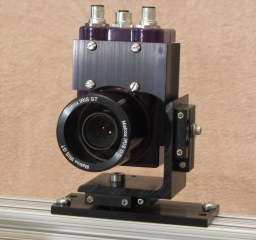



 See-through indexes.
See-through indexes.














